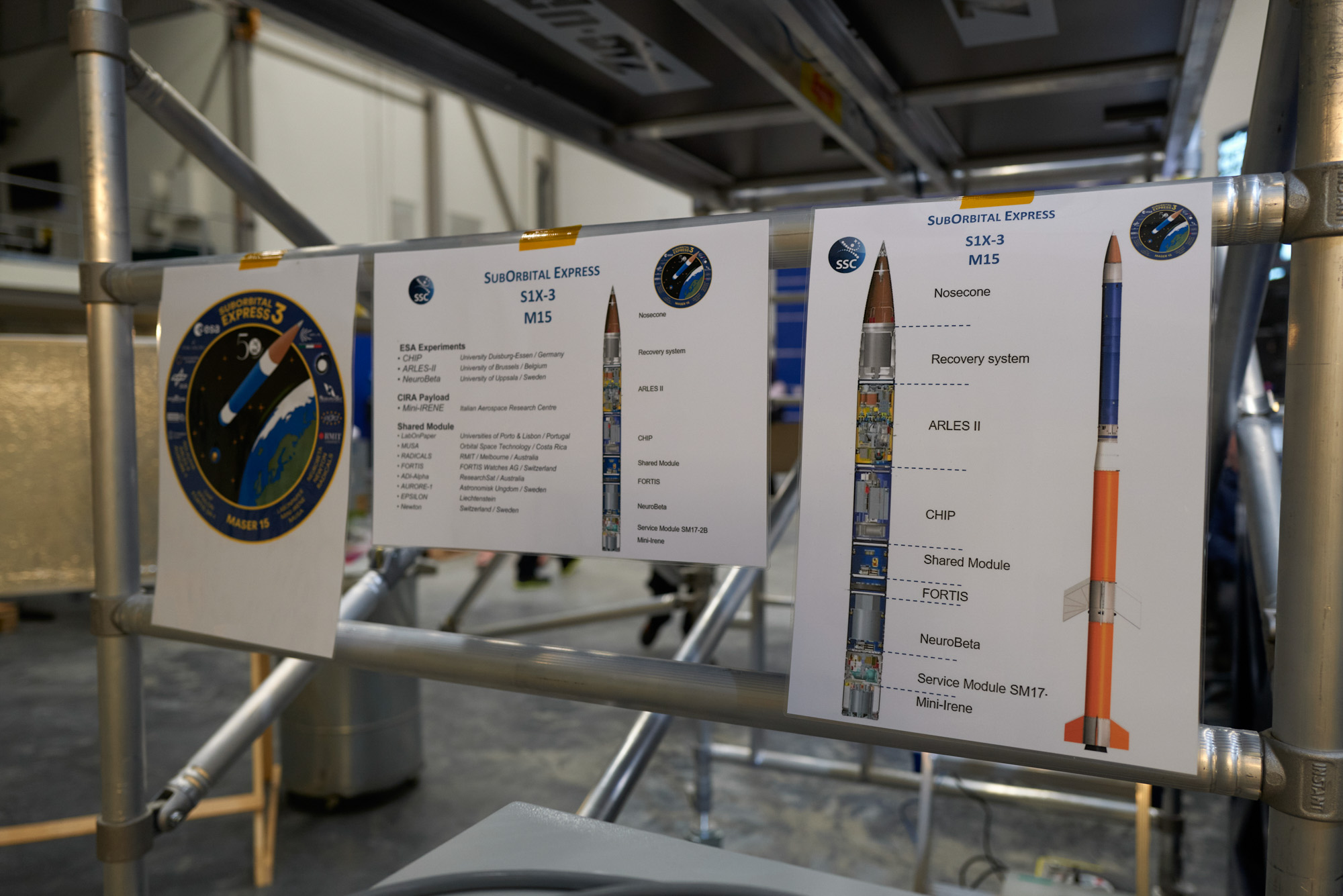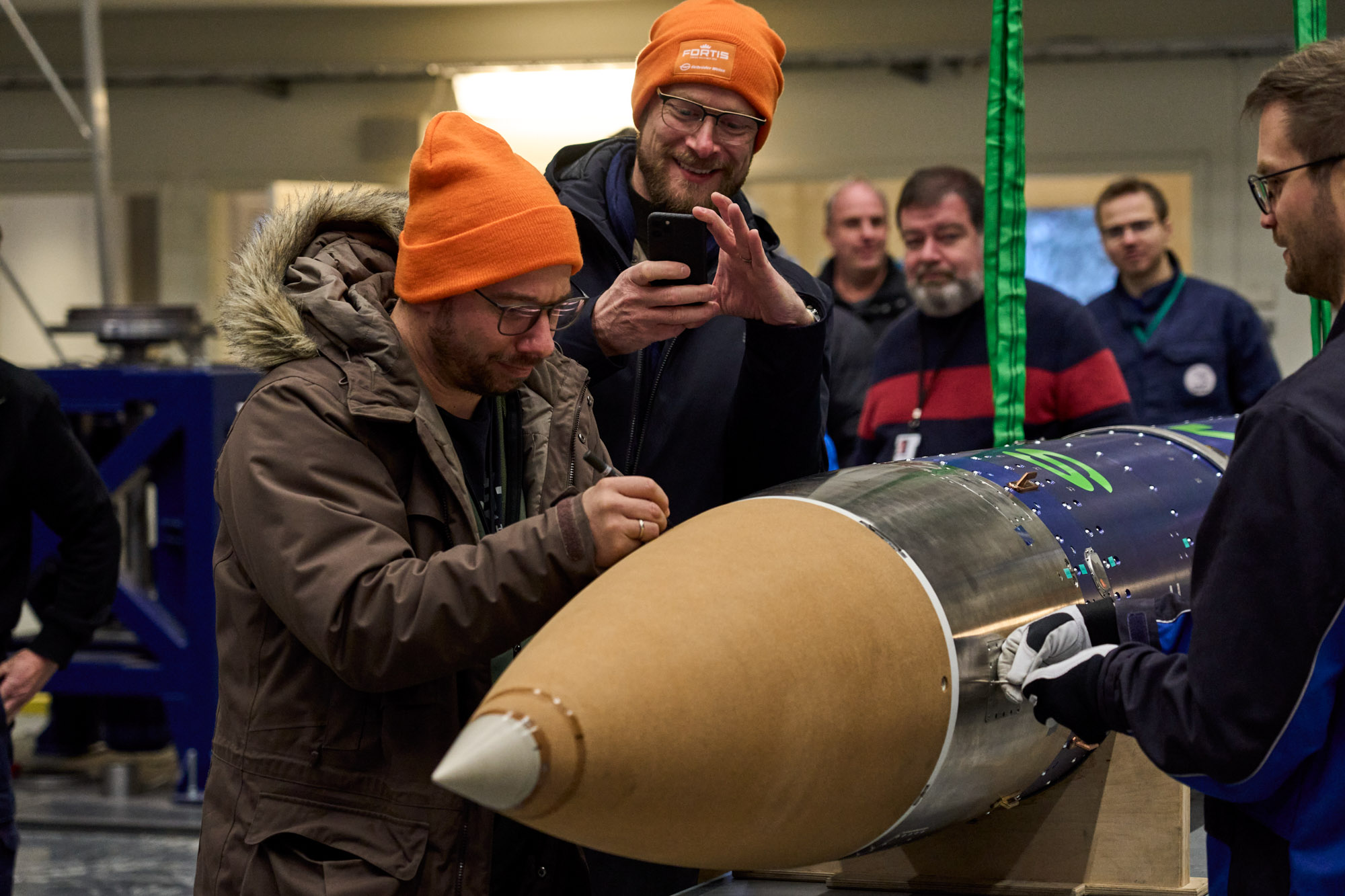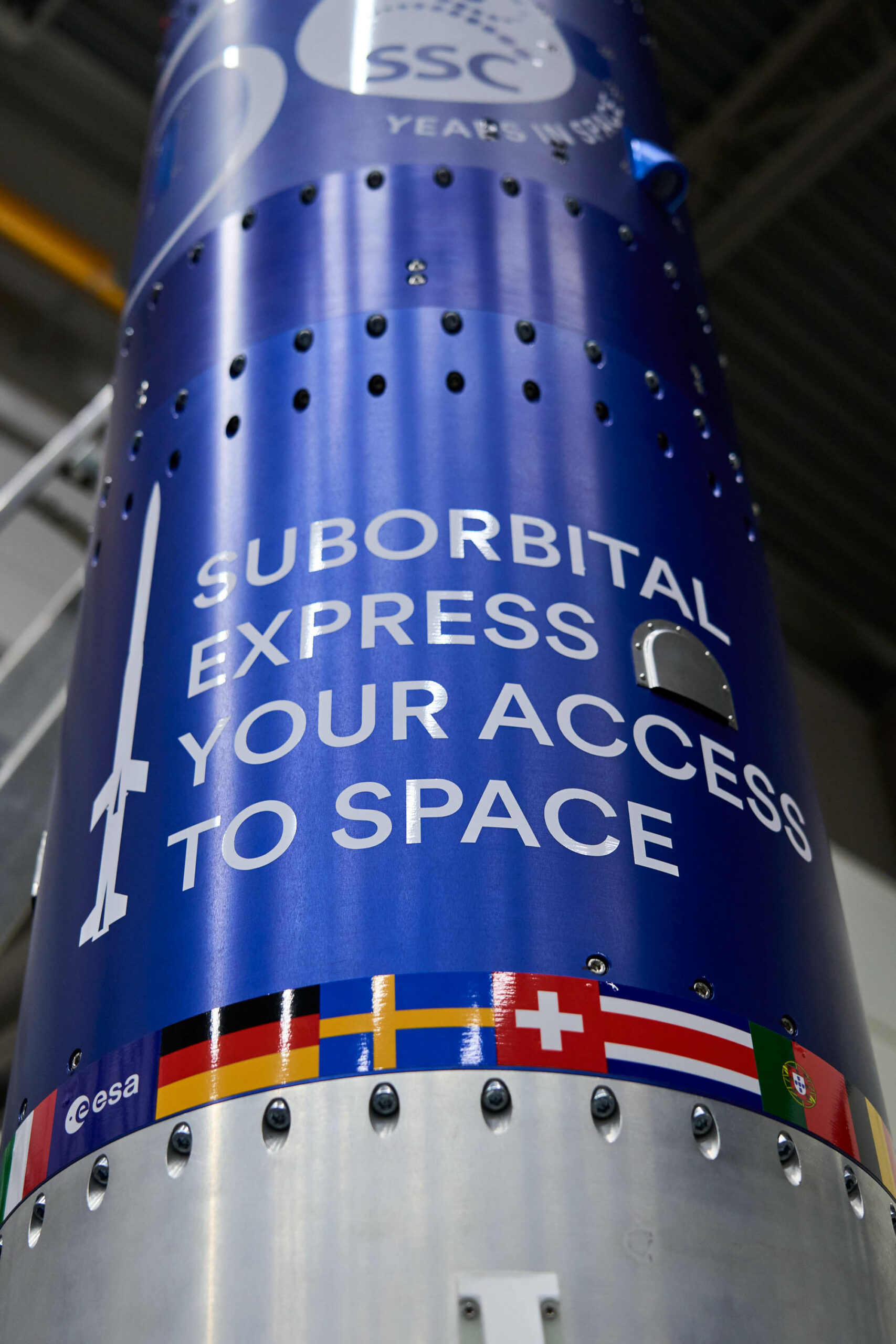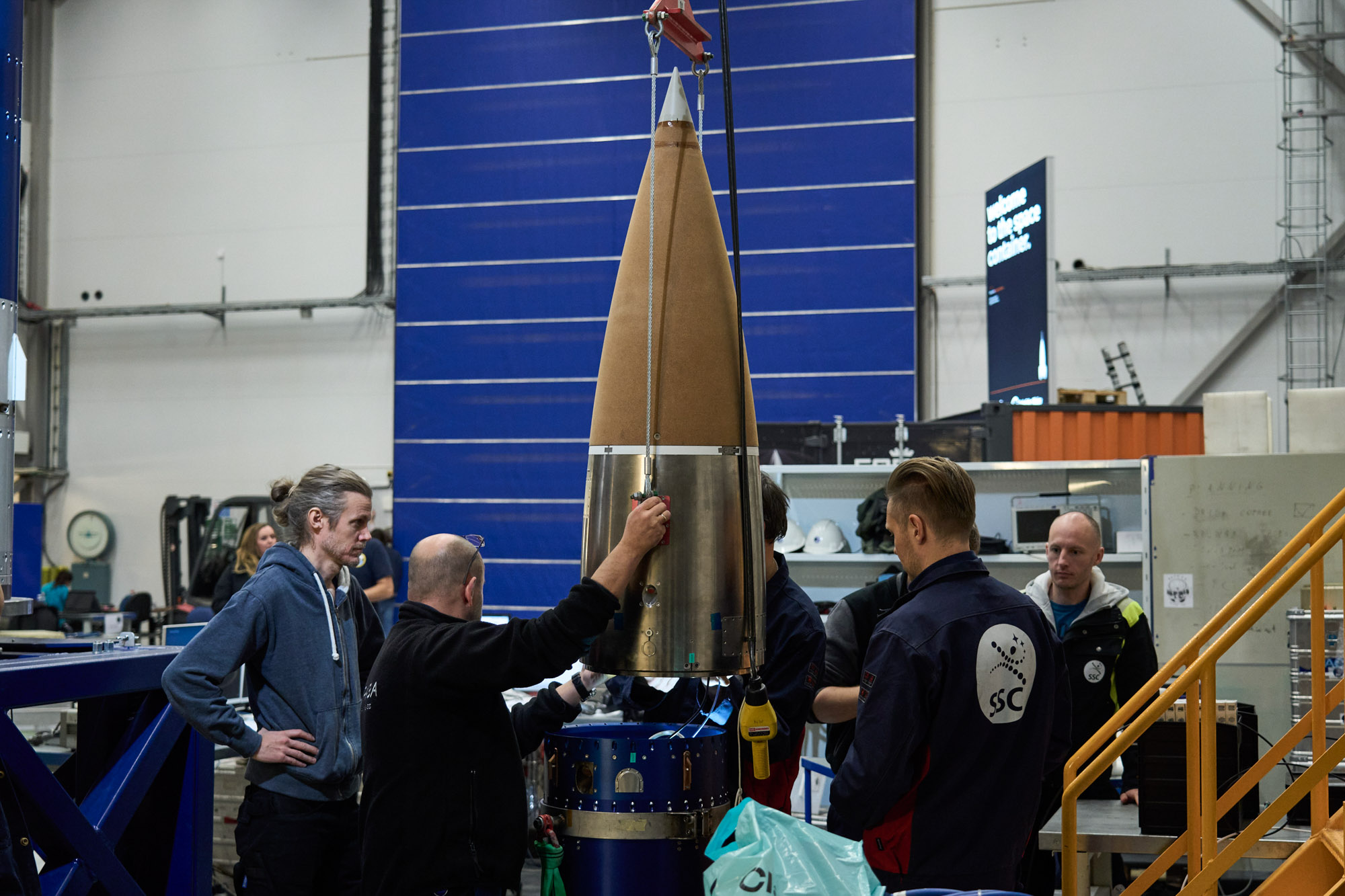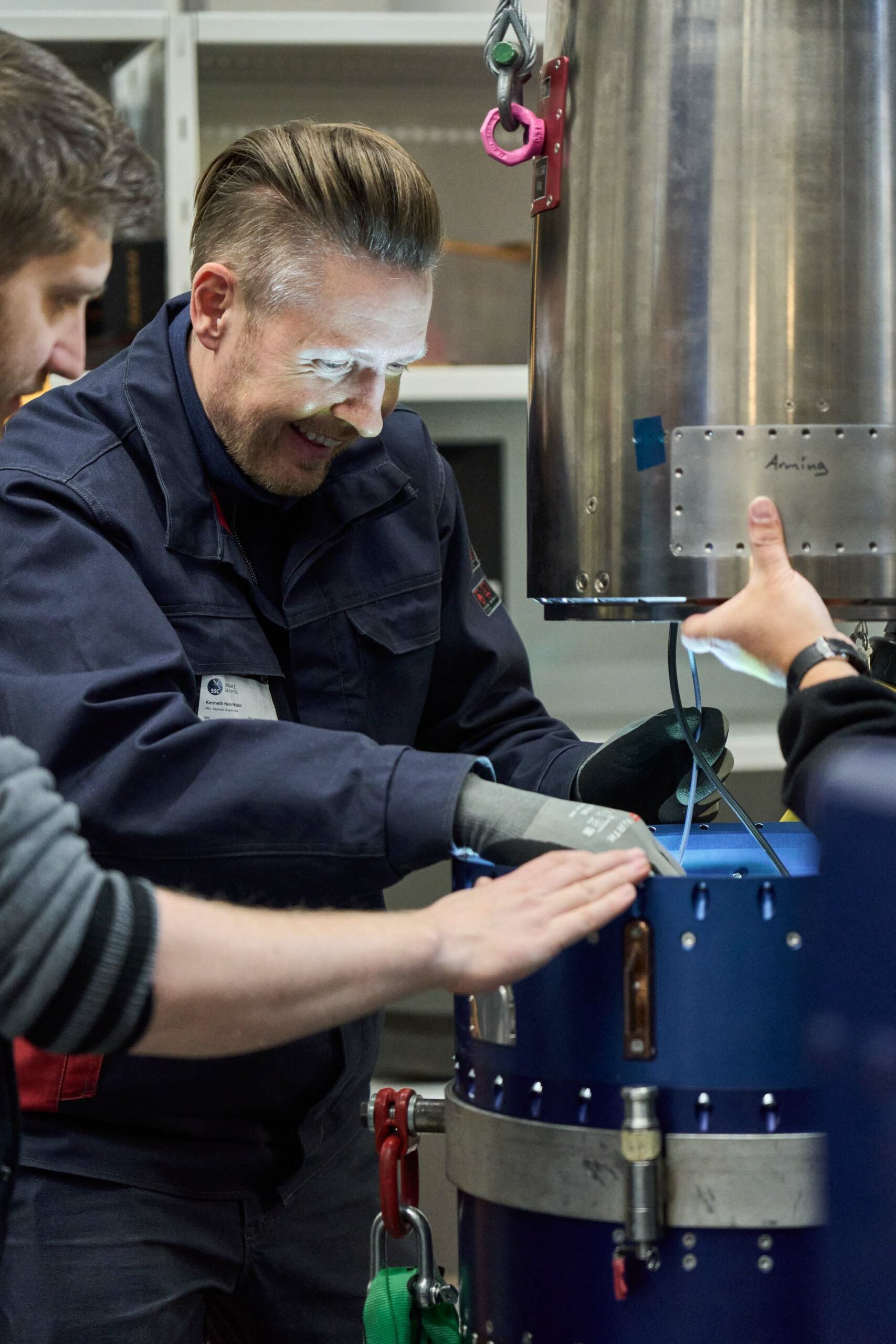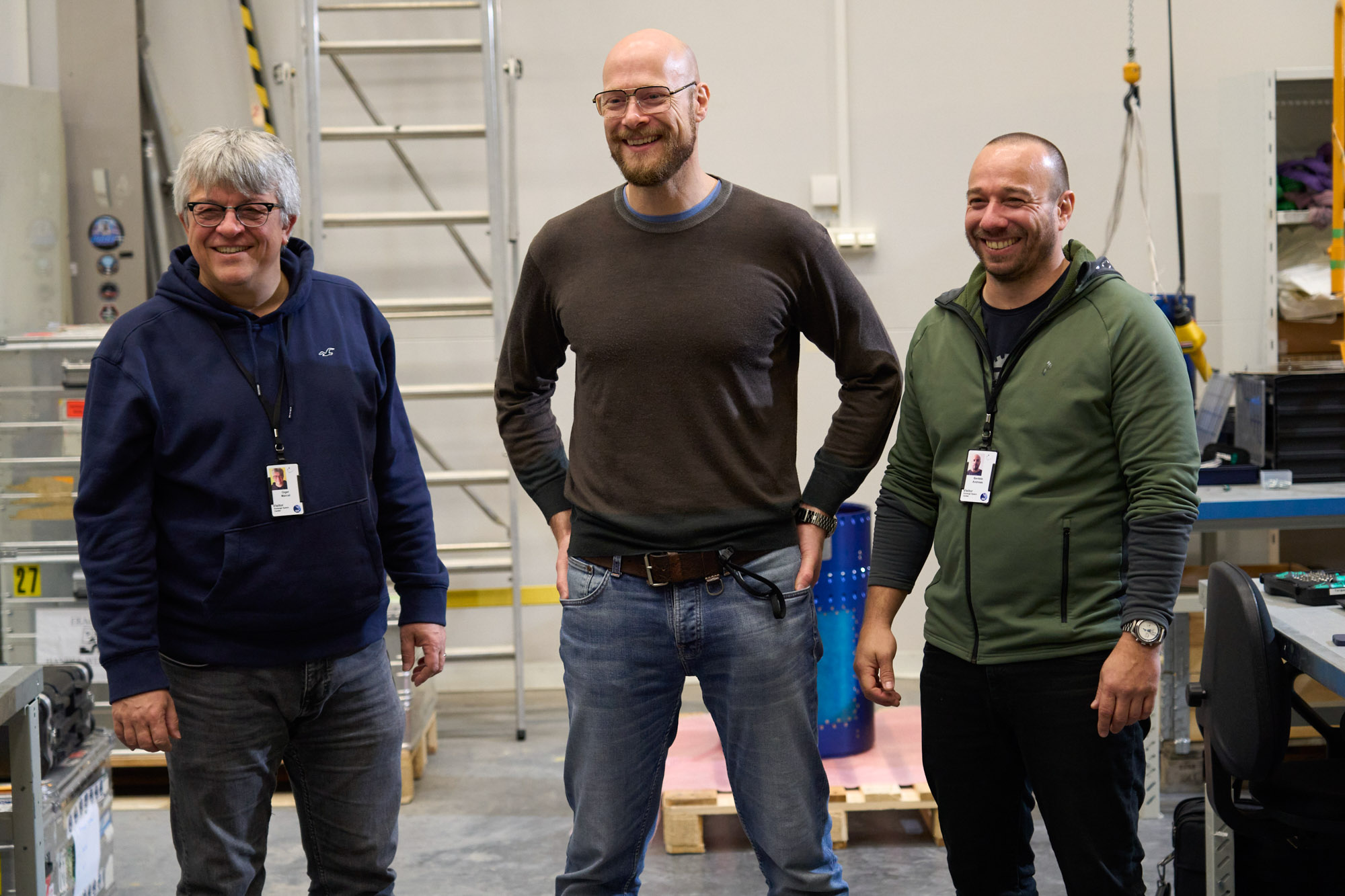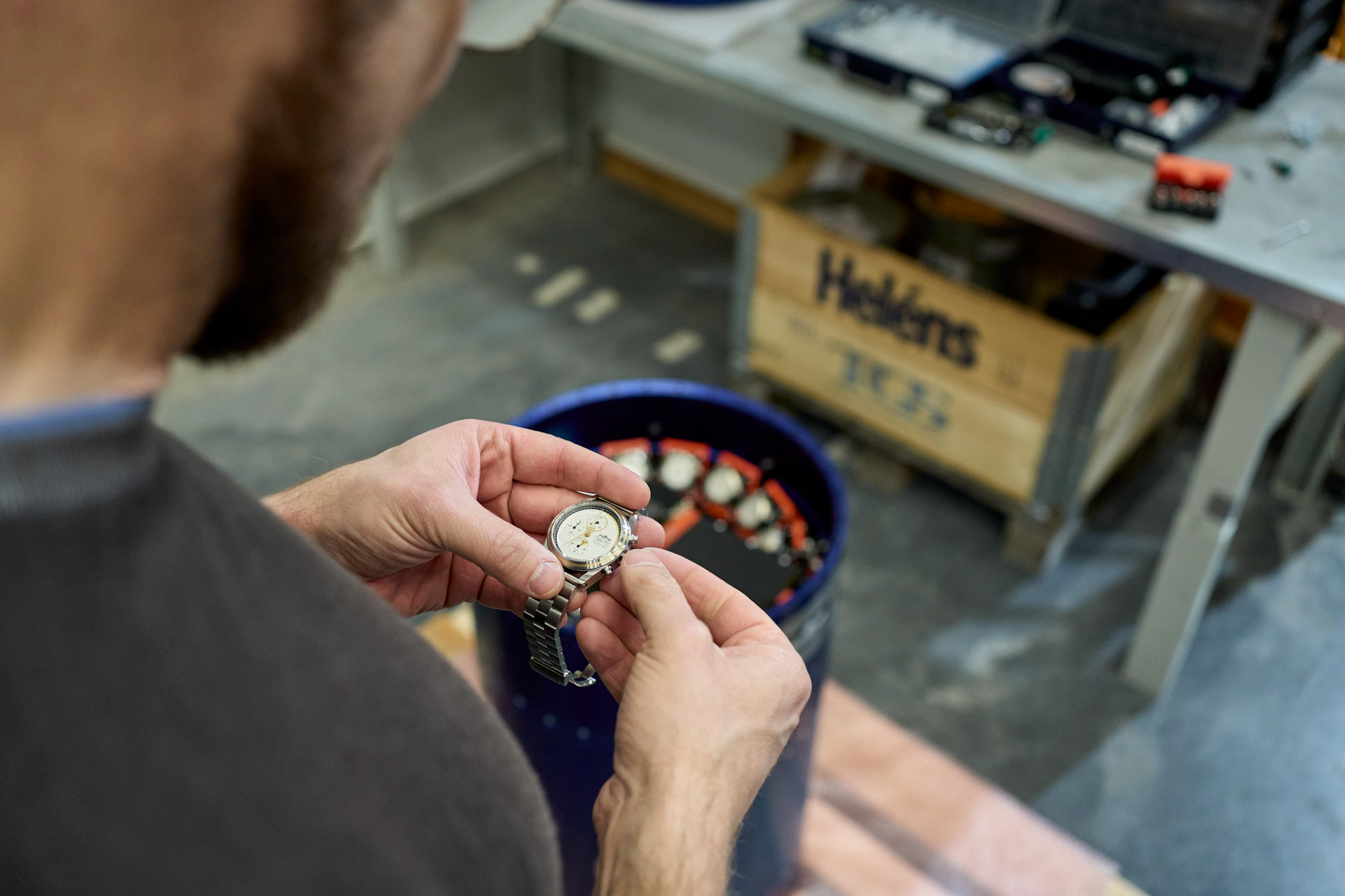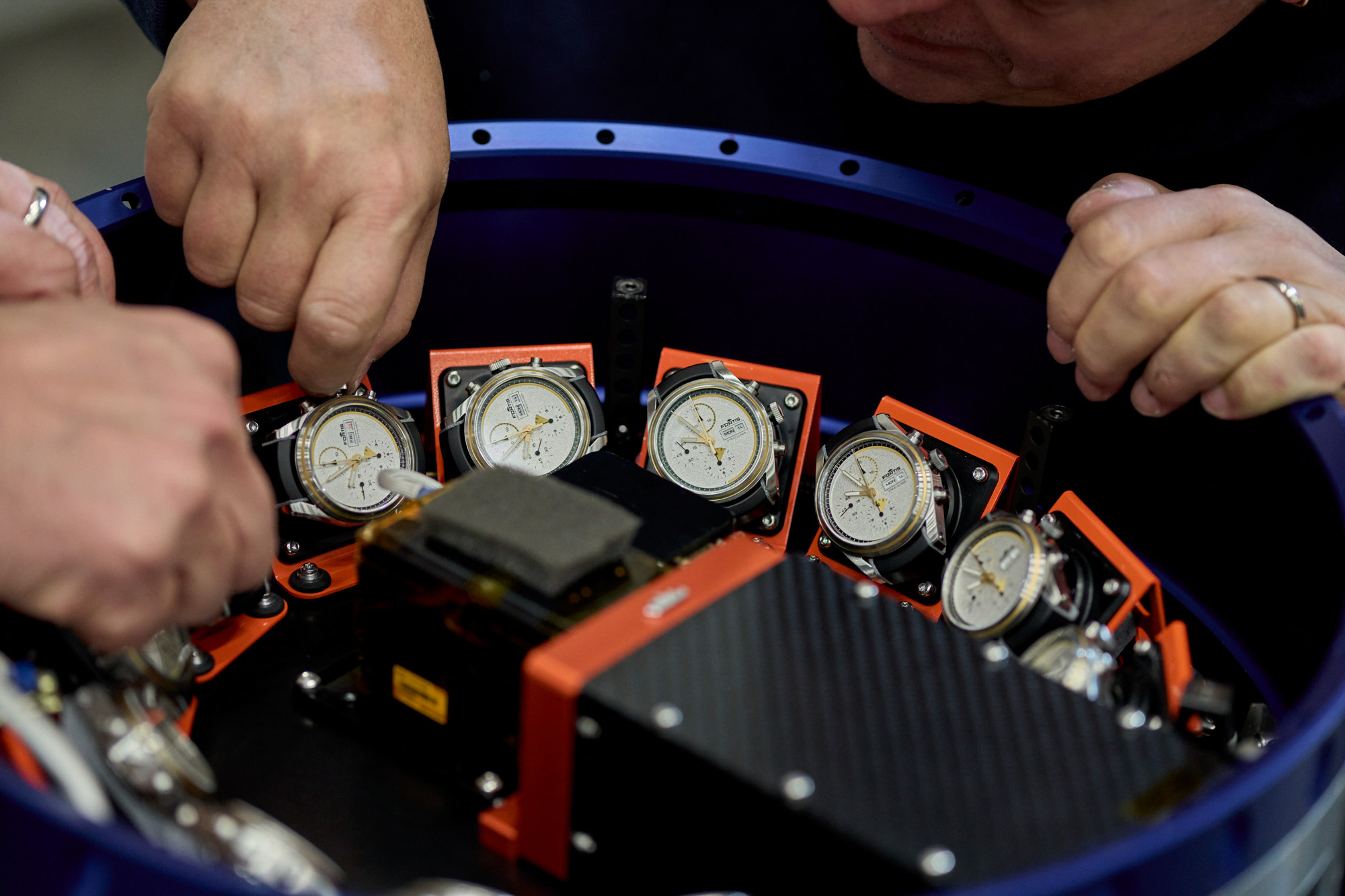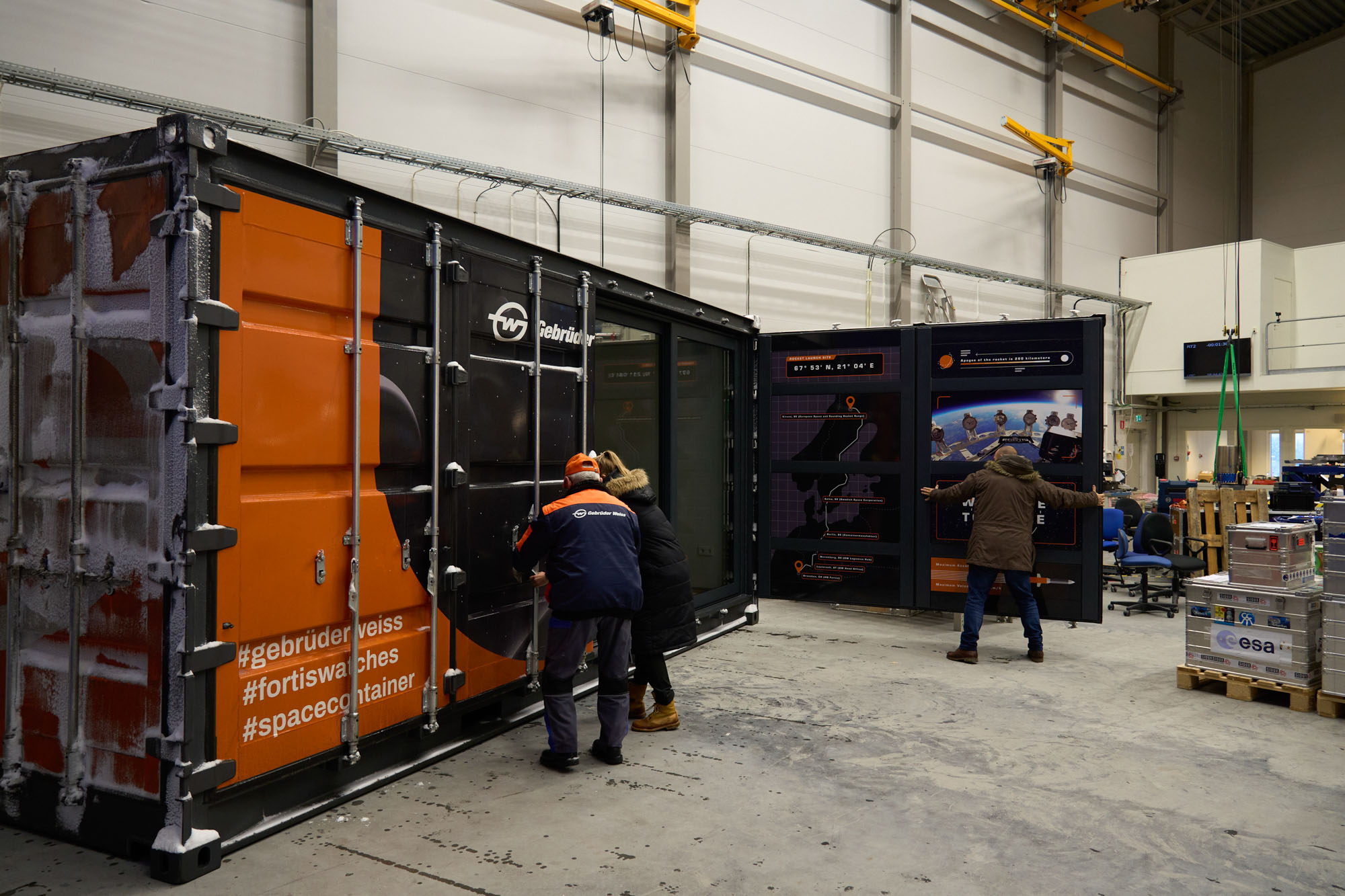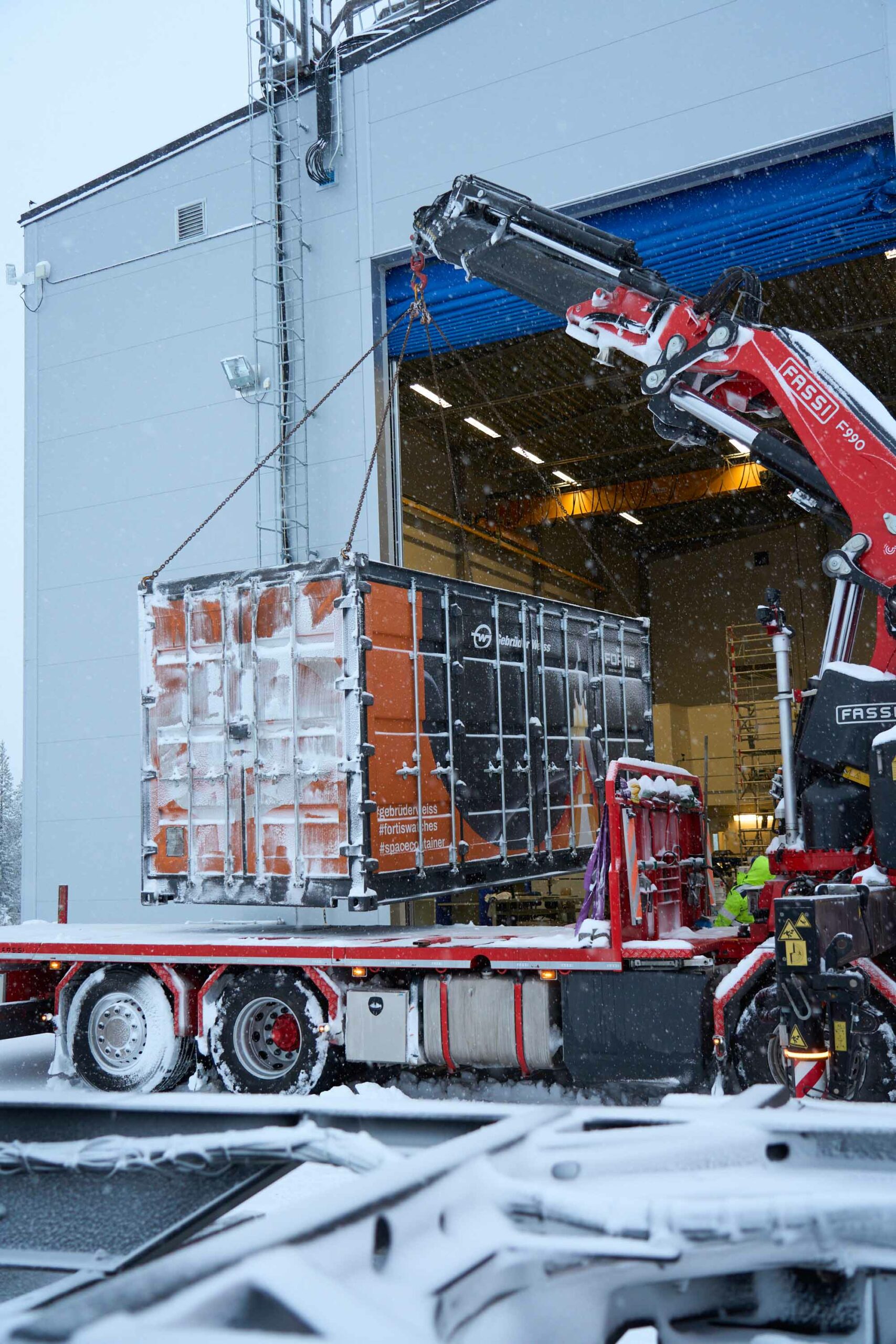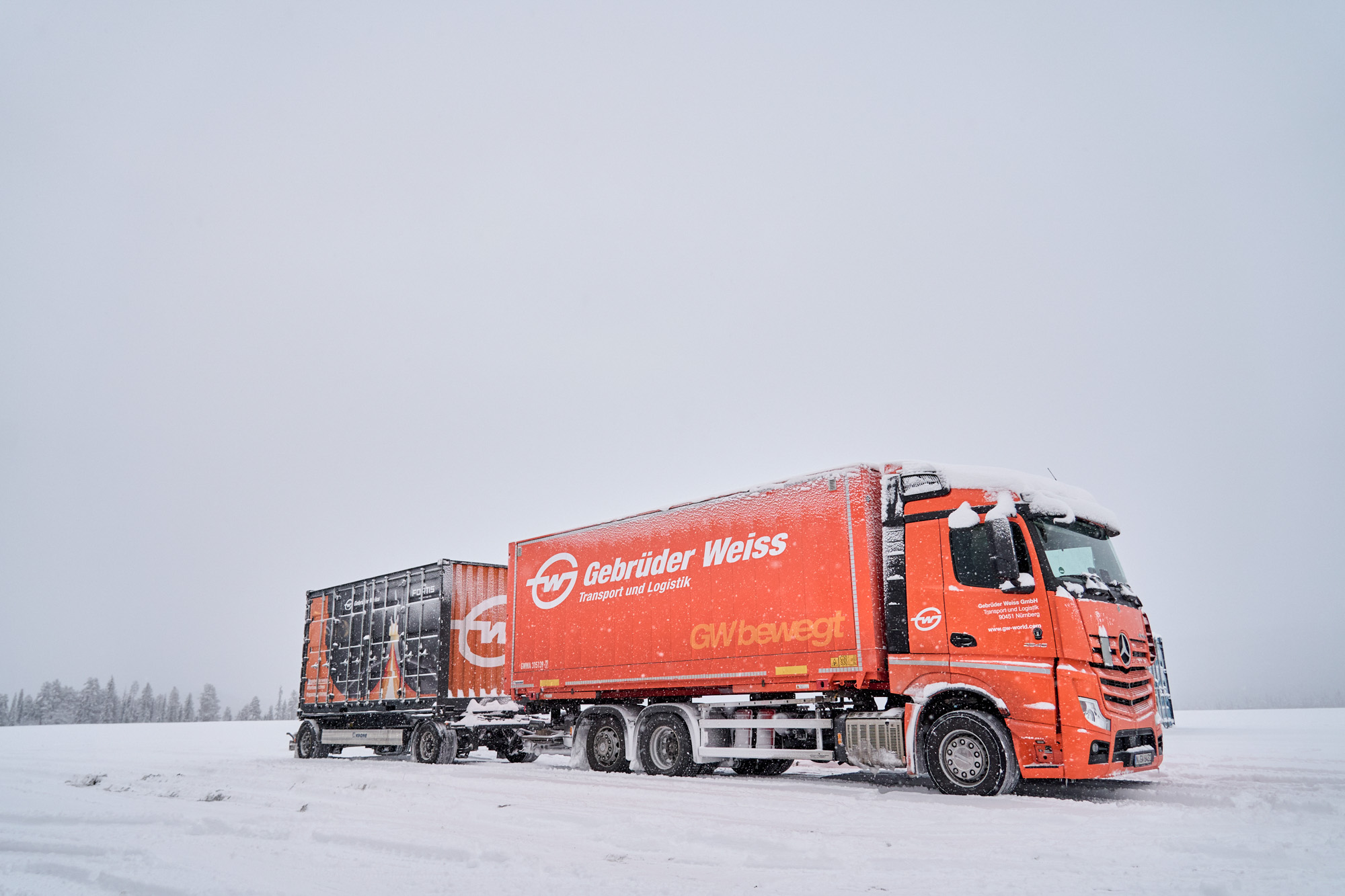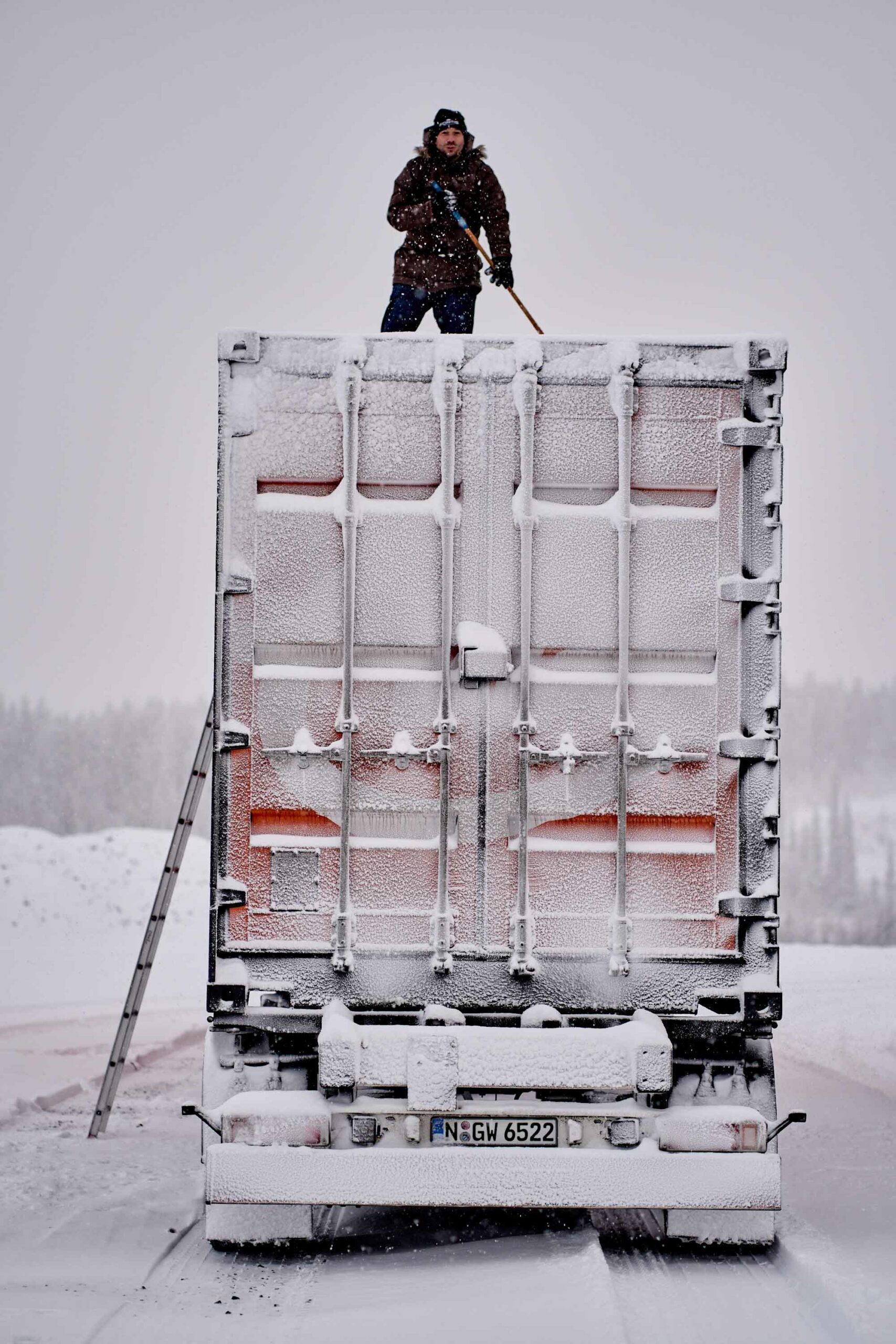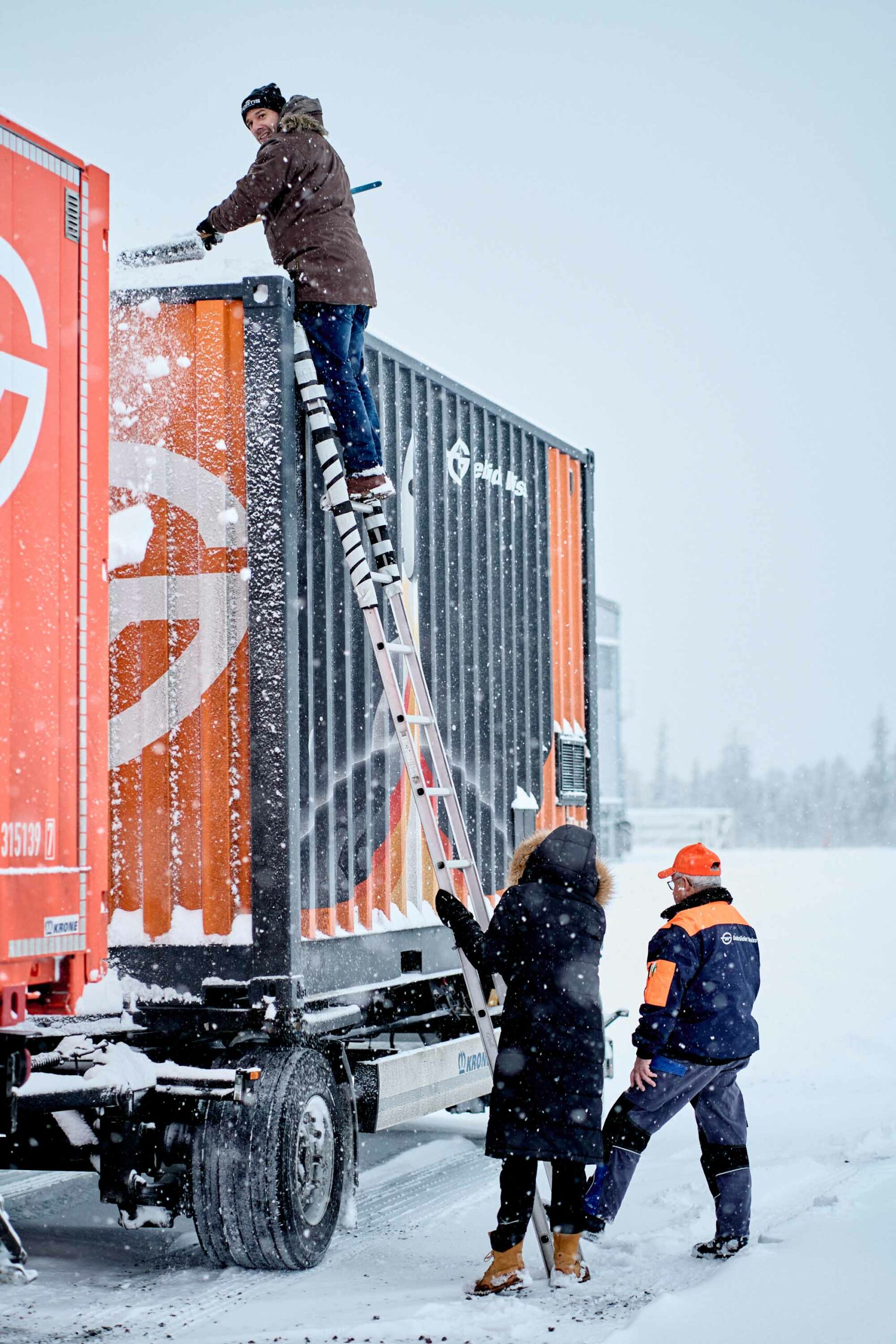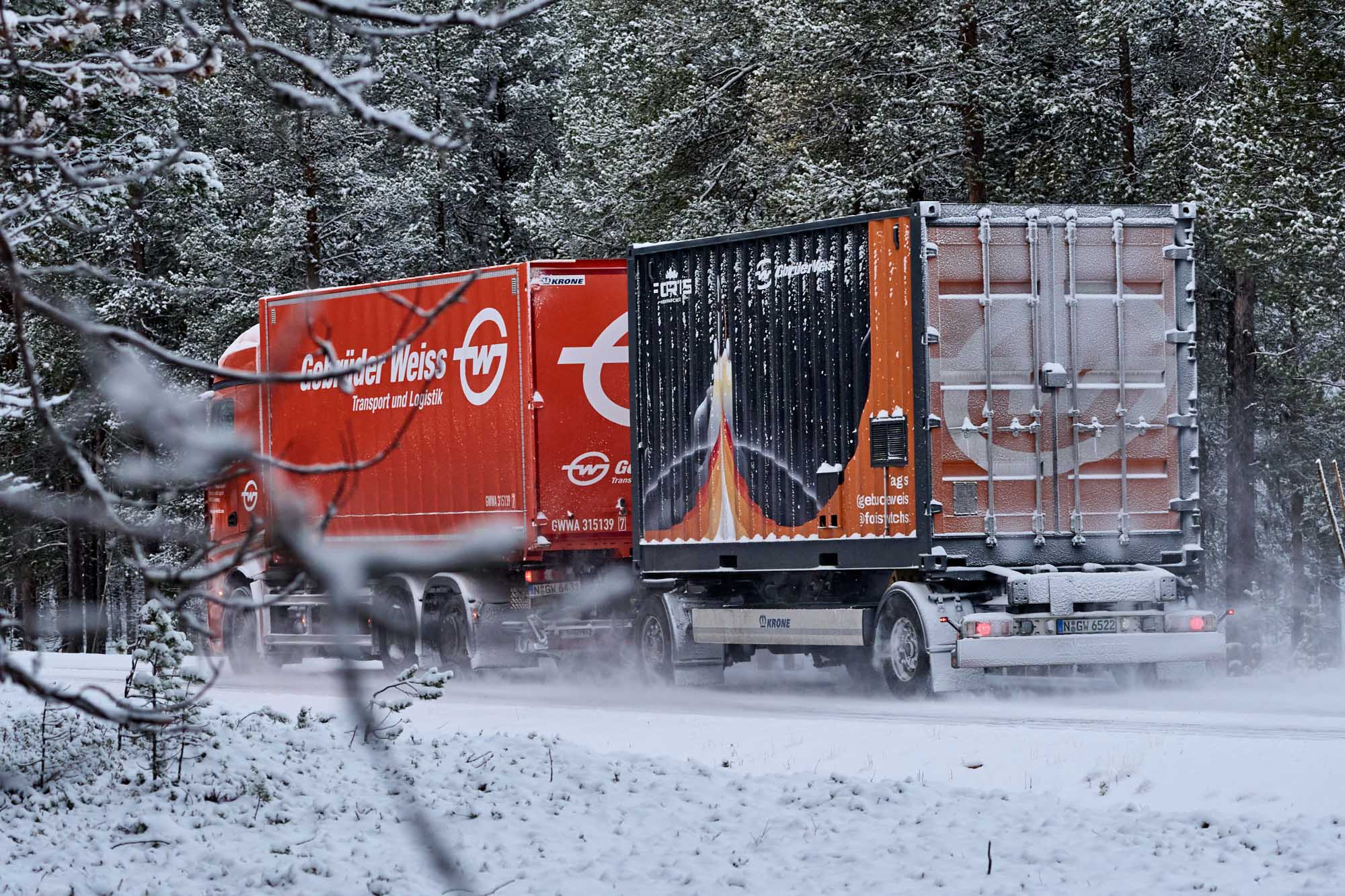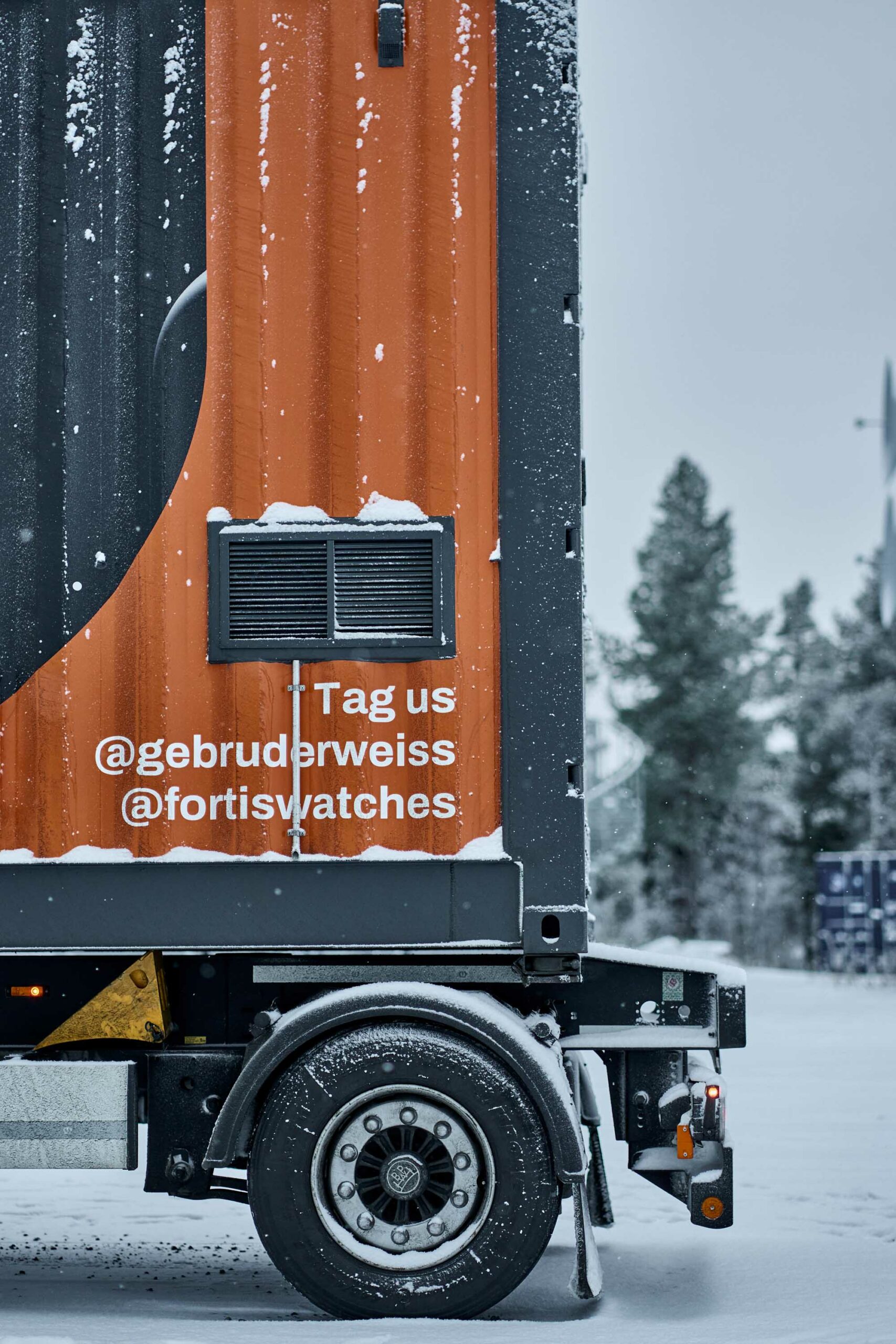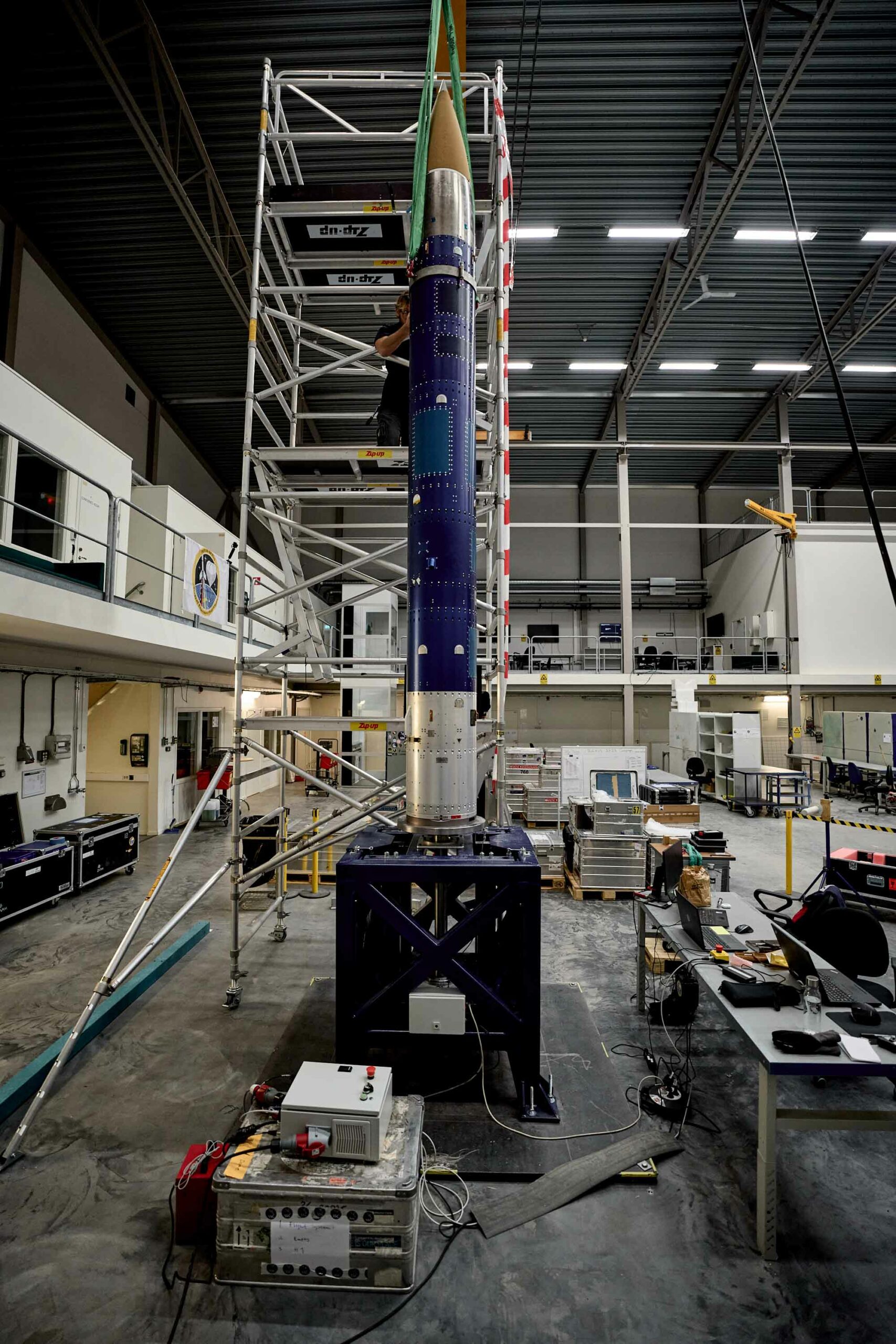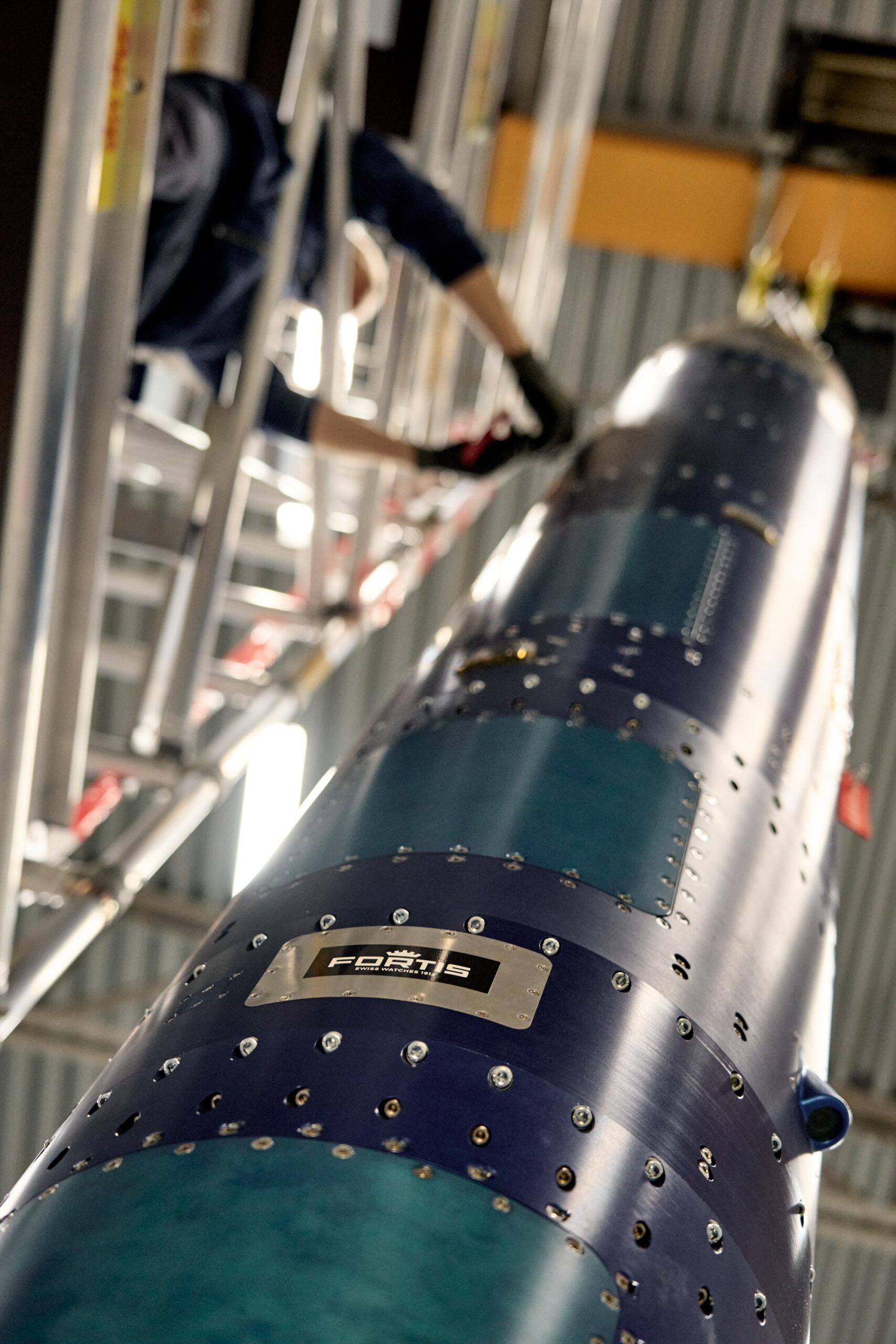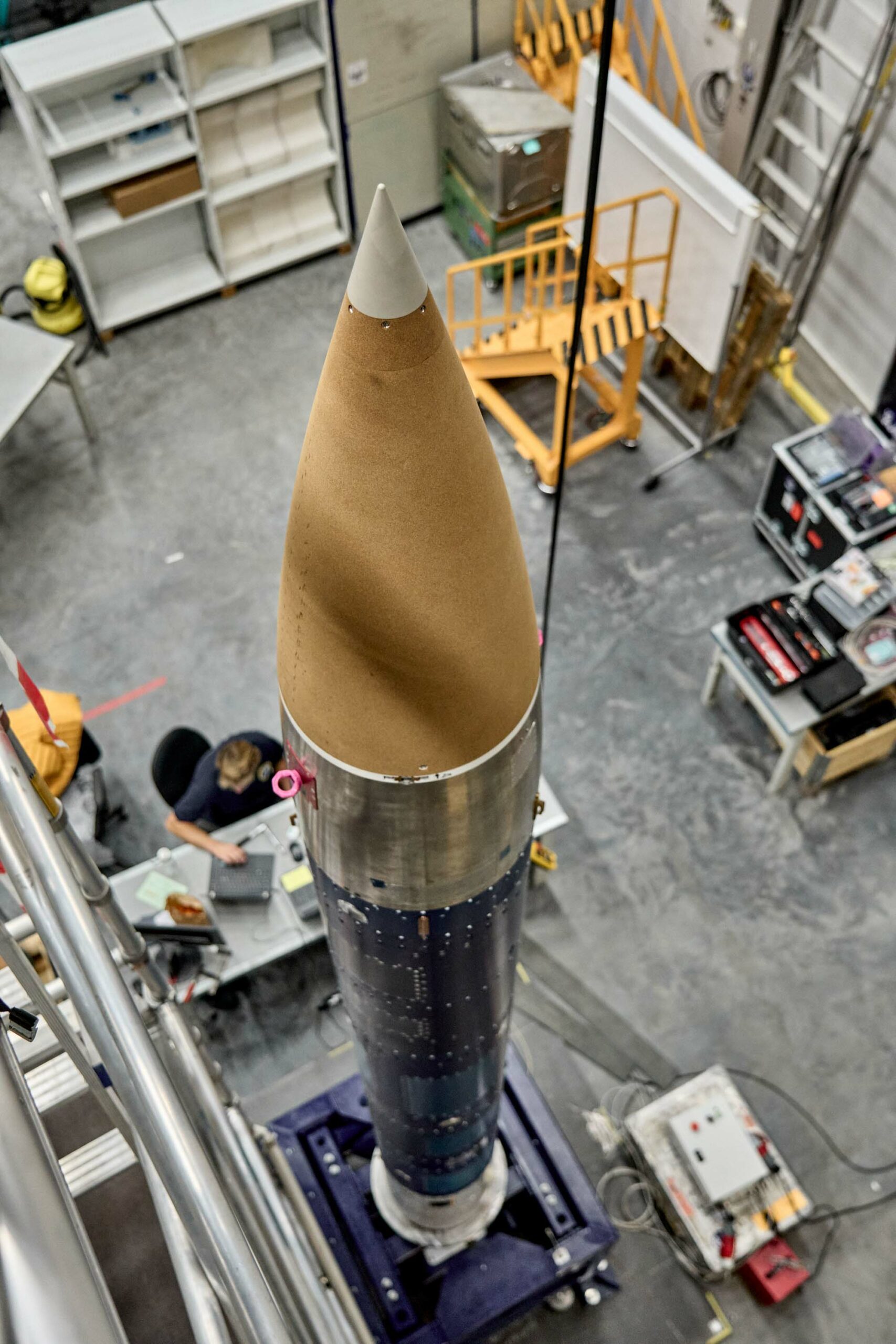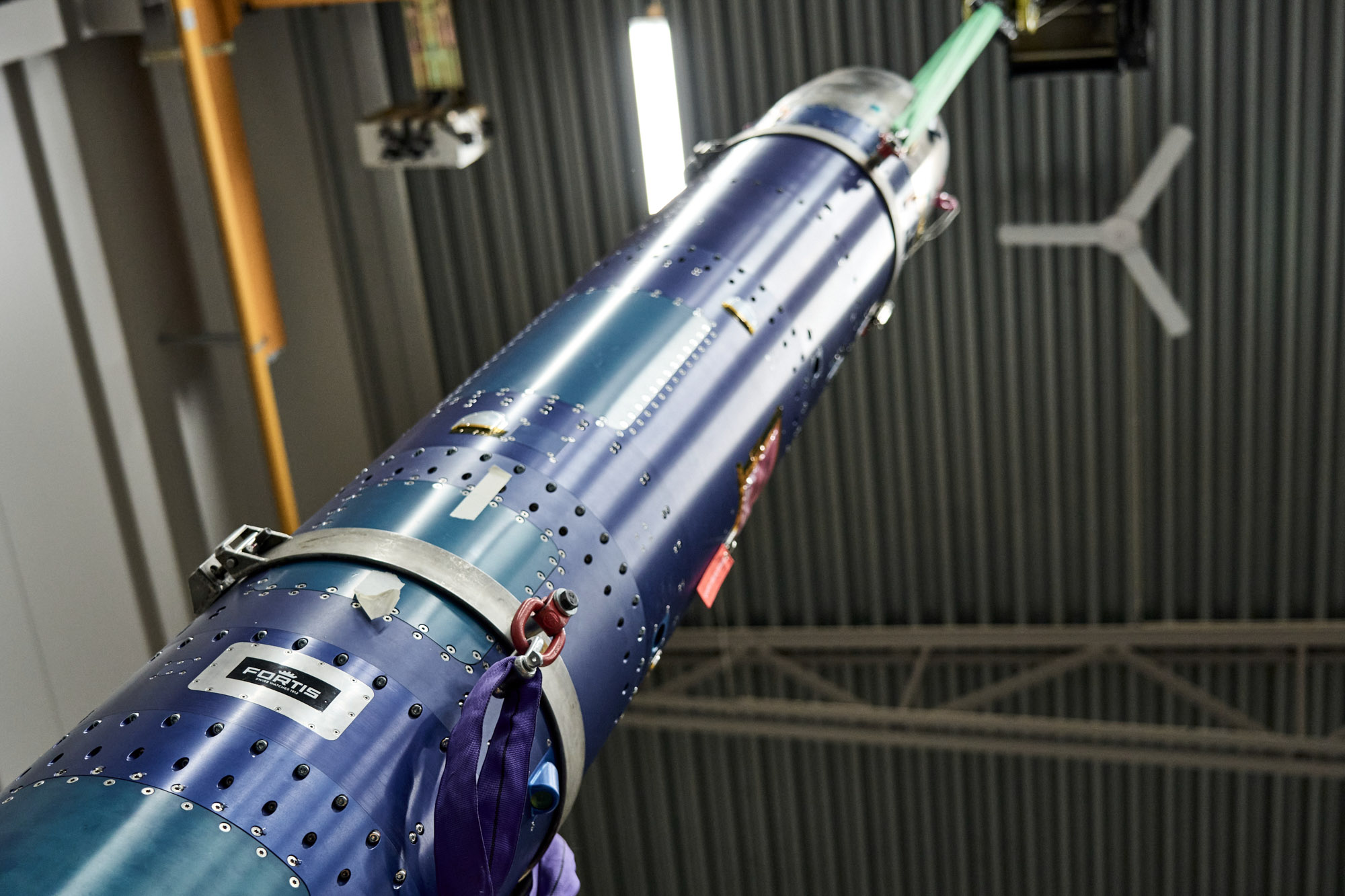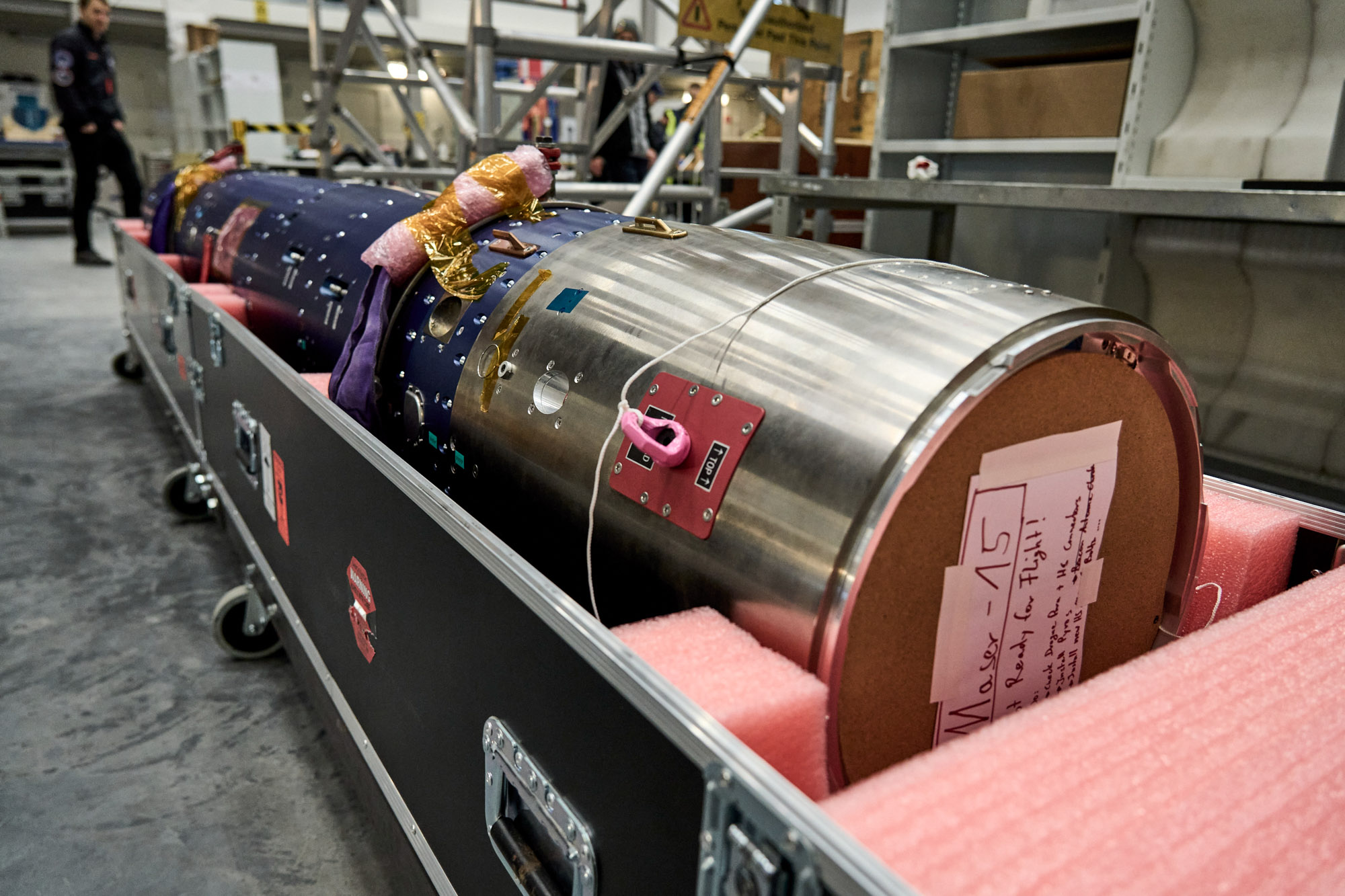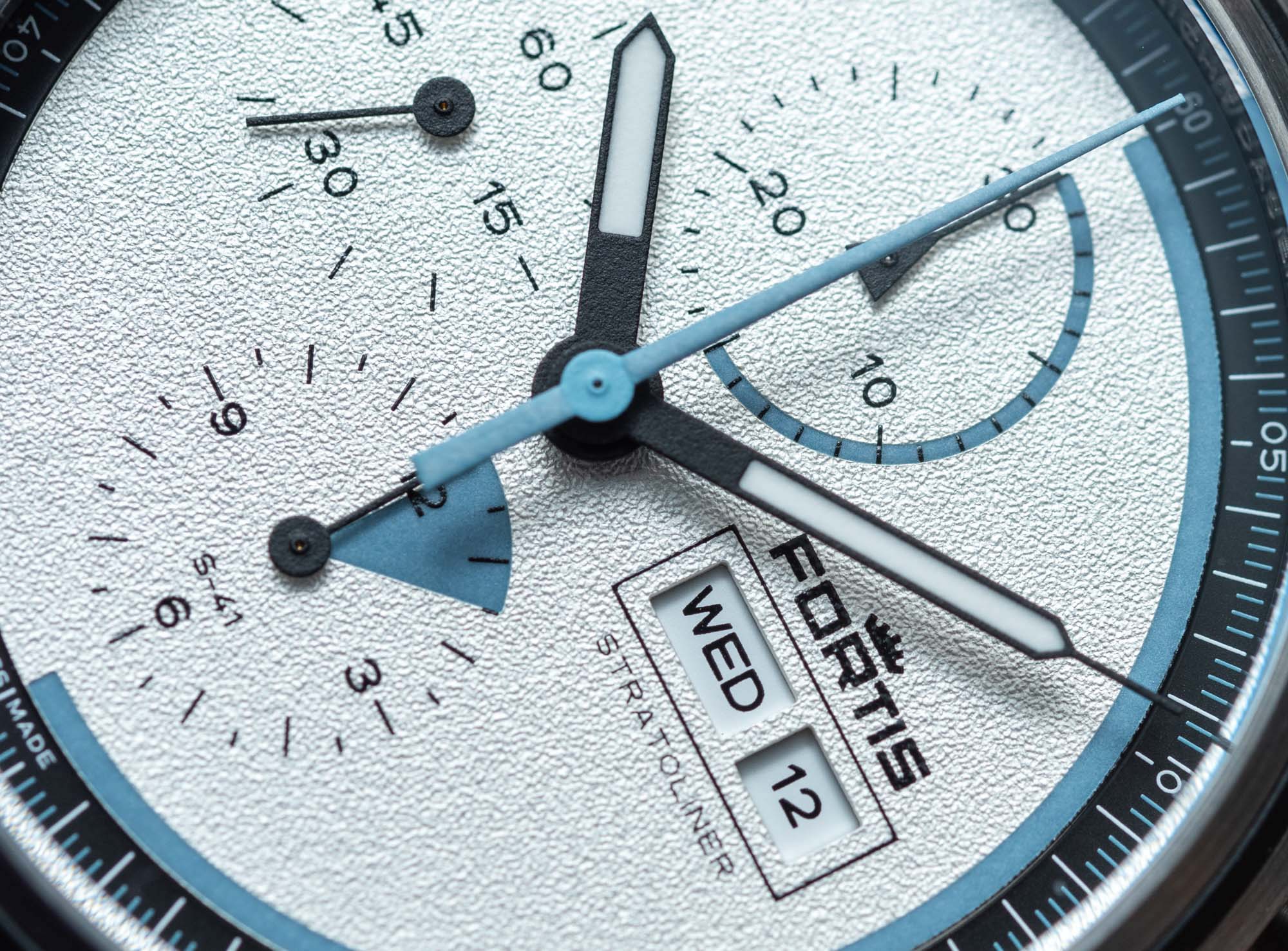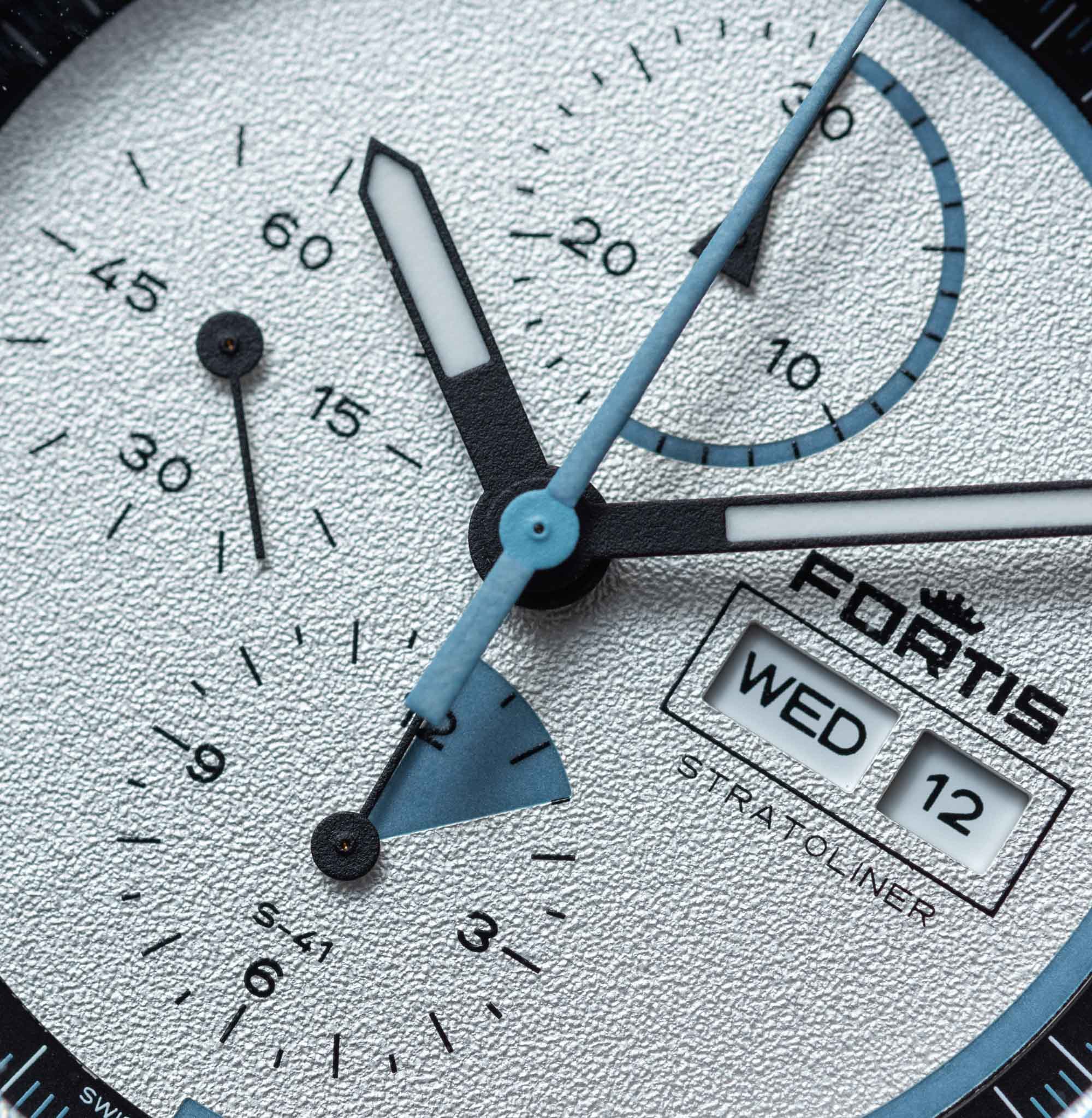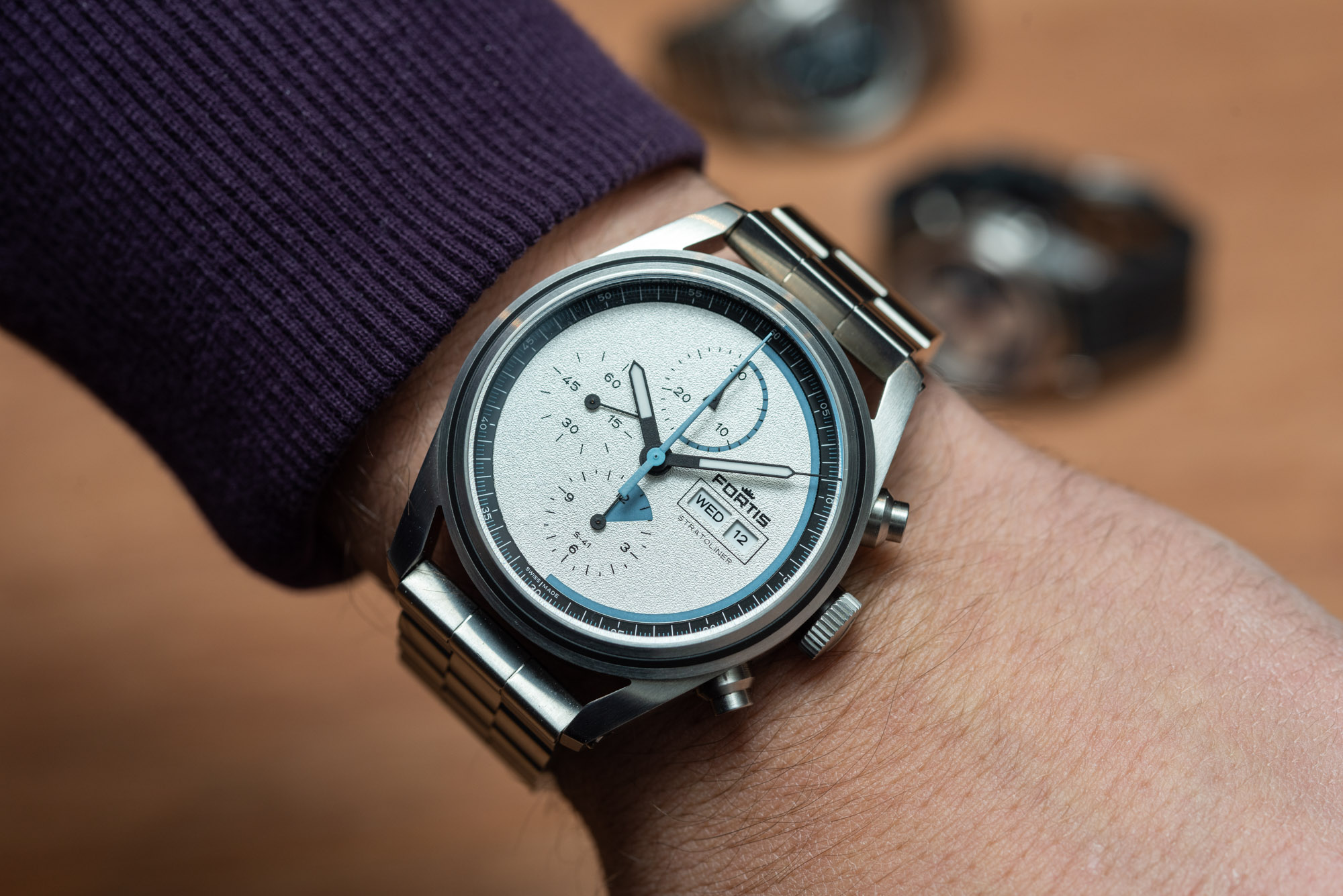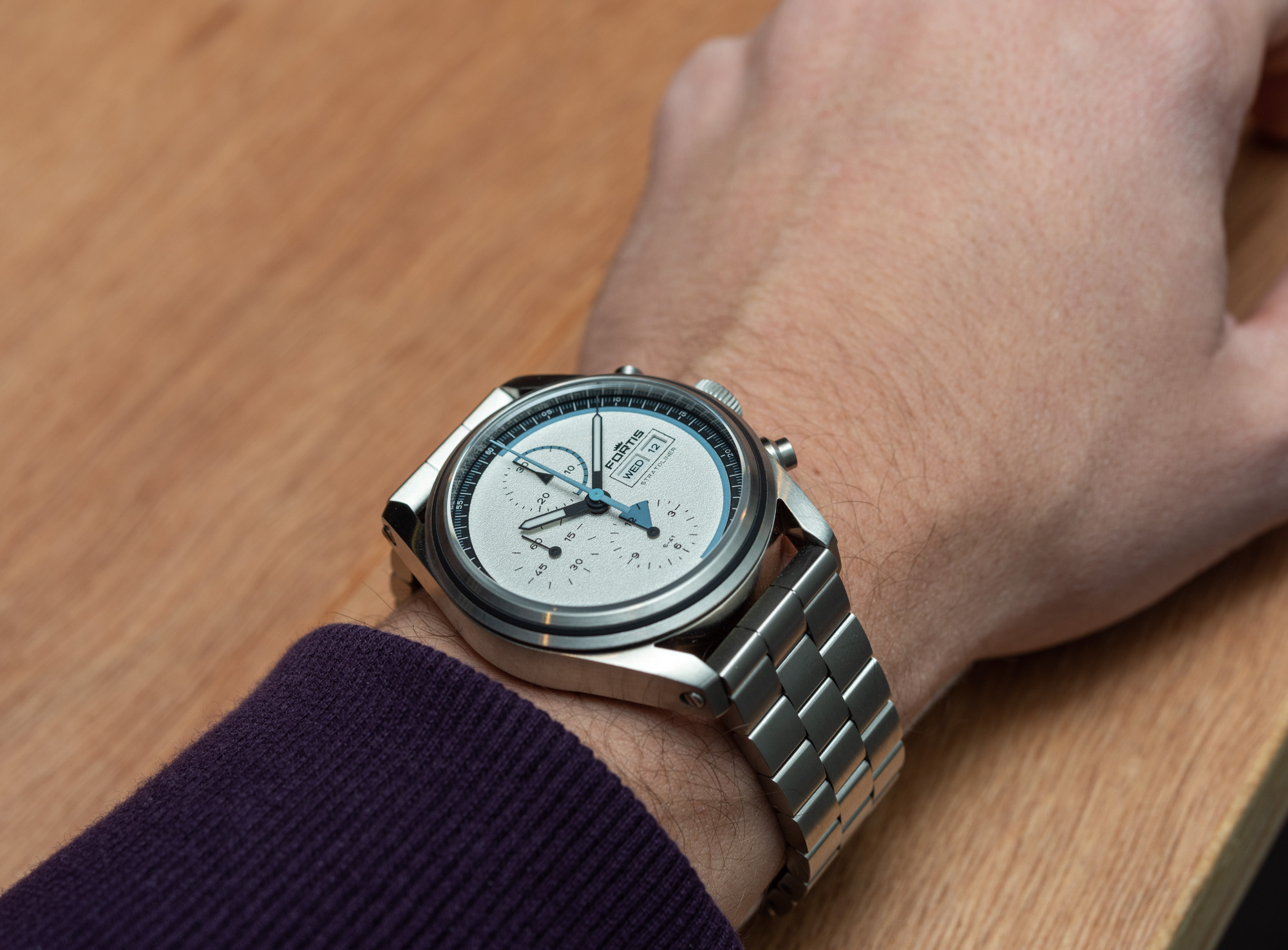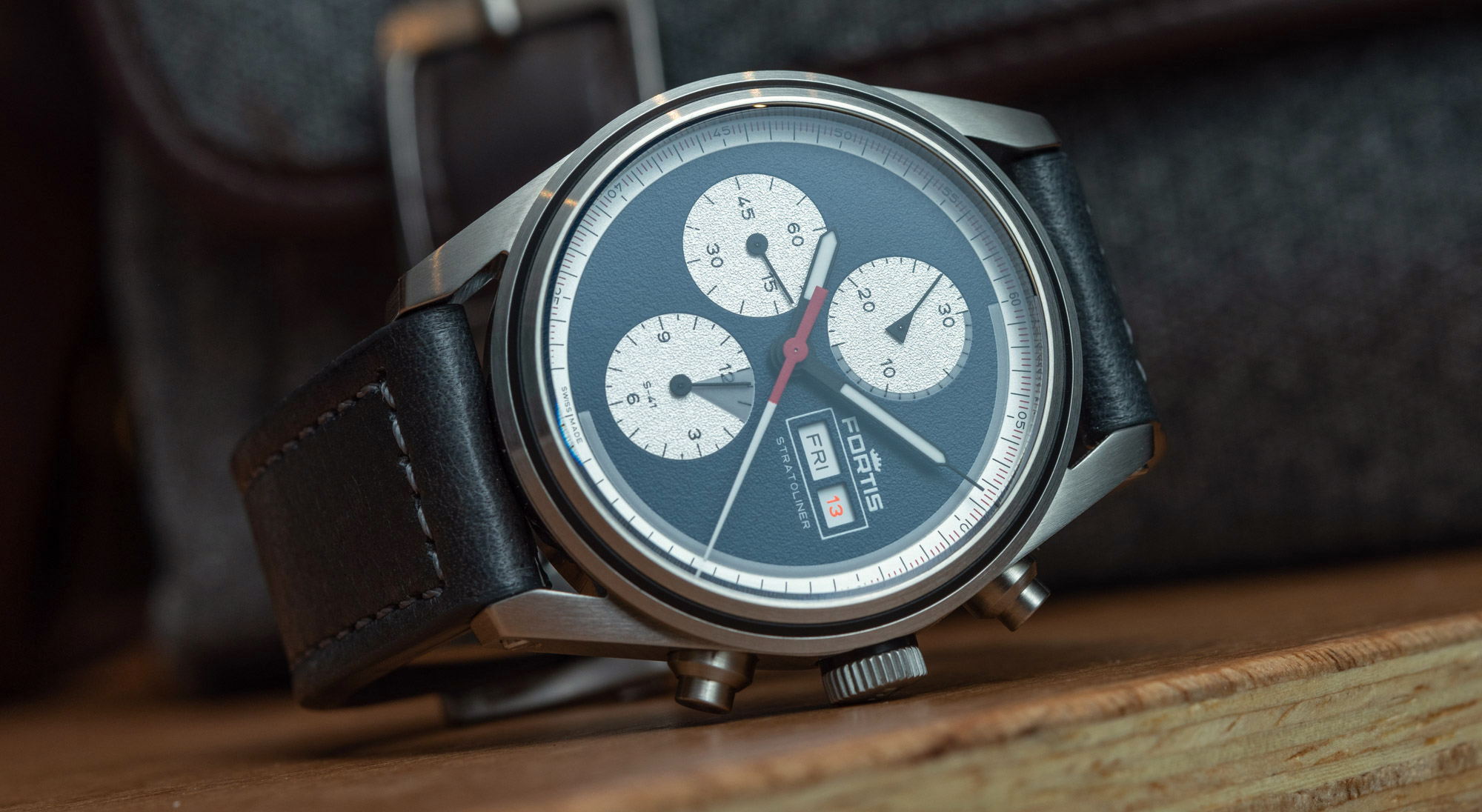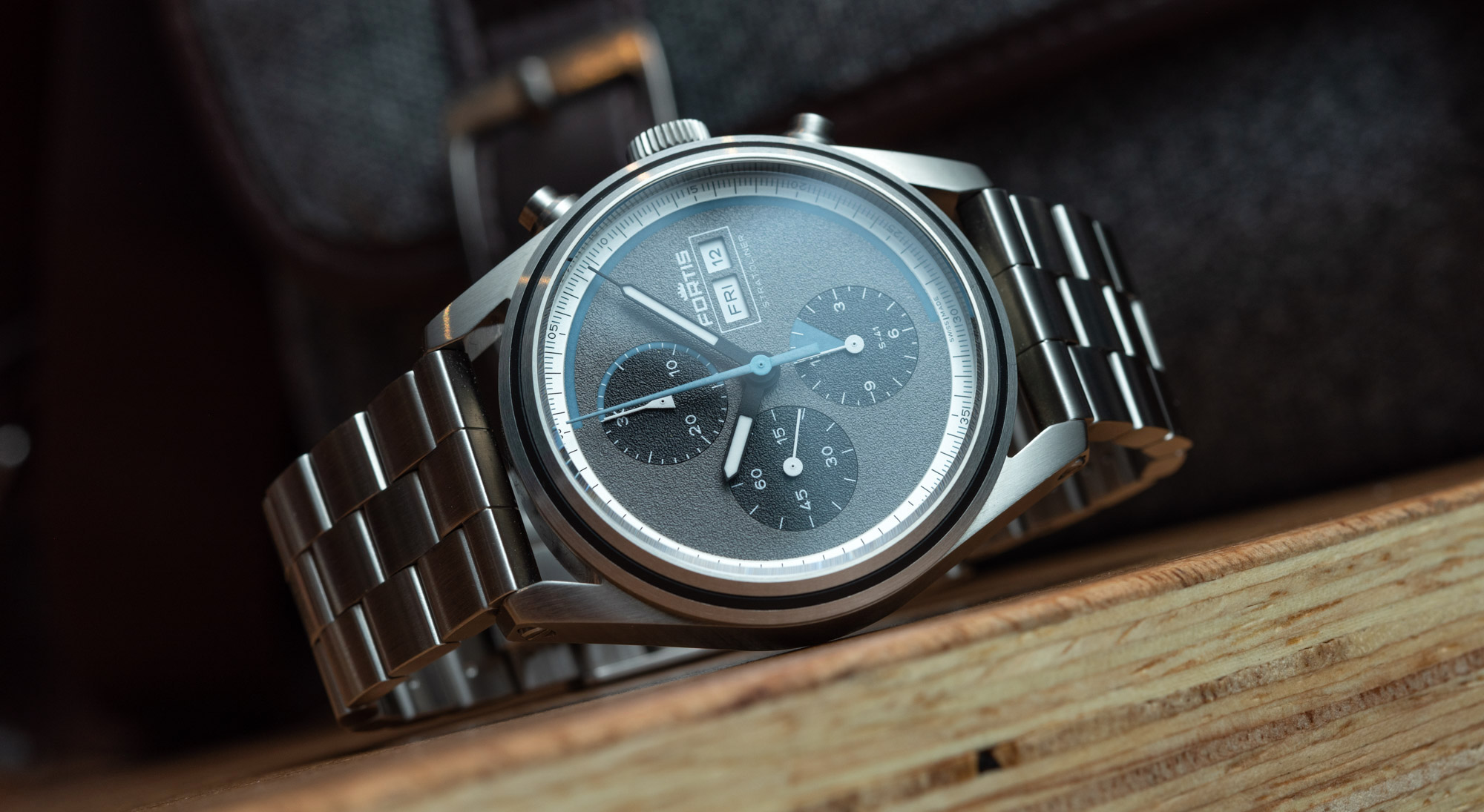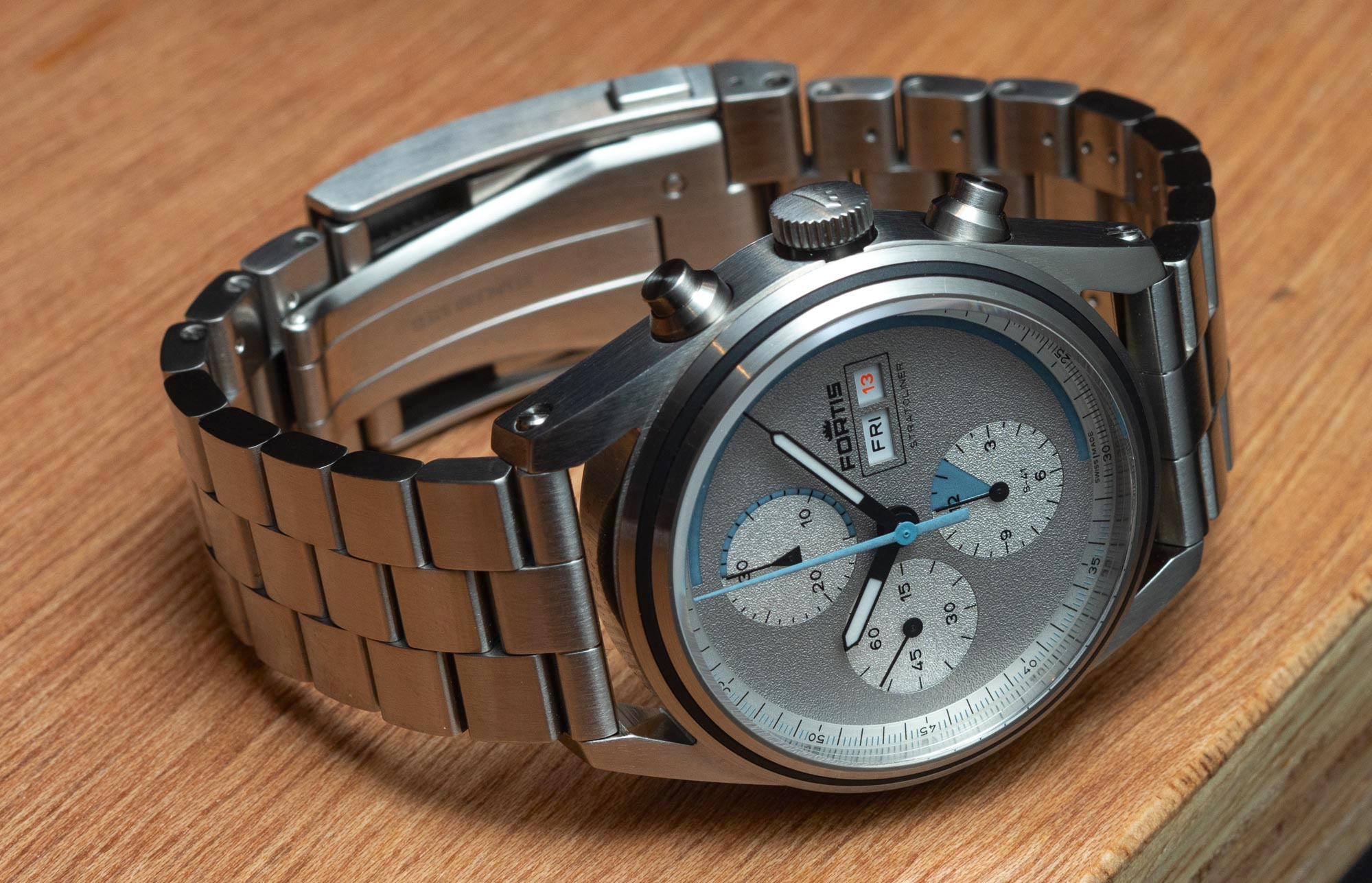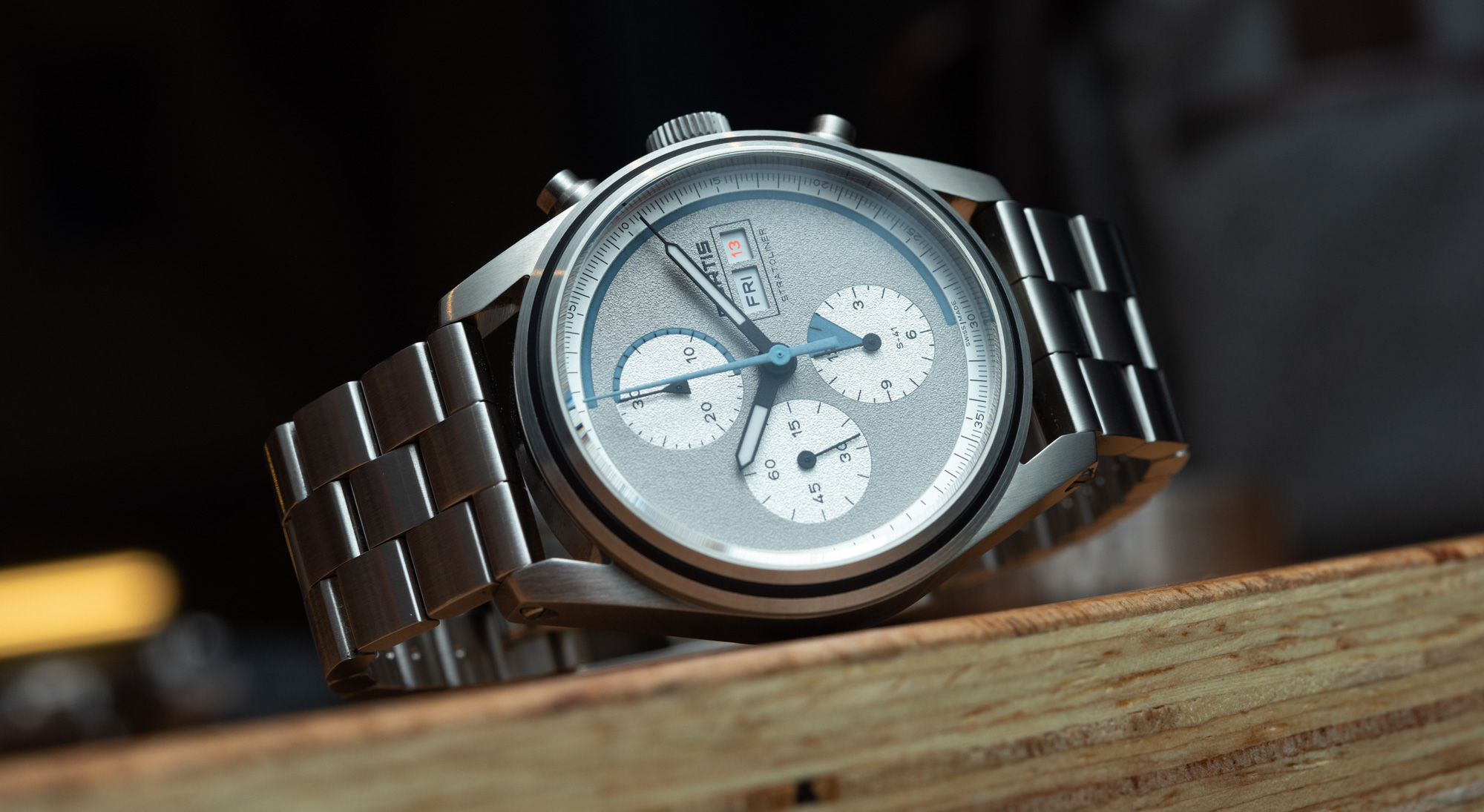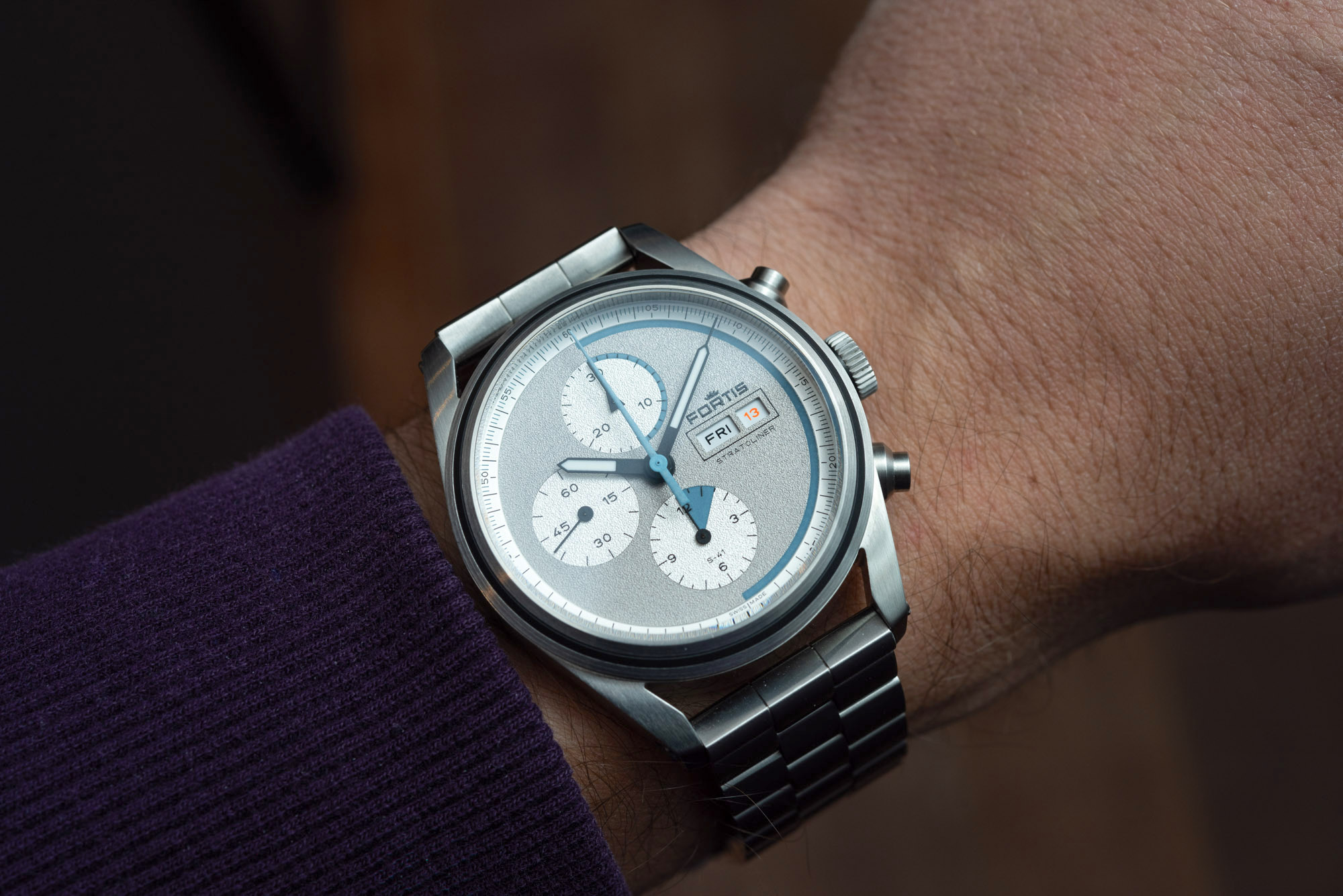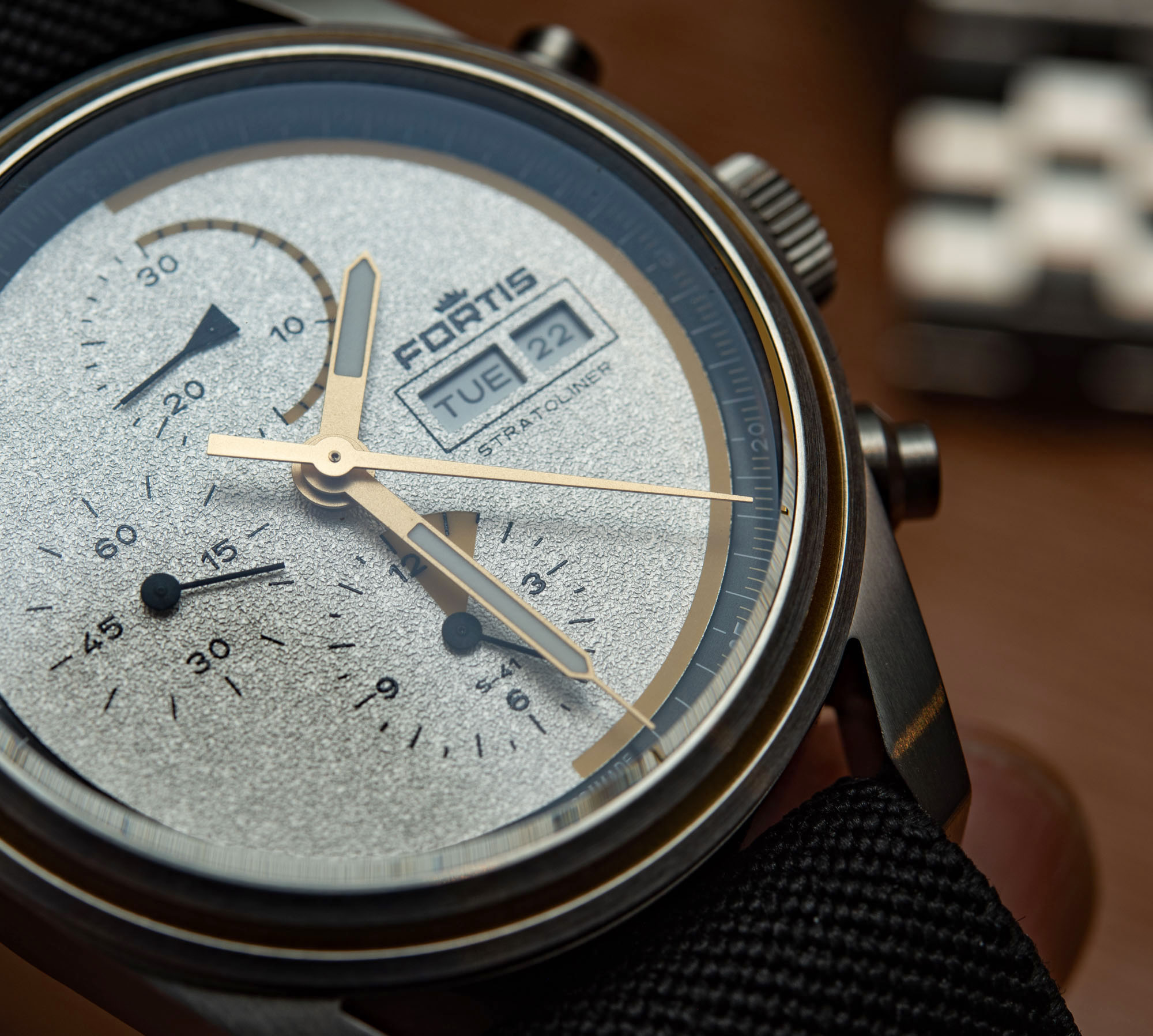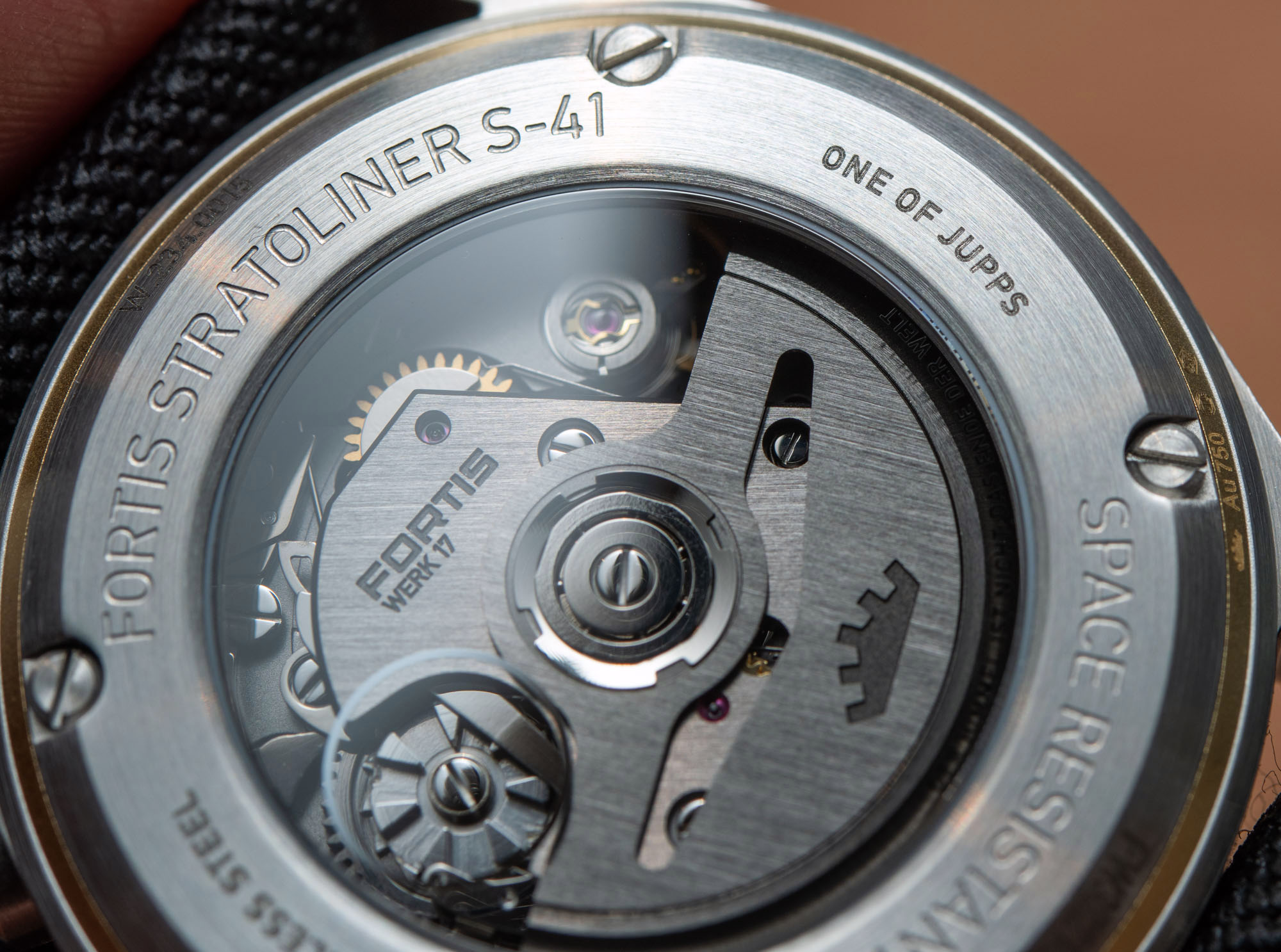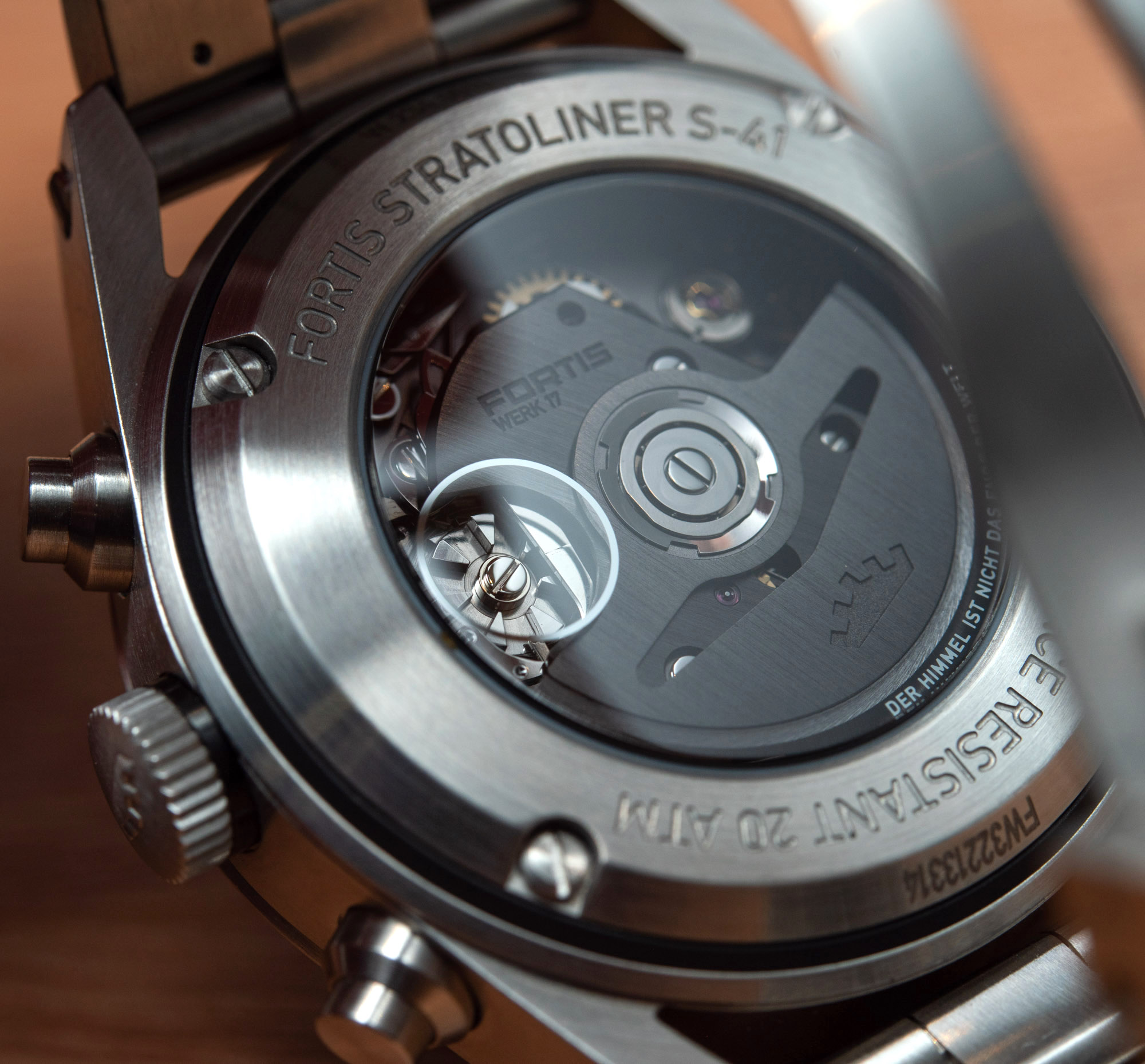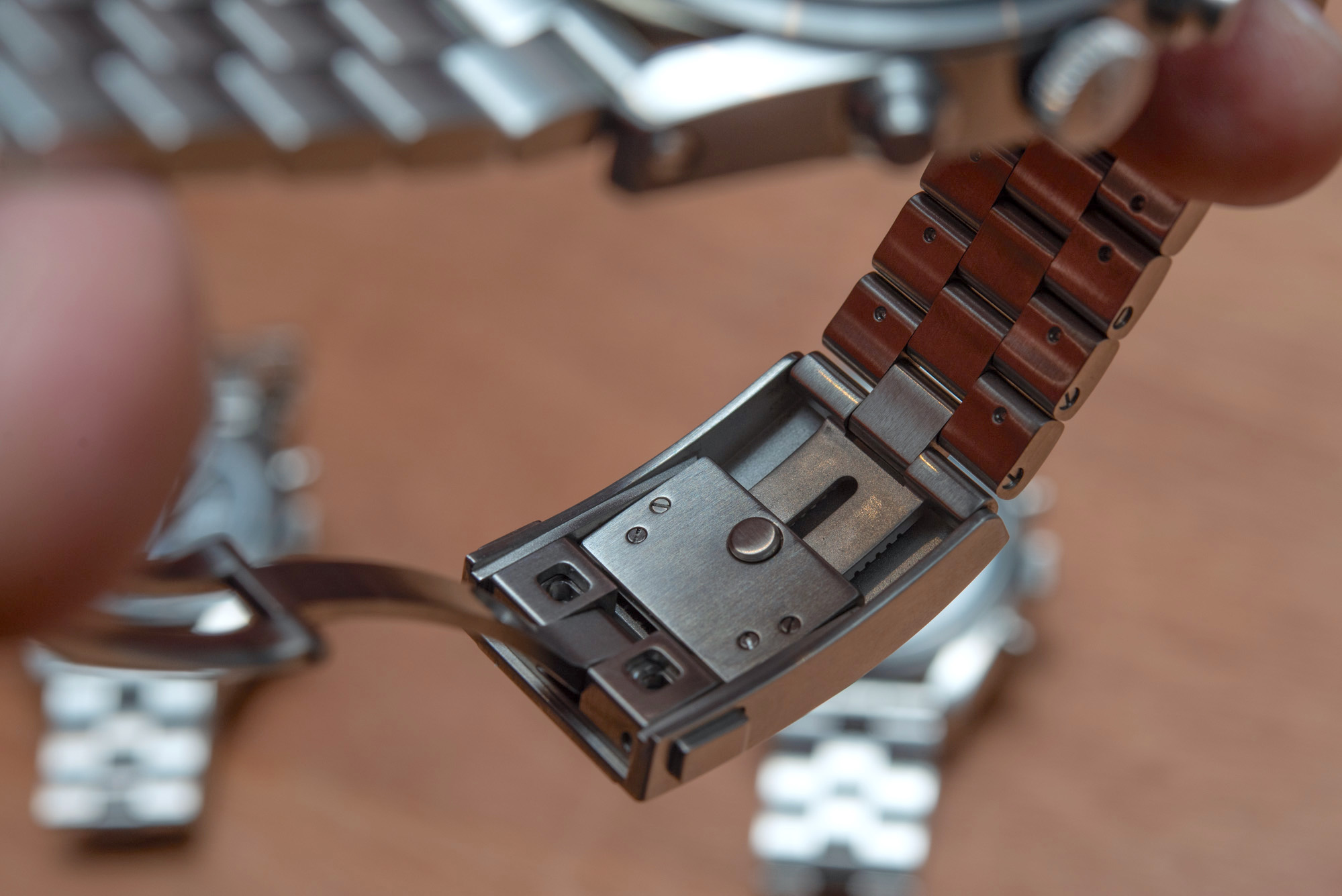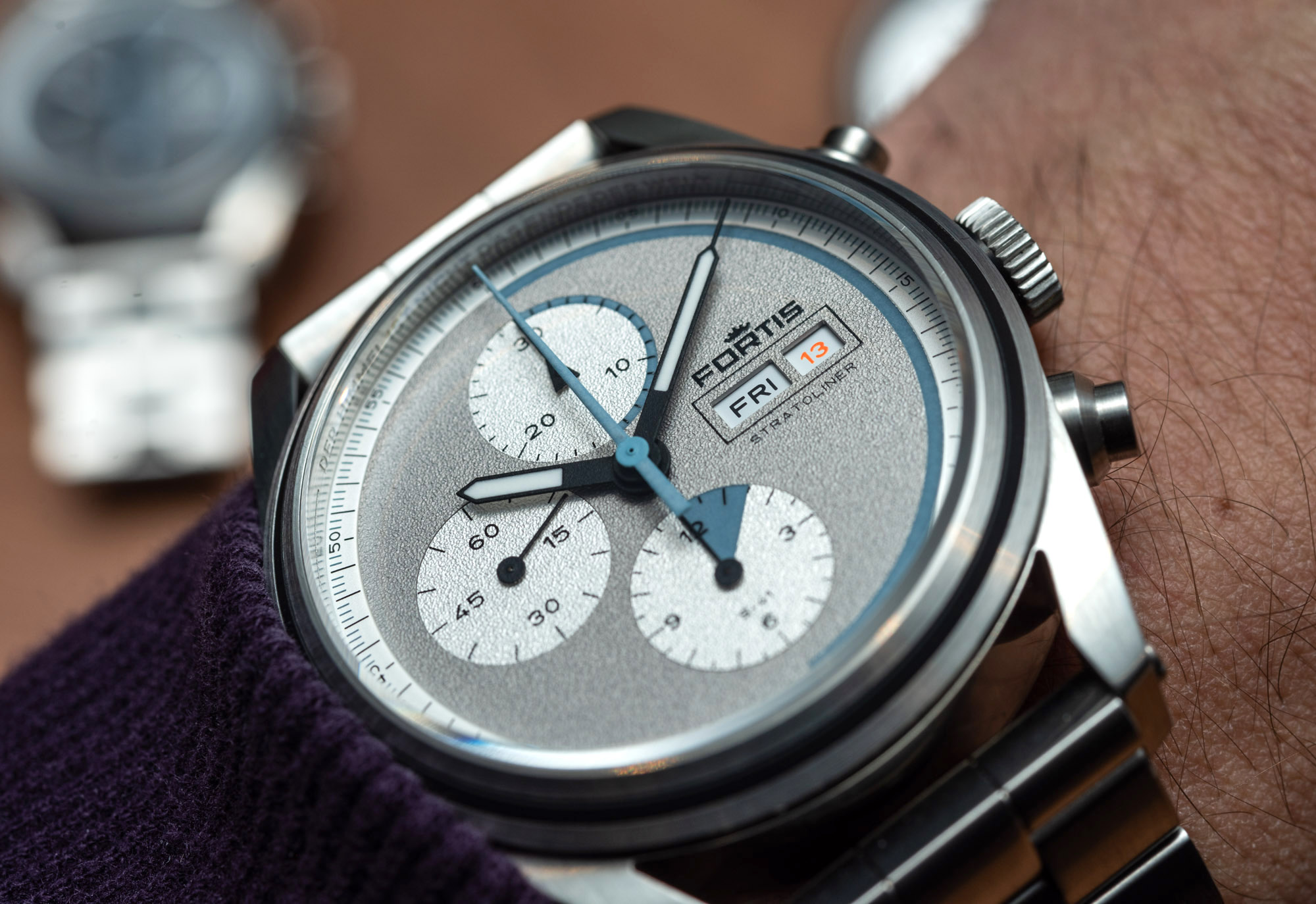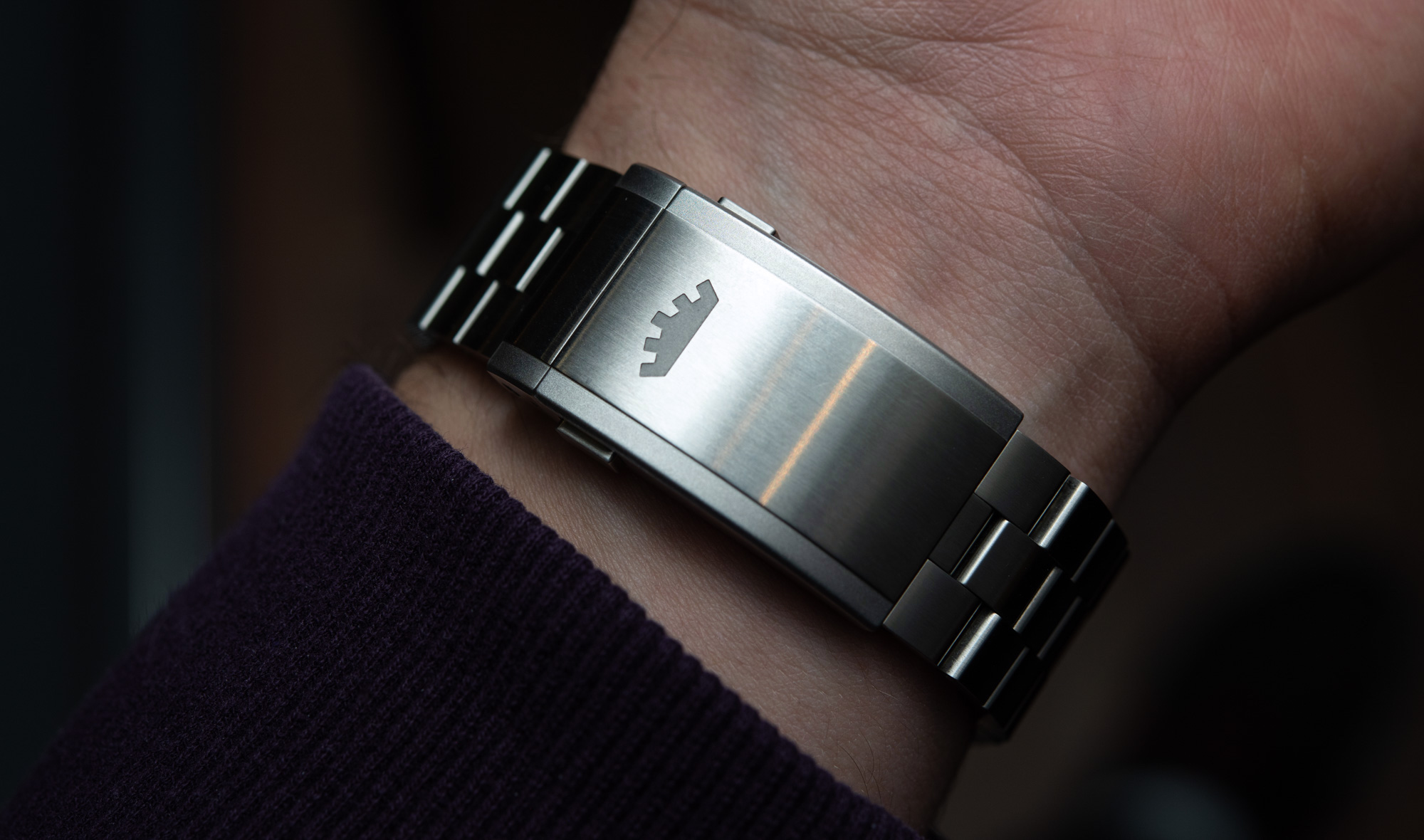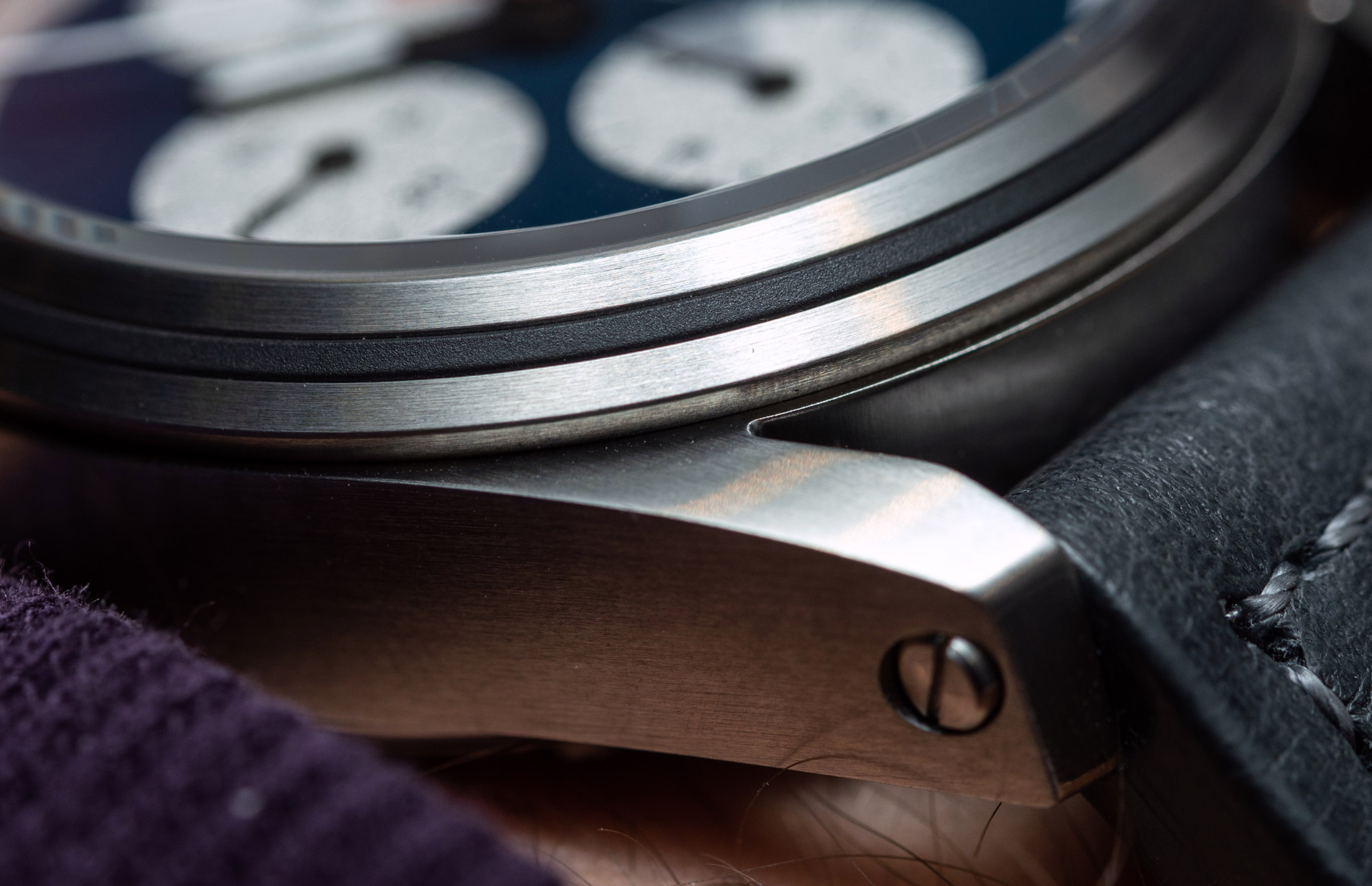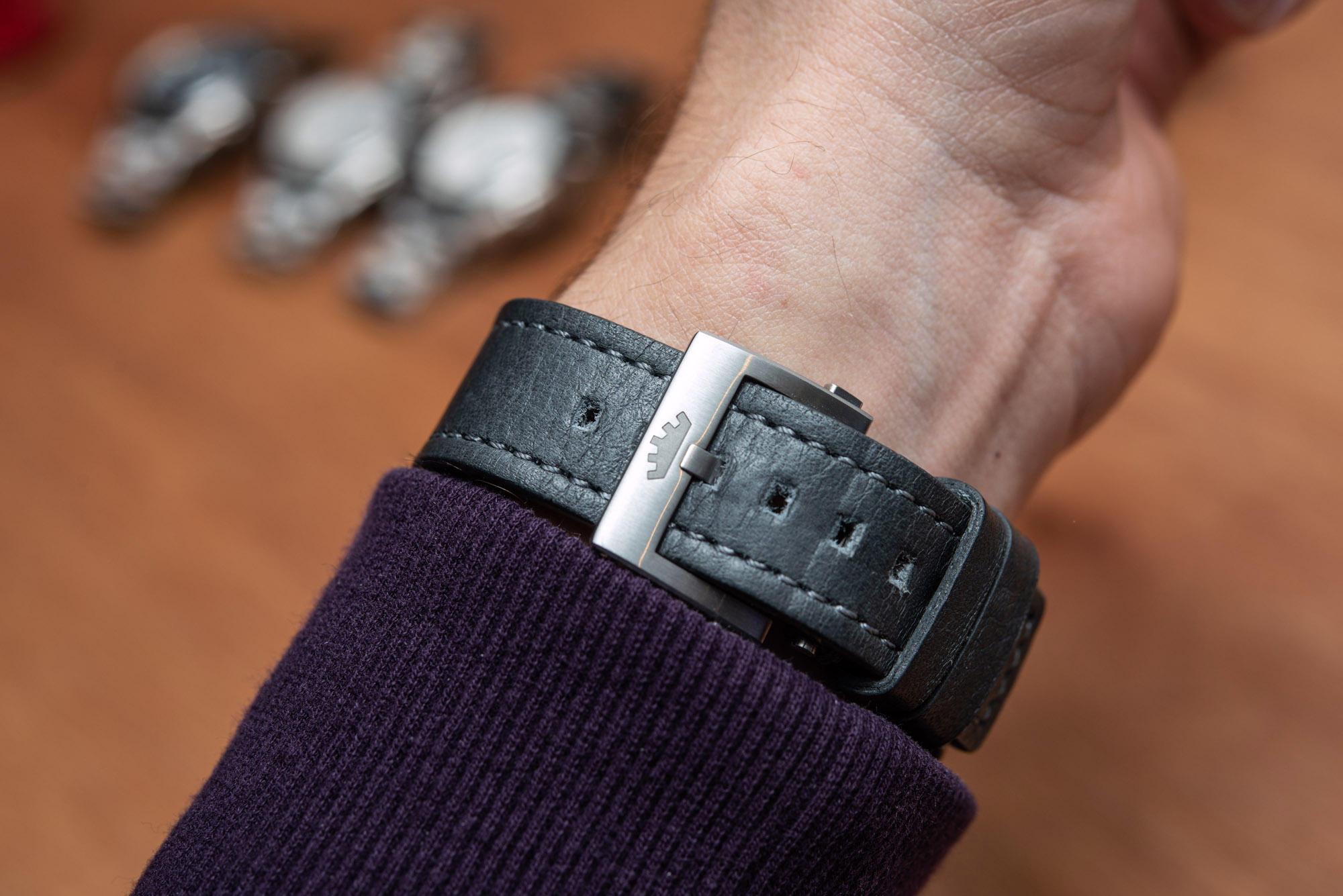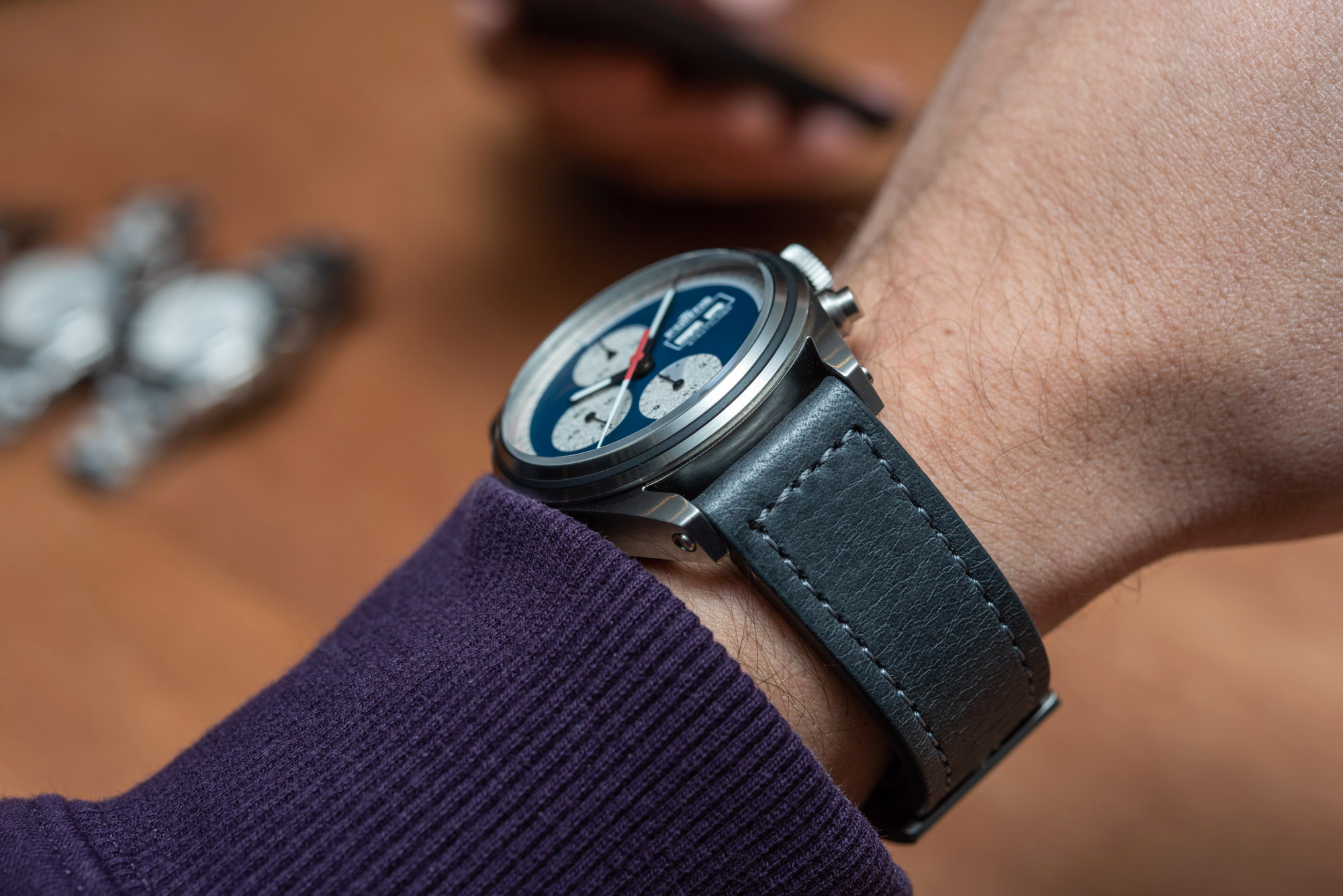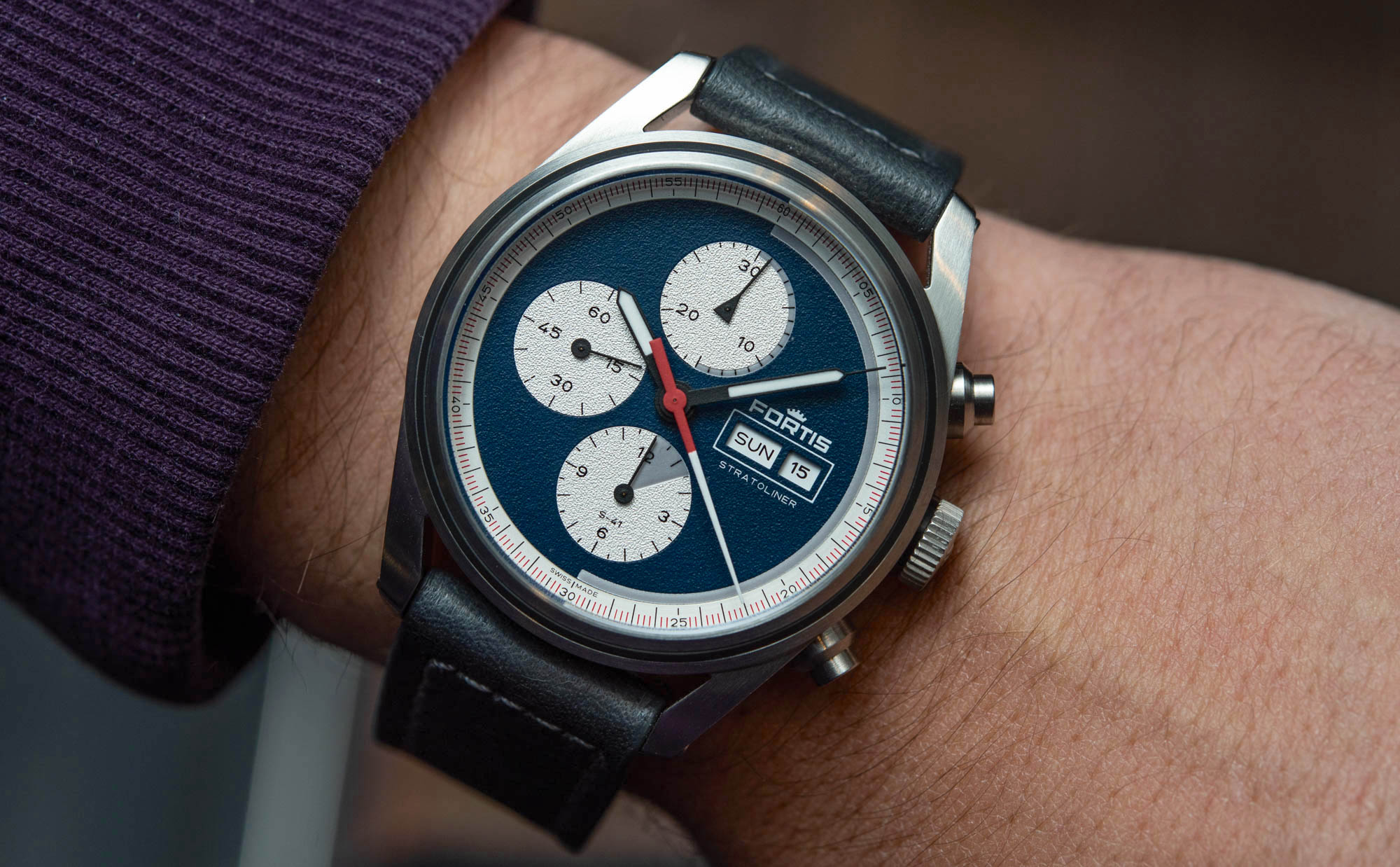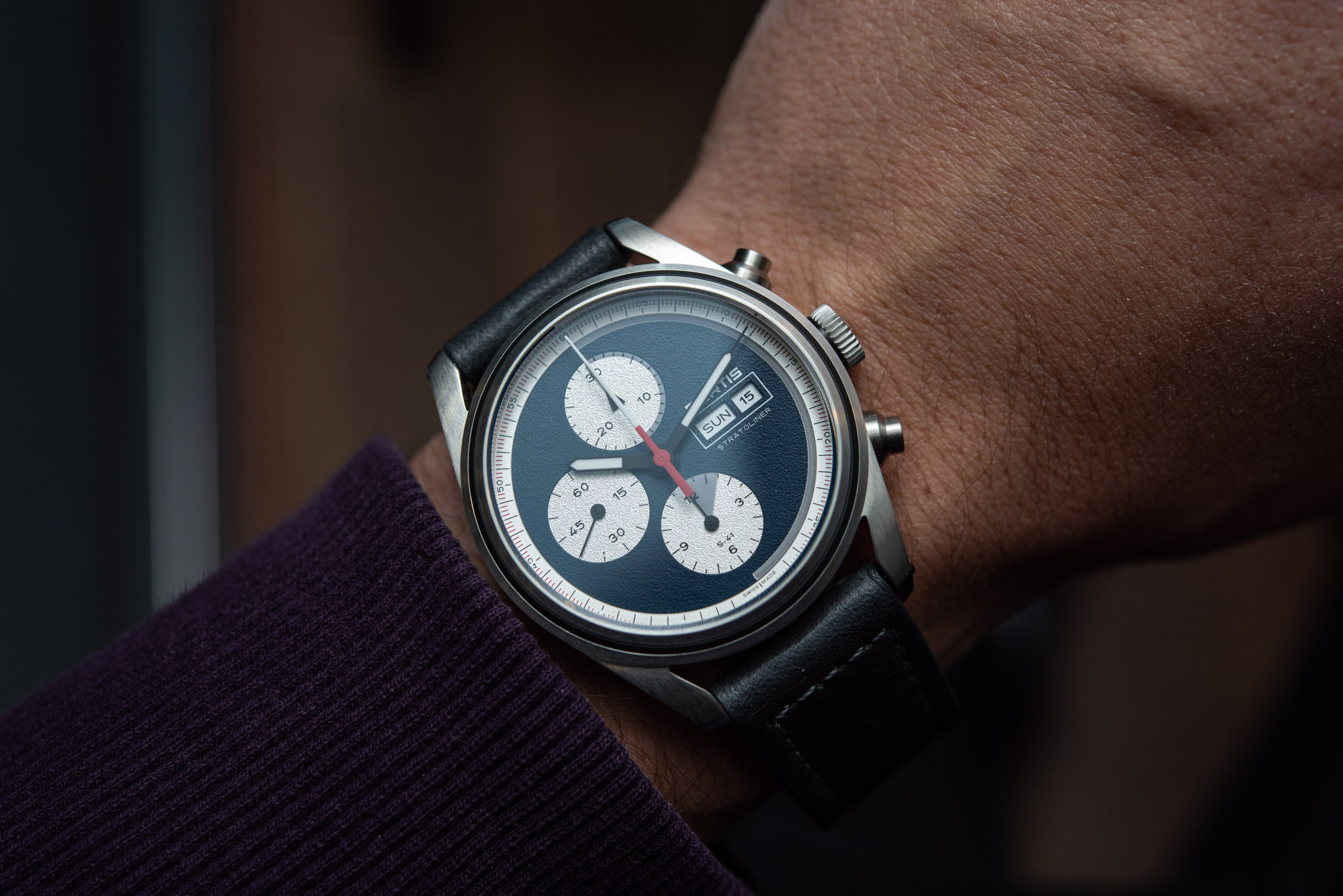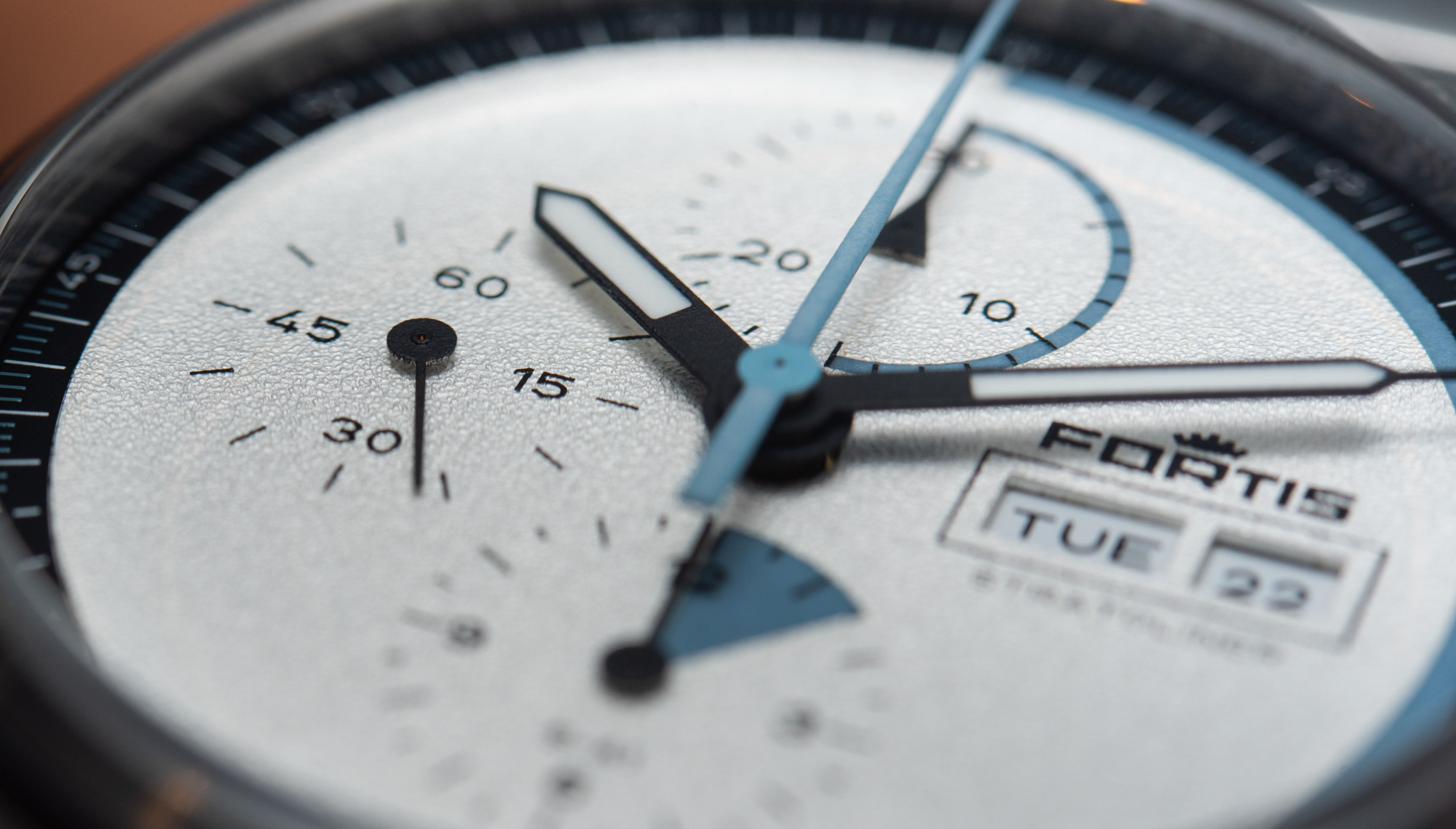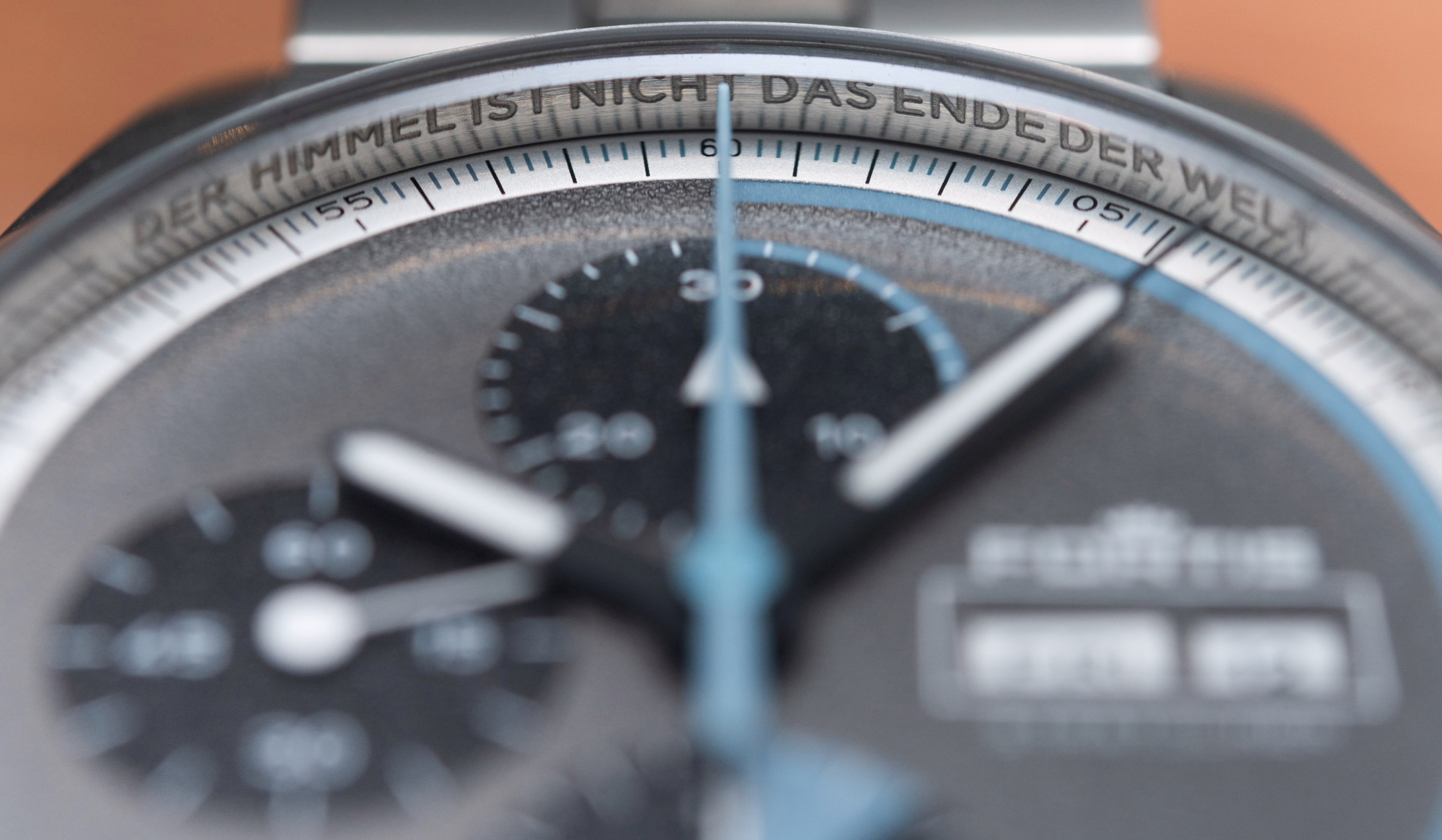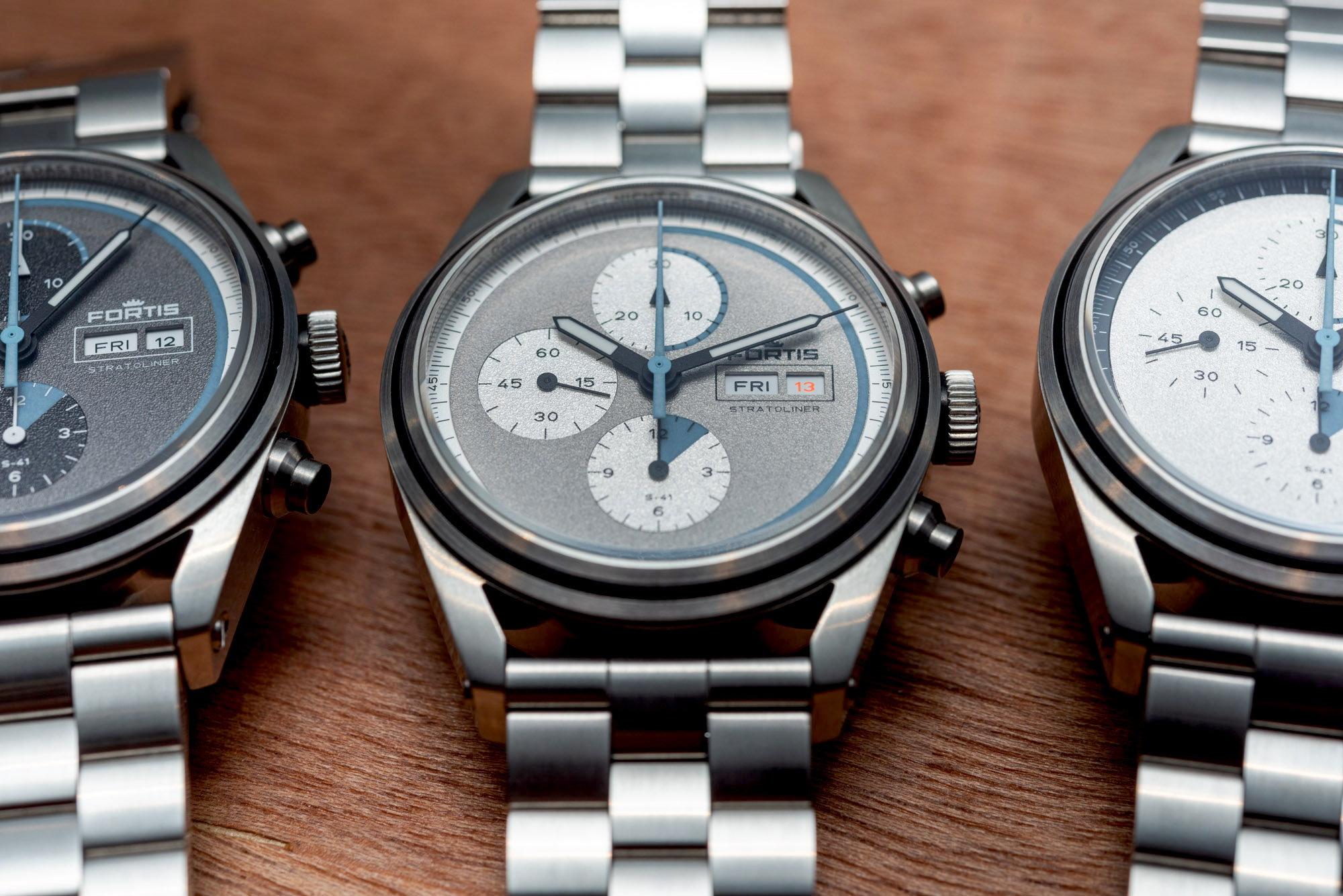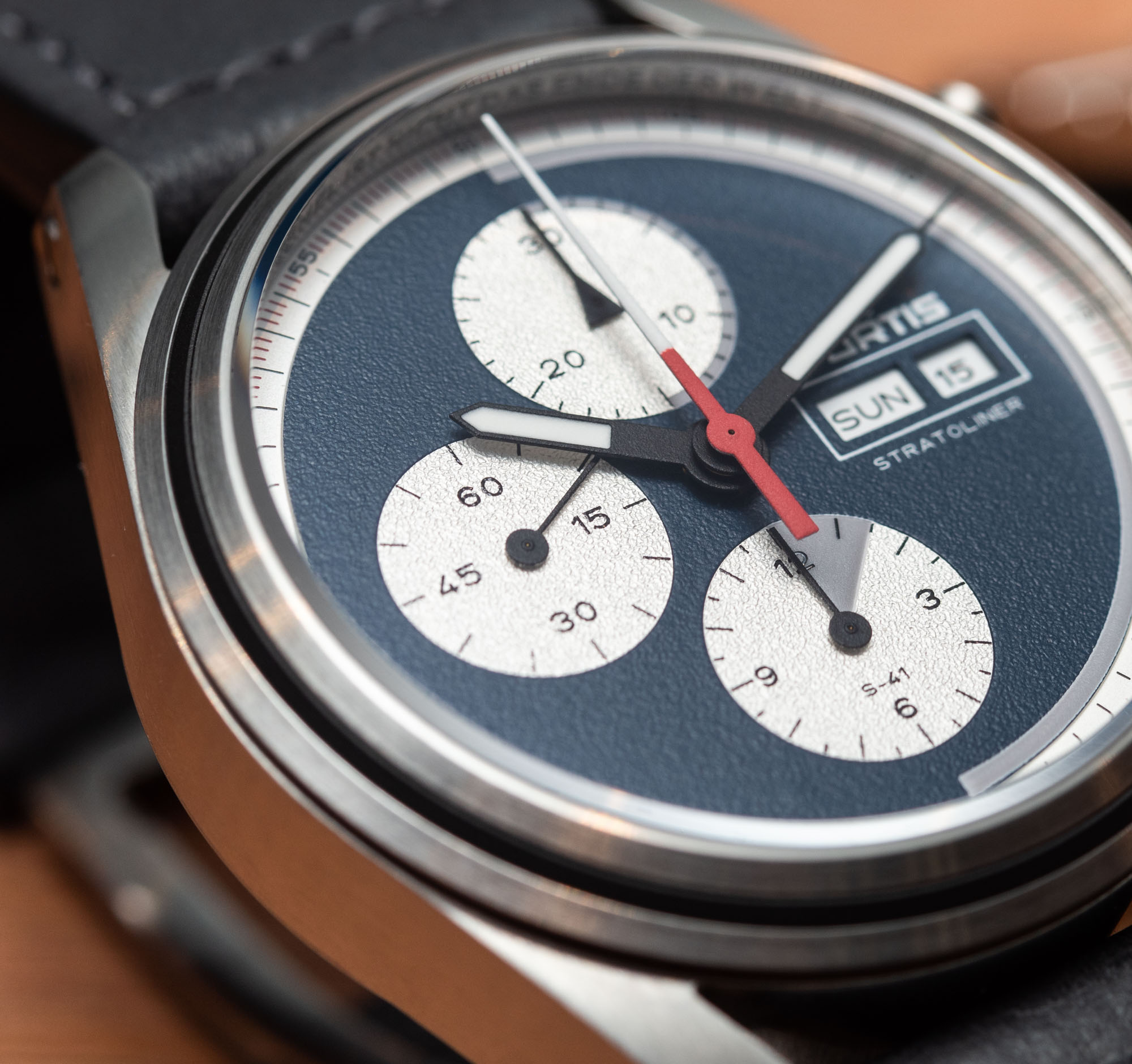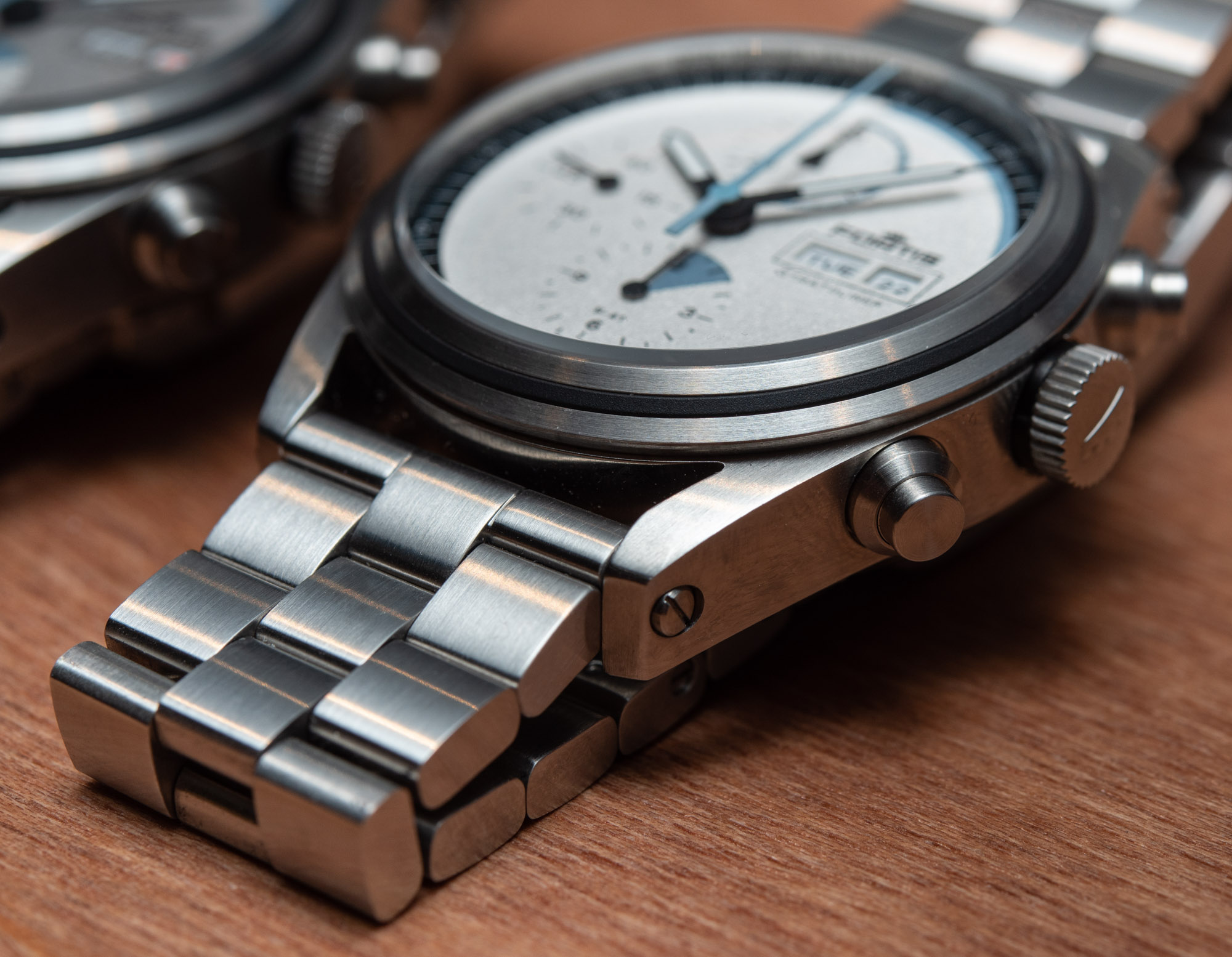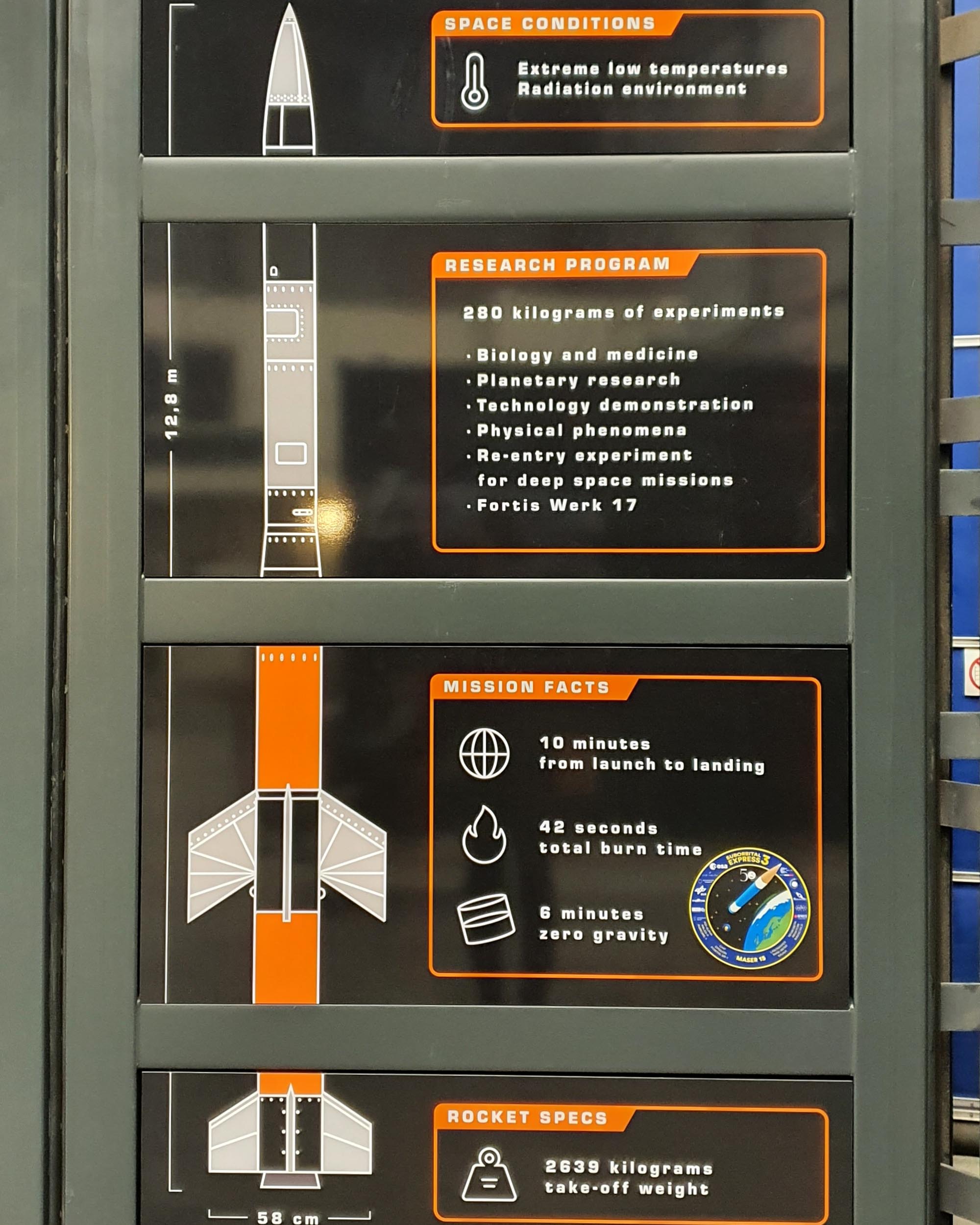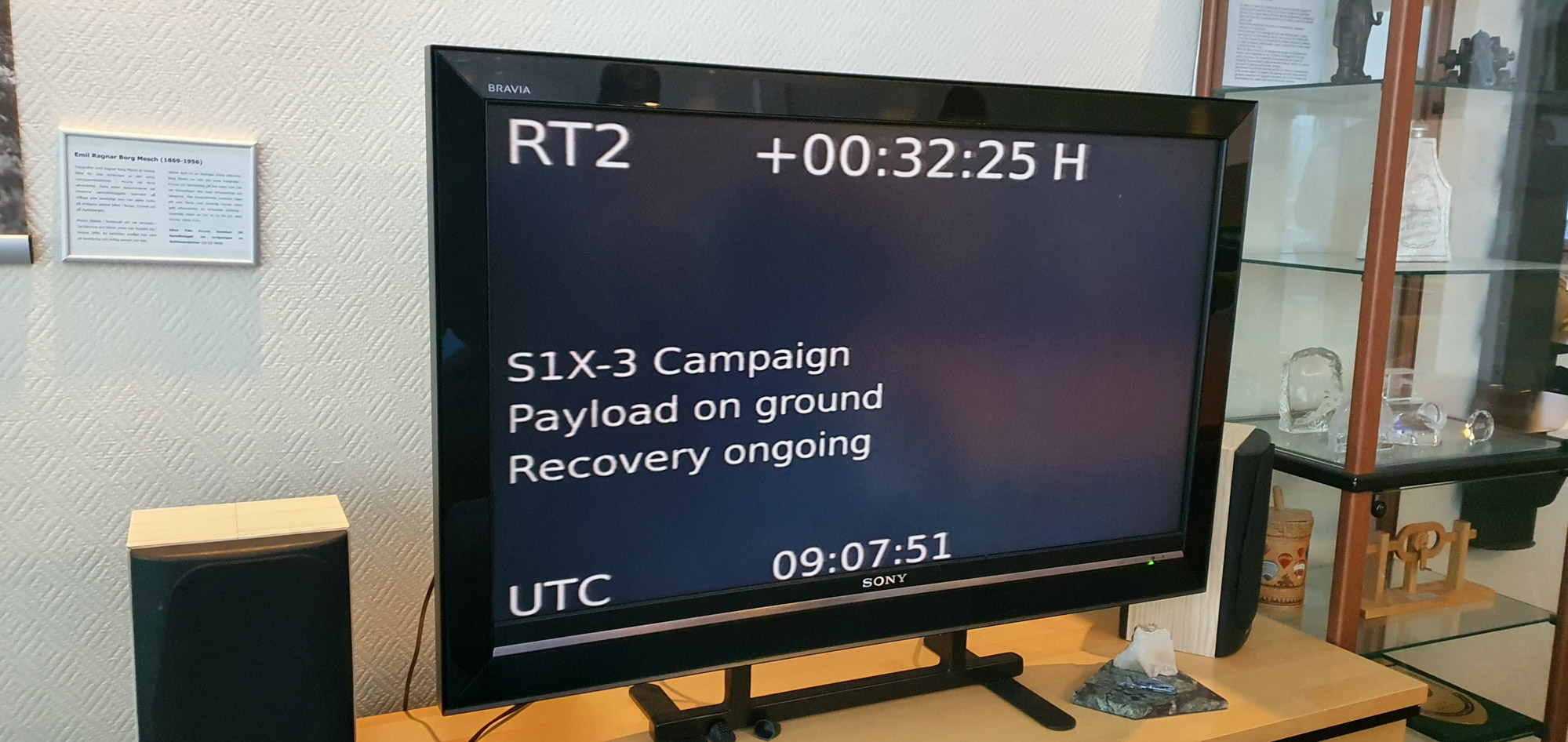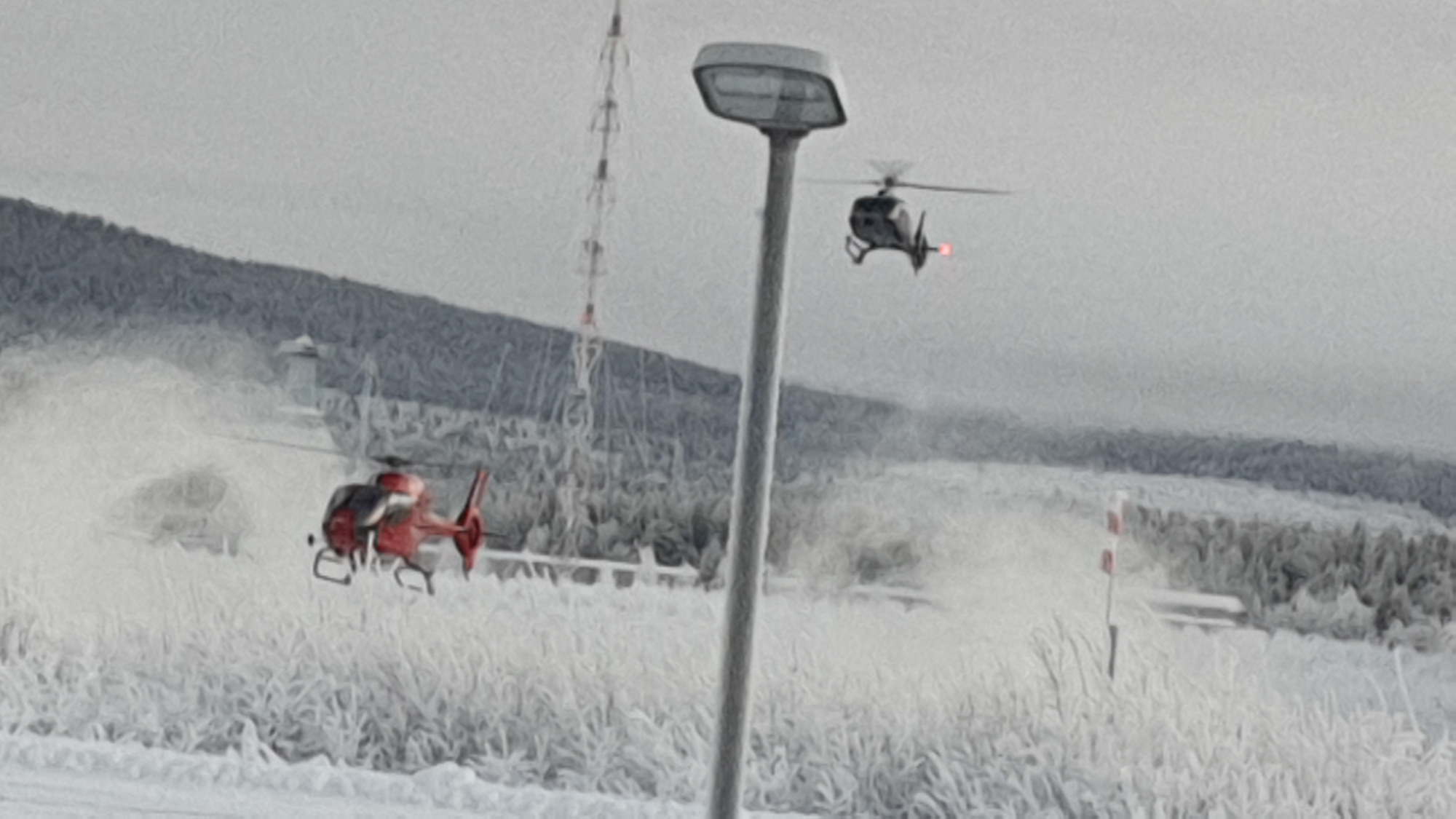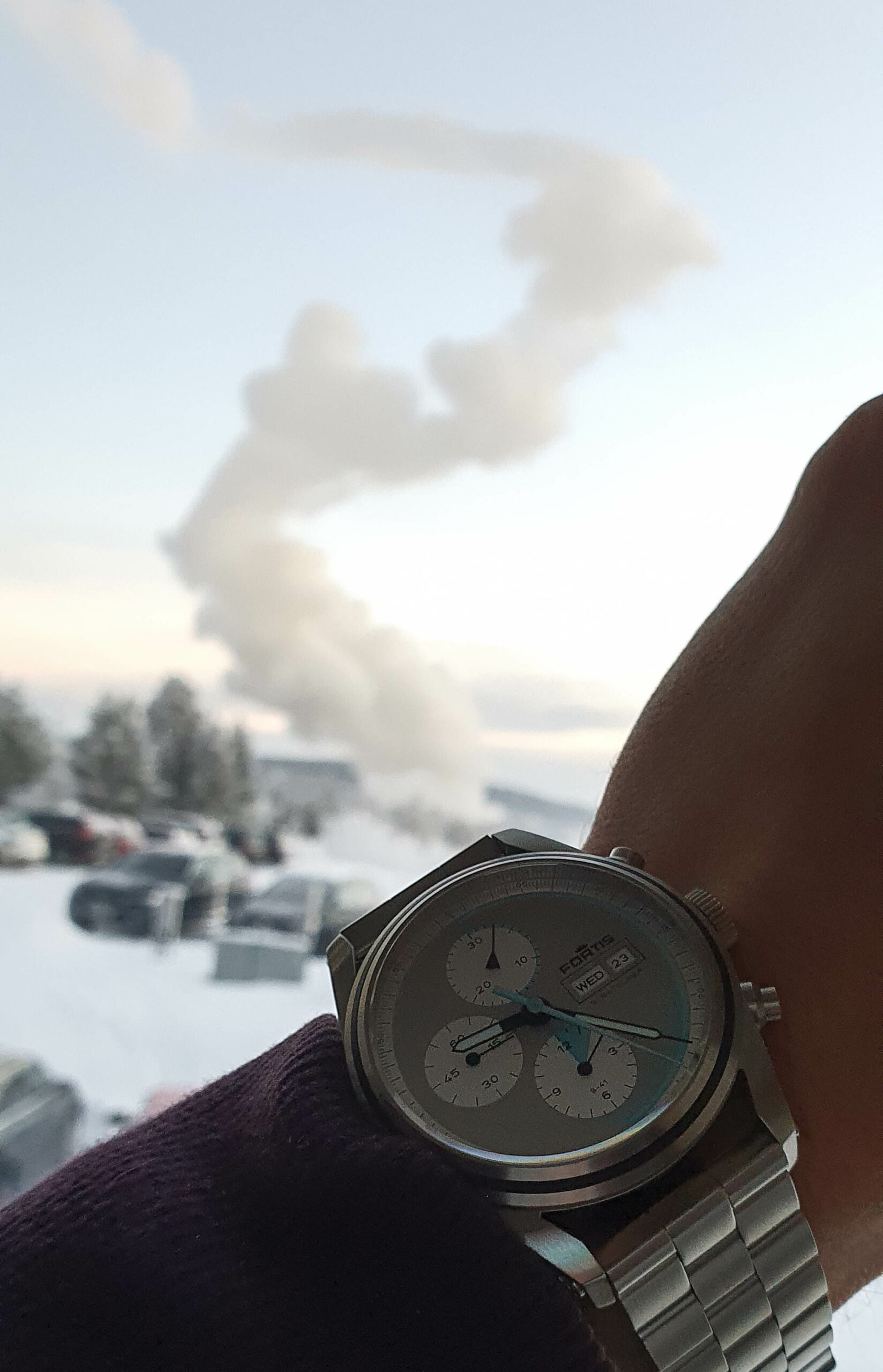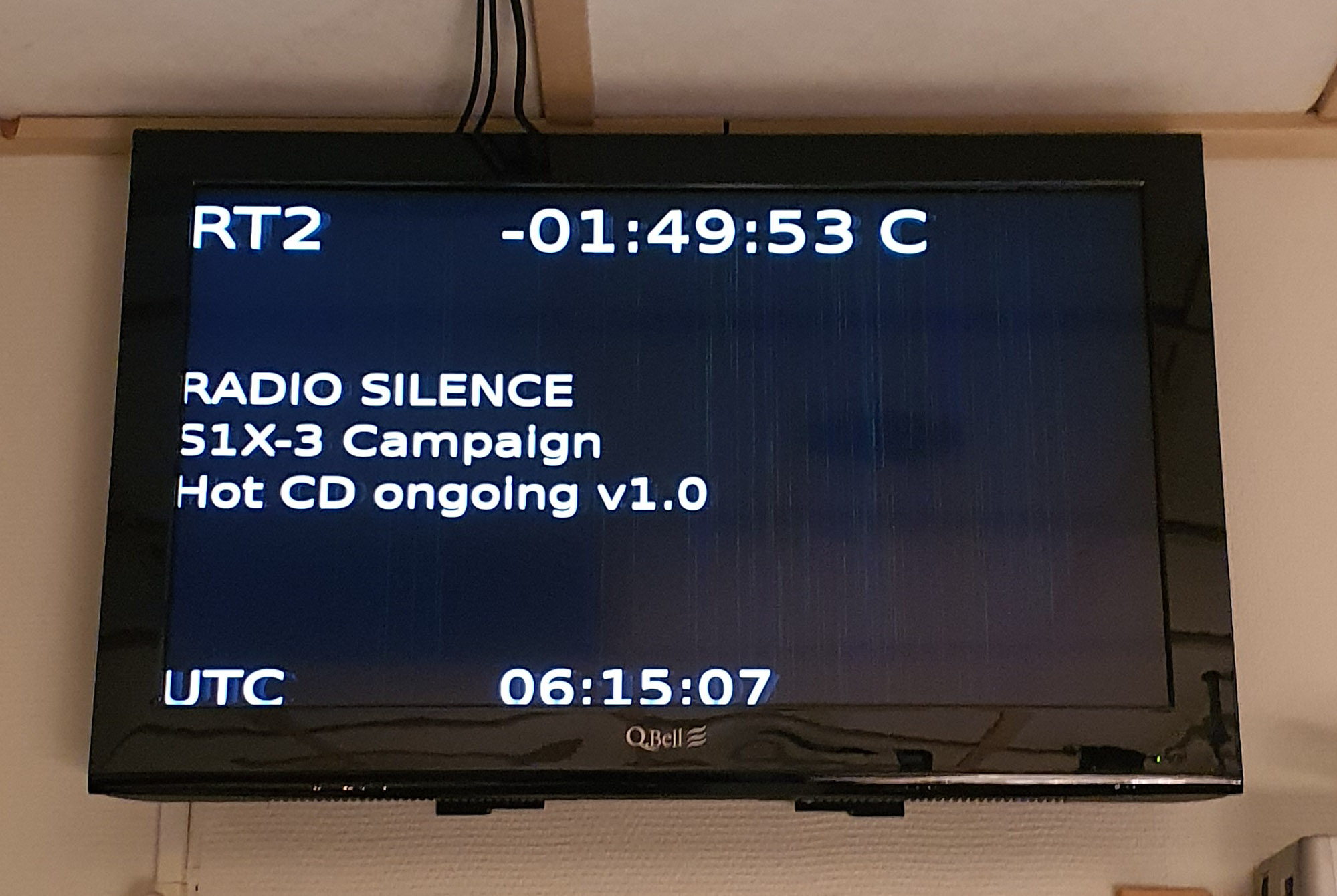
A display shows “-01:49:53 RADIO SILENCE,” and there’s tangible tension in the canteen. The launch has already been delayed by a day. Around 200 people from every corner of the world have spent weeks in the Swedish slice of the frankly inhospitable Arctic Circle to build, load, and launch an unpiloted rocket into space from the Esrange Space Center. Sharing this excitement, and part of the rocket’s payload, is the Fortis team, which is sending 13 specially prepared Fortis Stratoliner watches into space to test and prove that they can withstand the brutal G-forces, vibrations, radiations, and subsequent zero-gravity environment of a rocket launch with no passengers onboard — much more severe than those carrying passengers. A rocket ride carrying passengers would be a walk in the park for these watches. We were there, on-site, to share the excitement, and to see the watches Fortis wants to test and certify to ultimately become the go-to choice for the space travelers of the not-so-distant future.
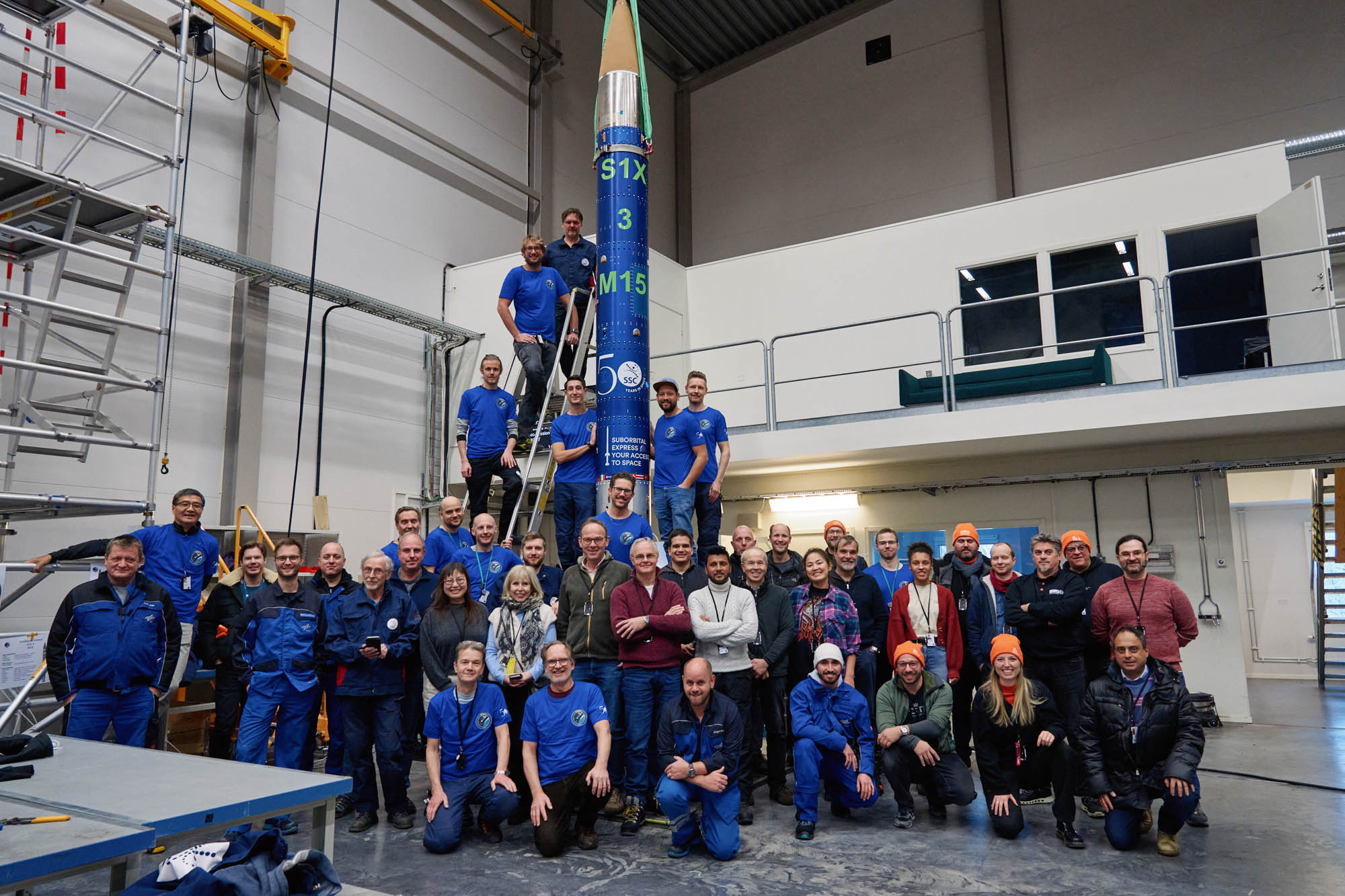
Part of the Fortis team along with the SSC crew and other participating engineers and scientists, next to the assembled S1X-3 rocket.
What’s The Point Of This Rocket Launch Exercise?
The Esrange Space Center is literally on the edge of the world, hibernating in thick ice and almost consistent darkness throughout the winter. Located well within the Arctic Circle, the temperature during our presence averaged -23 °C (-9.4 °F), with a daily average of 30 minutes of sunshine and around four hours of daylight in total. We have traveled here, 50 minutes North of the Swedish mining town of Kiruna, to witness an epic rocket launch that carried 13 Fortis Stratoliner watches. Why? Because Fortis is on its way to becoming a supplier of “space-resistant” wristwatches to astronauts — government-employed and private — for years and, the brand hopes, decades to come. As has been covered by the news extensively, a growing number of privileged individuals are expected to make their journey to space, thanks to corporations like Blue Origin, Virgin Galactic, and SpaceX — and logic dictates they’ll all want to wear a reliable backup timekeeper on board. The Fortis Stratoliner is the watch entrusted with carrying this load, fitted with a case, bracelet, and movement engineered and tested to withstand the immense vibrations and G-forces a rocket launch creates.
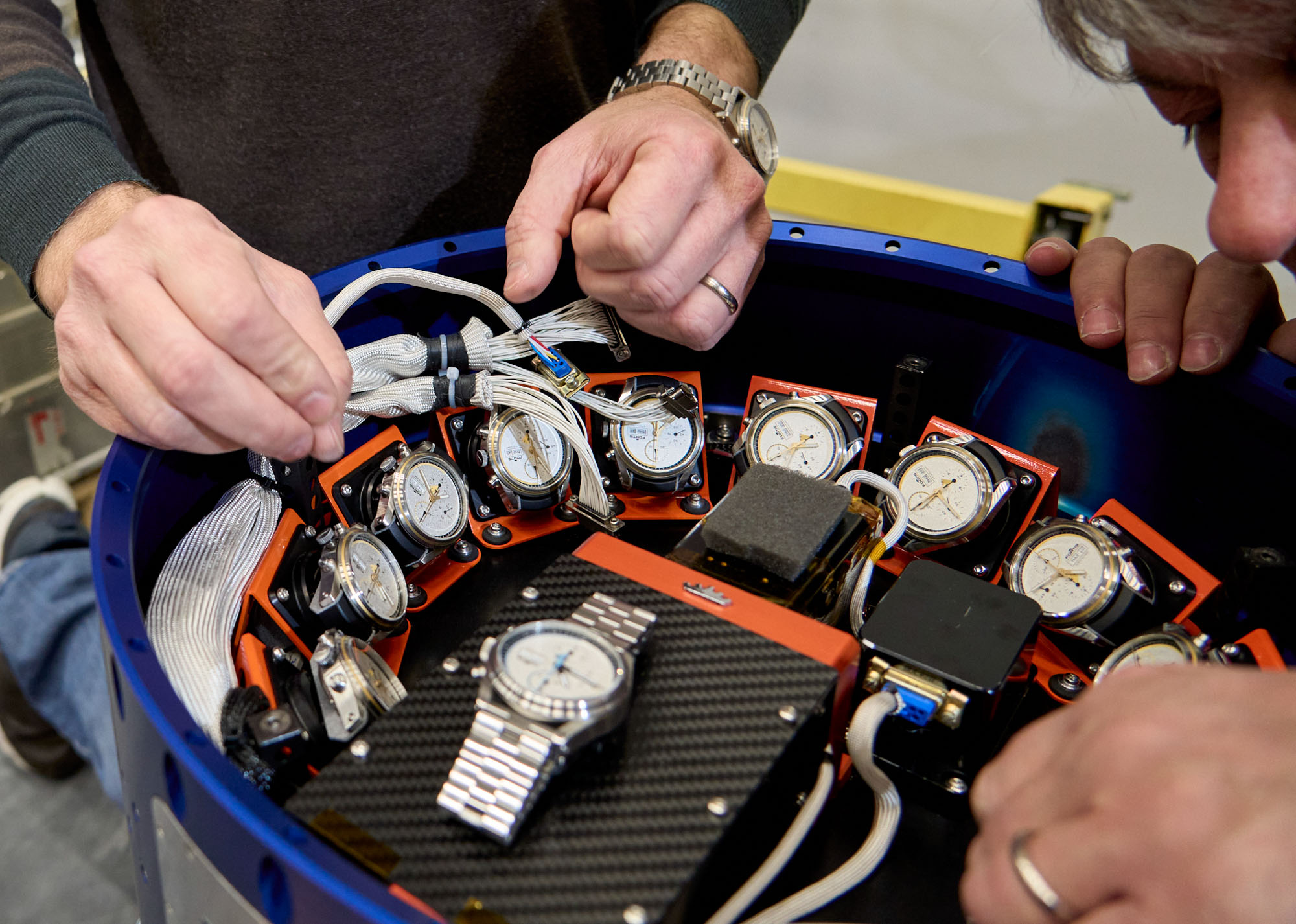
Fortis purchased its own payload in the rocket and fitted 13 cased-up watches to put through the challenges posed by a 13g rocket launch. All 13 watches will be made available to the public, with further details pending.
Why not the Speedmaster? Although deservedly acclaimed for its historic roles in a great number of space missions, the Speedmaster Moonwatch was designed in accordance with a set of requirements established over six decades ago. A lot has changed in space travel since then. Fortis is not wrong in thinking that probably nothing aboard these privately operated 21st-century spaceships will be from the 1960s, and so its occupants might reasonably expect their watch to be designed, engineered, and tested using more modern technologies and requirements. And why not a digital Casio? The idea is that some astronauts might spend not just days or weeks, but years in space — changing cheap batteries is likely not an option. Furthermore, a mechanical backup, even if not plan B, but rather plan E in the succession of timekeeping backups on board, adds an additional layer of security. One might remember that in 1970, on Apollo 13, an oxygen tank exploded on board, ultimately forcing the crew to time 14 seconds — on a mechanical Omega Speedmaster that they happened to have on hand.
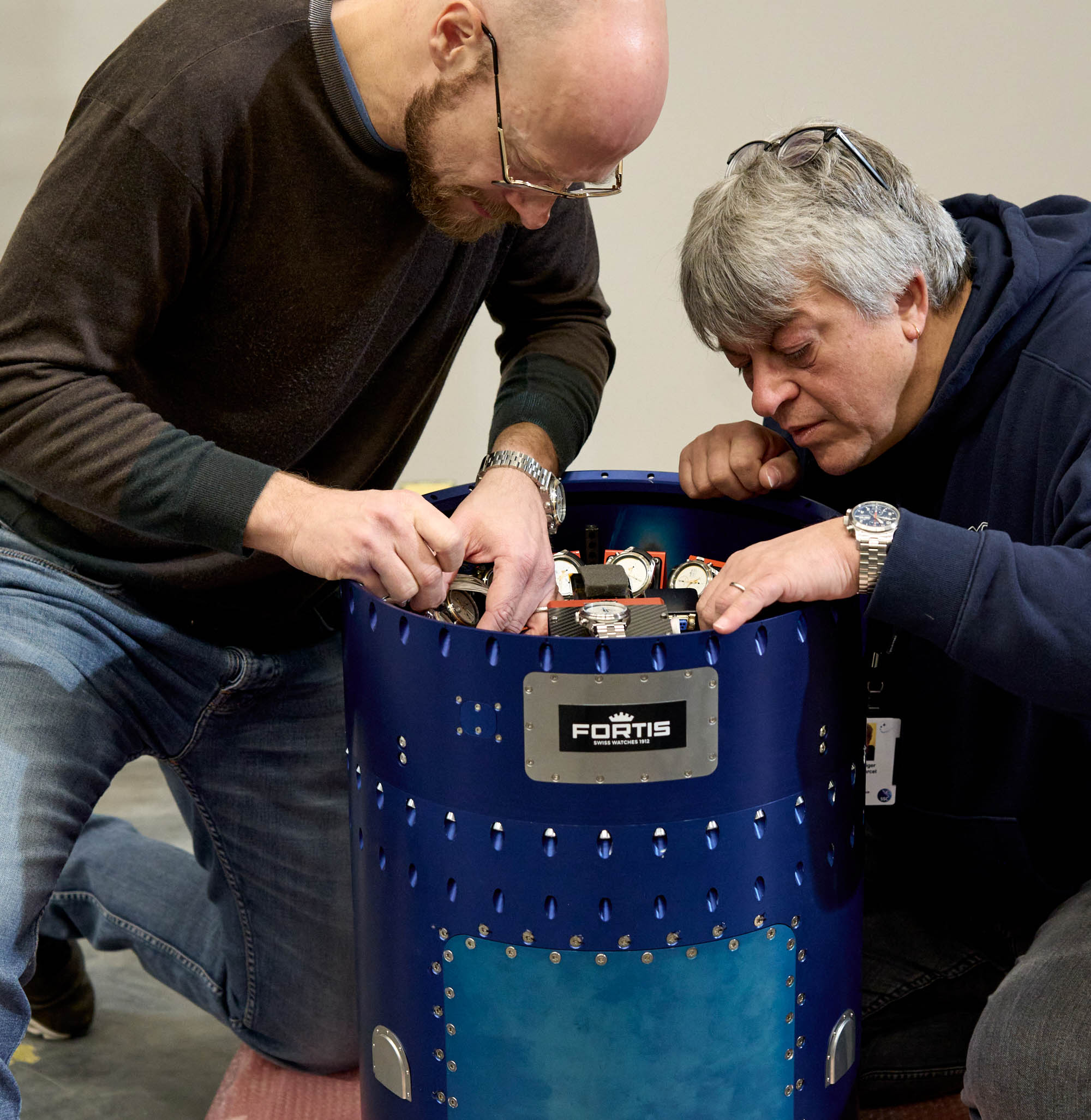
Jupp (left), the owner and CEO of Fortis, is a true watch enthusiast. A hands-on approach to watch design and, apparently, testing, comes naturally to him.
It’s been some five years since watch enthusiast Jupp Philip took over the Fortis brand and its Grenchen manufacture. With a background in managing a 100-year-old family business in the food industry, he took over Fortis with the ambitious goal of turning the brand and its watches properly space-proof — which is to say “officially certified for space use.” Oh, and he also wants to make watches he enjoys wearing, now that he manages the small, friendly, and highly enthusiastic Fortis team. It is rarer than some might expect to hear those working in the watch industry say anything along the lines of, “It feels like no day is a day at work. I love being here, being a part of this.” The Fortis team, even after a few too many weeks in the Arctic Circle, far away from their friends and family, was radiating this attitude.
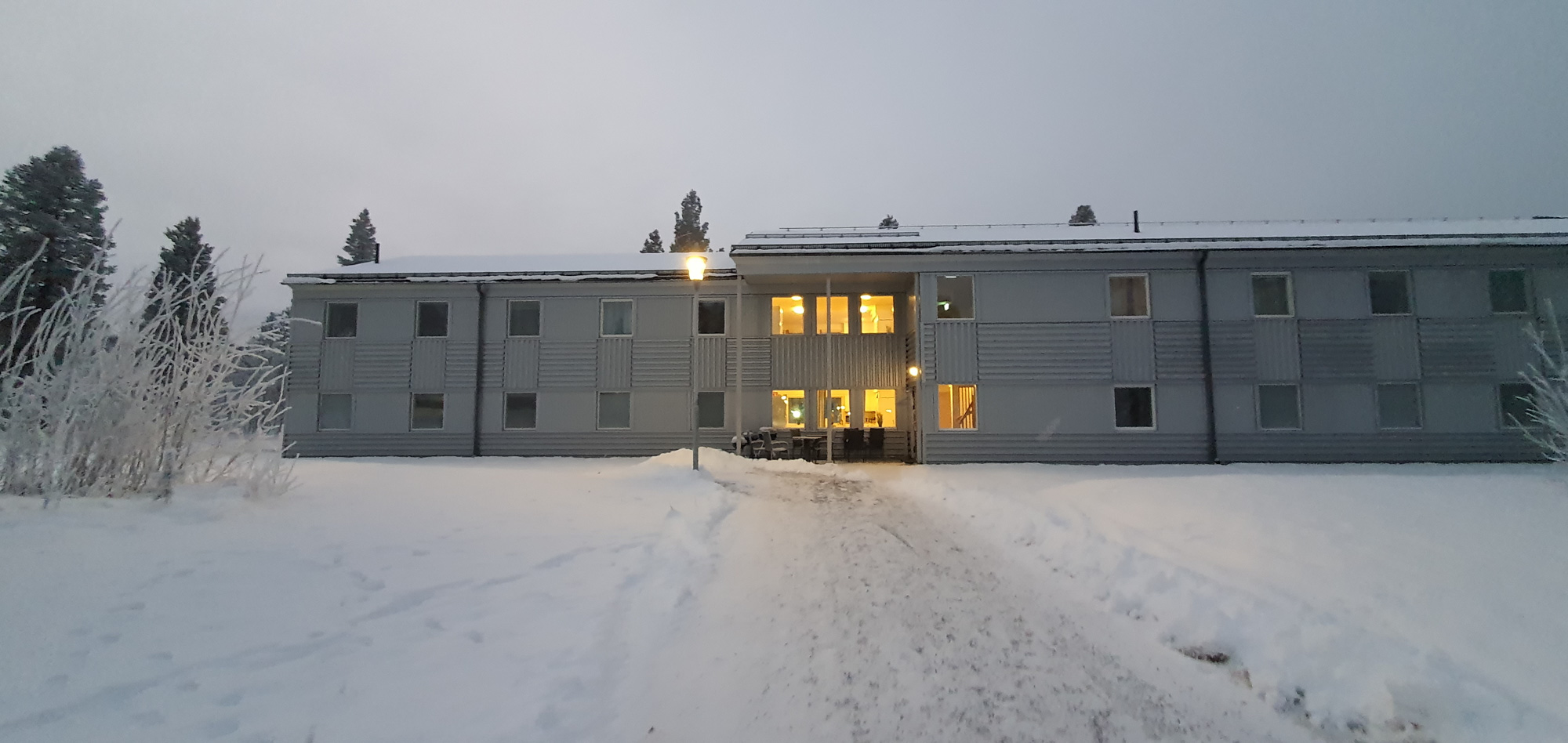
The hotel — more like a dorm — performed as a beacon of civilization and comfort… and as one of the few facilities that could be photographed.
About Esrange, An Arctic Circle Space Center From A Bond Movie
This launch is organized and performed by SSC, the Swedish Space Corporation, the government-owned company that provides space subsystems, space and satellite operations, rocket and balloon systems including experimental equipment, launch services, aerospace engineering services, and airborne maritime surveillance systems. In other words, the SSC operates a proper space center in Esrange, in the middle of nowhere. Photography was strictly limited on the premises, as there is a large variety of equipment in use that is confidential in its design, setup, and operation. Anytime someone wanted to take pictures, somebody with the correct authorization had to accompany them. Likewise, we all received electronic badges, barring access to buildings we were not supposed to enter.
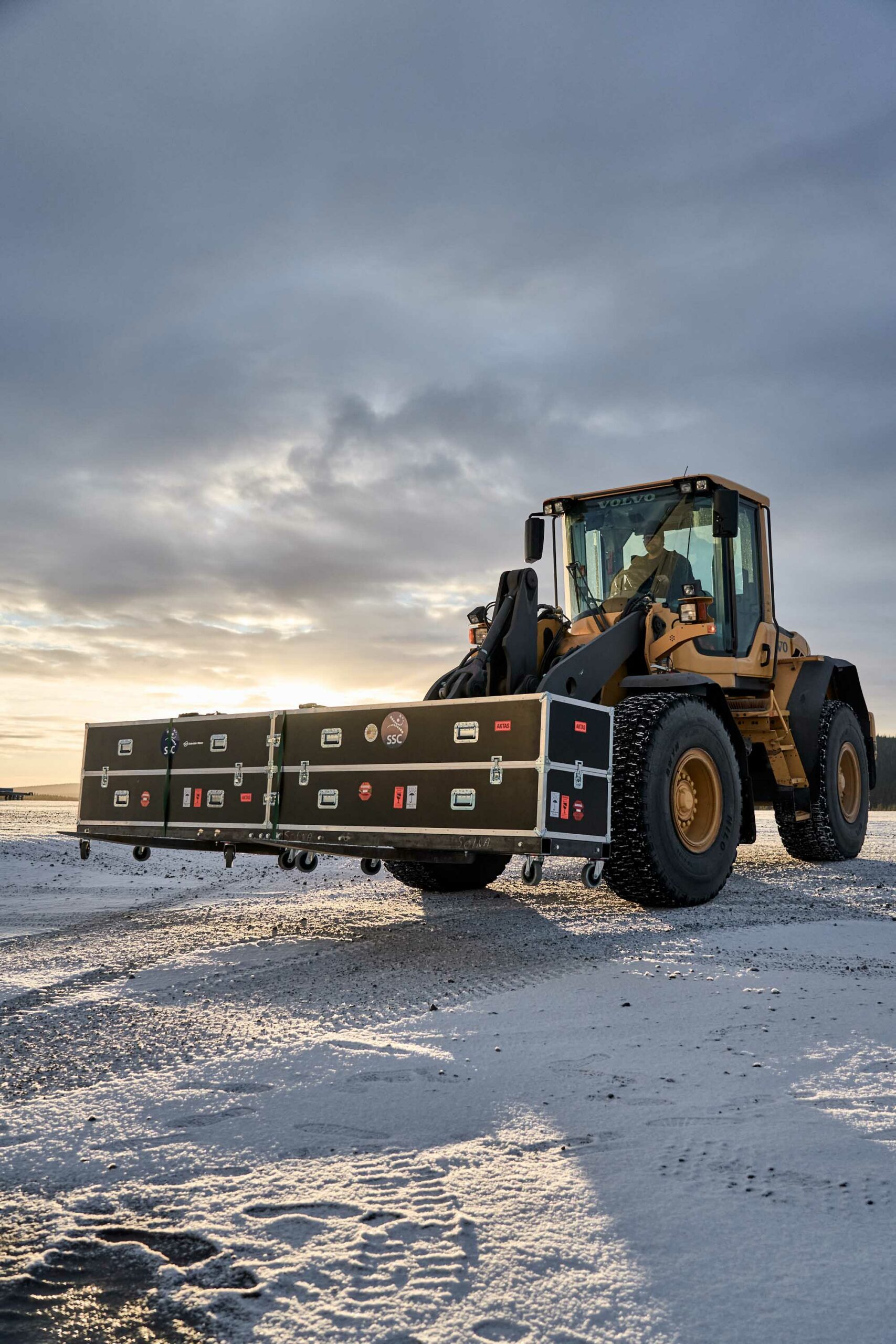
Parts of the rocket moved around at Esrange — carefully photographed against a blank background, in line with the facility’s confidentiality guidelines.
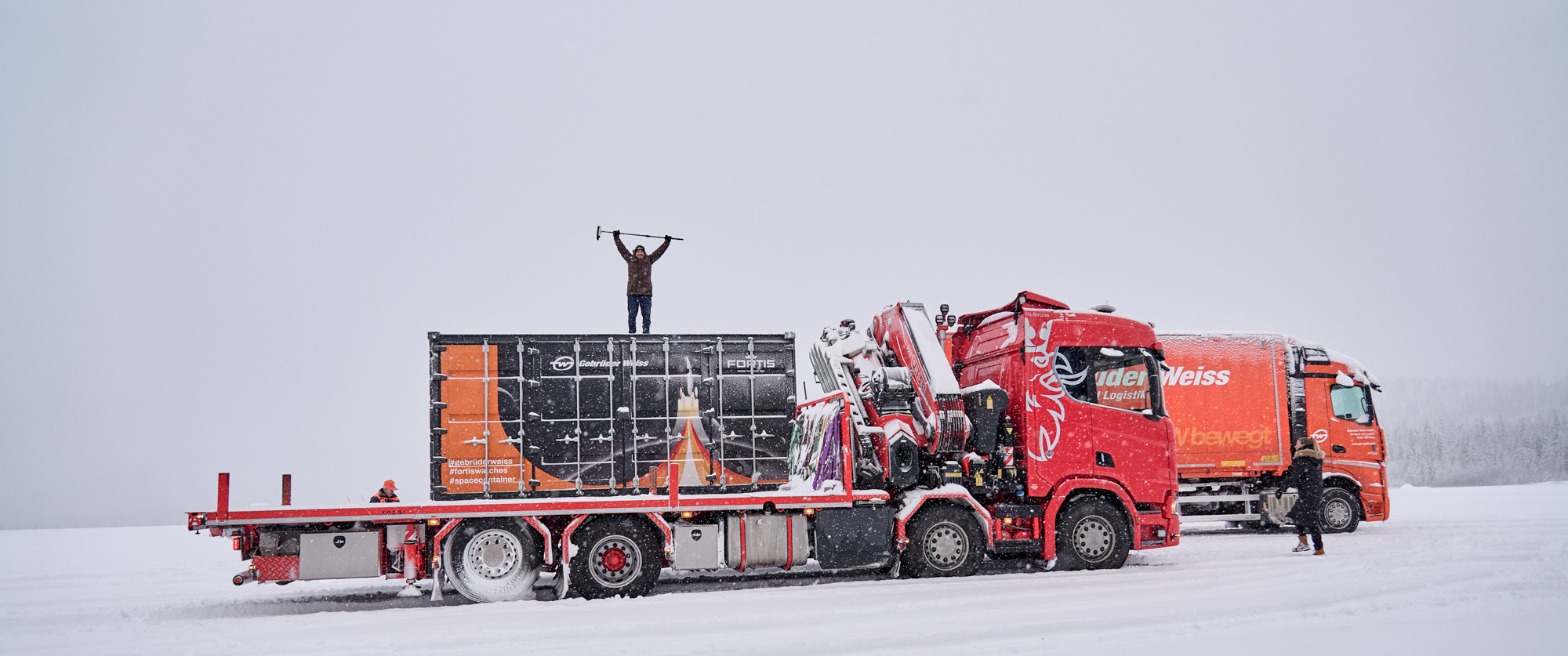
Fortis teamed up with Gebrüder Weiss and had its own container booth delivered and installed within the rocket hangar. Seen here, a Fortis team member cleaning the container in high spirits.
About that “RADIO SILENCE” notification shown on displays around the facility, as well as warned about via loudspeakers — this happened multiple times over our four-day stay, and it was necessary because the rocket itself was going to be launched using radio signals. Forget about a comically long fuse line spitting sparks, running into the blunt end of the rocket. At certain stages of the build and launch pad installation process, the rocket had to be primed, which meant that a stray signal from some sort of a transmitting device — of which one uses many during daily work and life — could unintentionally fire the rocket.
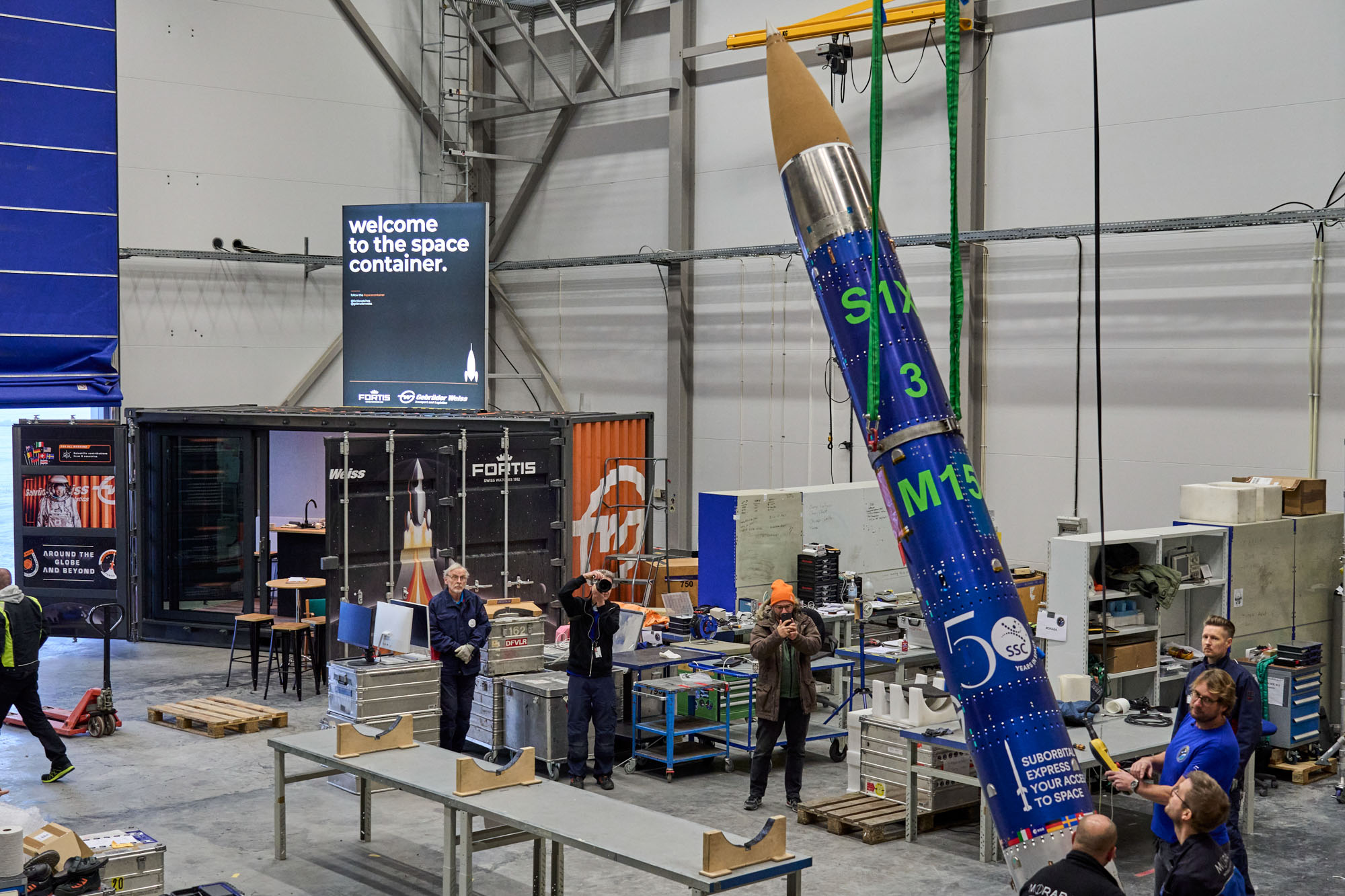
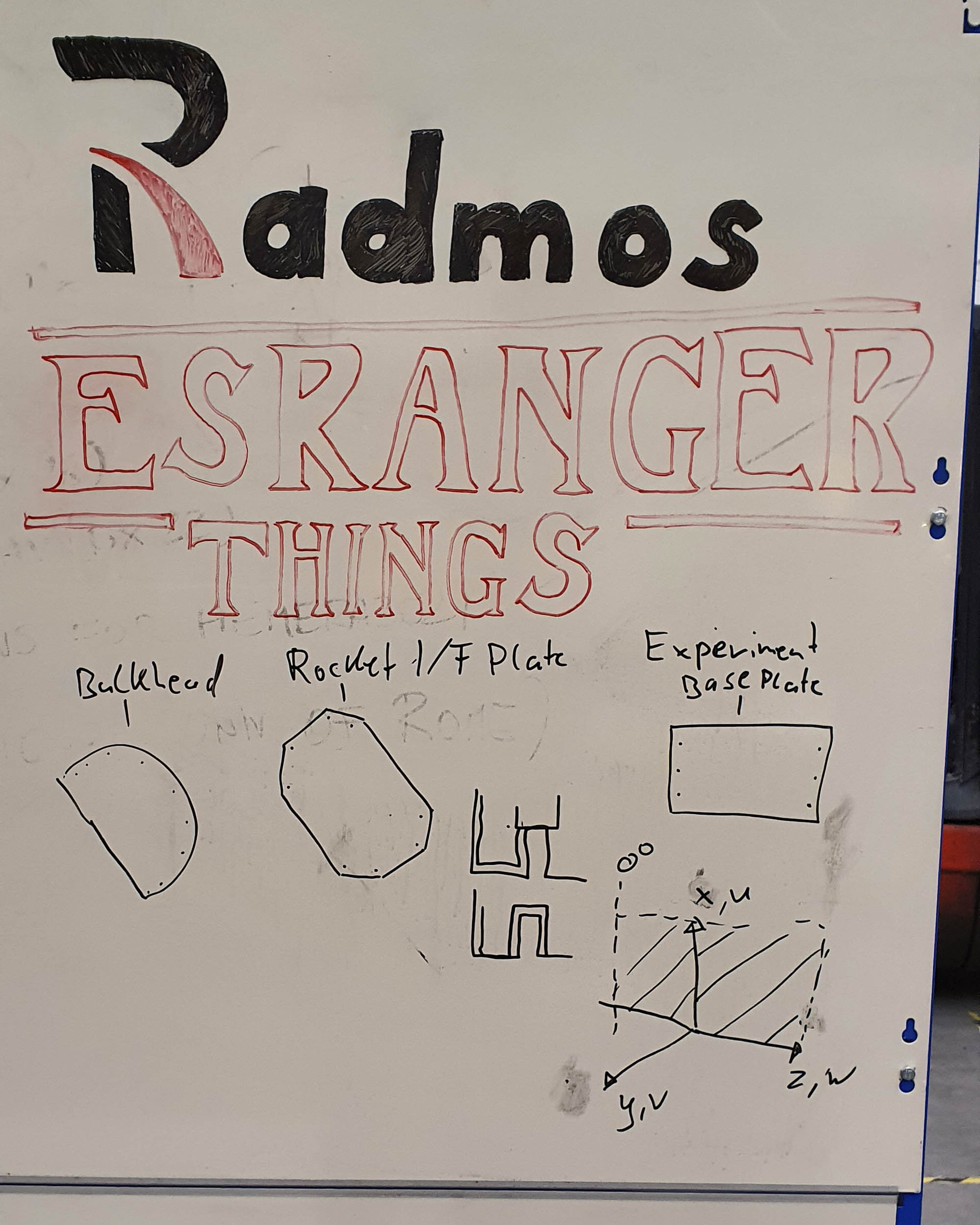
Some shockingly basic engineering drawings topped with an uncharacteristic burst of fun and creativity, right in the middle of the rocket hangar.
As many as eight different danger zones were lined out in Esrange — basically, they could have said the entire place was a danger zone — with varying levels of security clearances required to enter any of these. Everyone wishing to enter the Esrange Space Center first had to participate in an online safety training where, among other things, we learned that smoke may be seen and sirens may be heard simultaneously, but that is most certainly part of the normal operation of the Space Center, and there is no need to worry. How to differentiate between bad smoke and cause-for-concern sirens, and those occurring during normal operations, we were not told. The thing is, one probably knows when something goes wrong here.

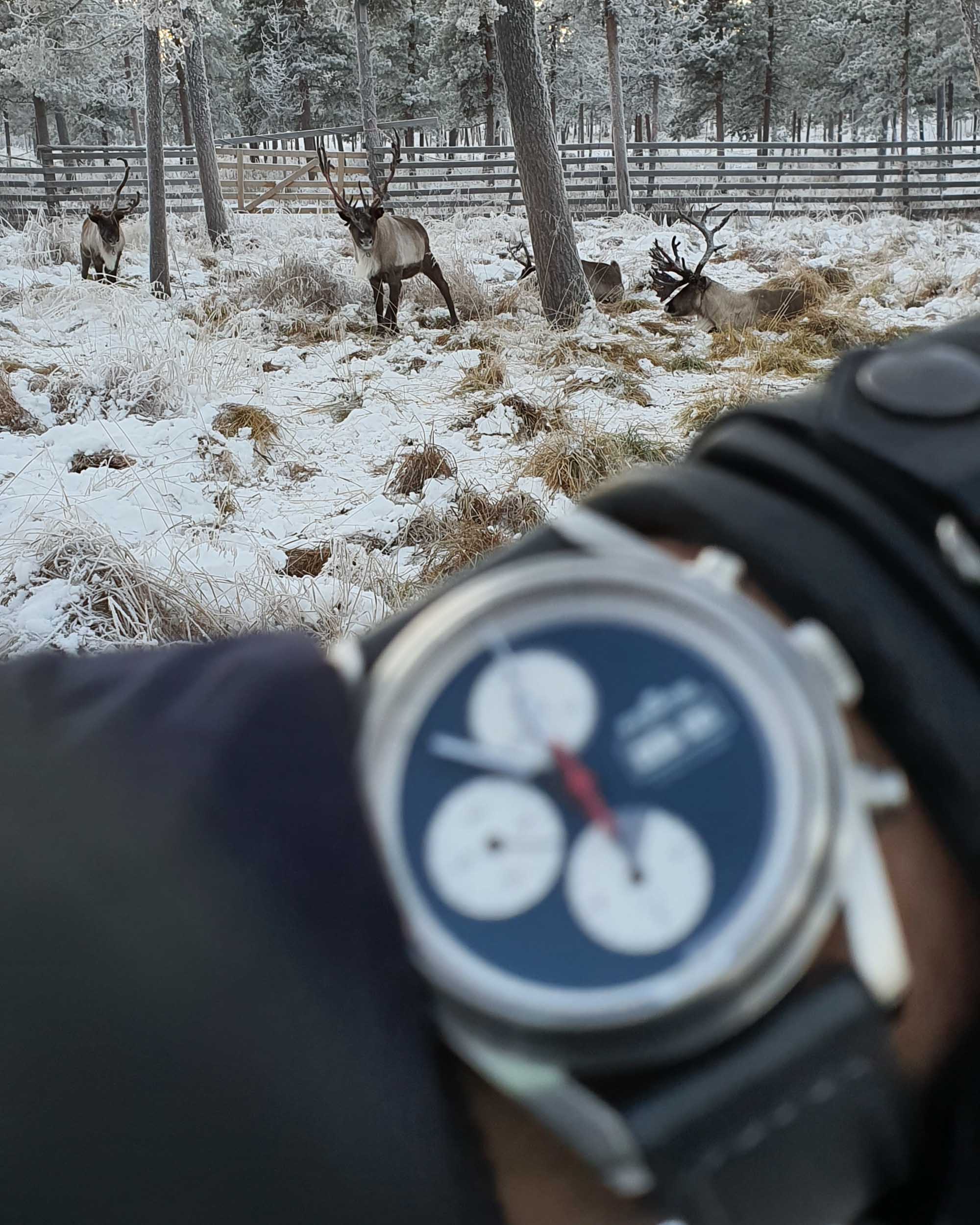 As life in this part of the Arctic Circle is concerned, it’s tough but manageable — and beautiful, for all four of those glorious hours when there’s any amount of daylight. It is virtually a two-hour-long sunrise, and a two-hour-long sunset, with the consequently beautiful, paradoxically warm colors painting up the sky, while the sun barely peeks out from above the trees at noon. “Snow White” also gets a new meaning here. There is no amount of fresh snow falling on our metropolises that would ever appear as blindingly and perfectly white, as even days-old snow does here. Looking out through a car’s window, or going for a brief stroll, one will see the world in crisp white and shades of brown and gray against the backdrop of red, orange, purple, and pink skies. There are reindeer and the odd bird, here and there, too, reminding us how useless and helpless we humans can be when we are out of our cushy comfort zones. Cars that started at the first press of a button, with lava-like heated seats, were much appreciated.
As life in this part of the Arctic Circle is concerned, it’s tough but manageable — and beautiful, for all four of those glorious hours when there’s any amount of daylight. It is virtually a two-hour-long sunrise, and a two-hour-long sunset, with the consequently beautiful, paradoxically warm colors painting up the sky, while the sun barely peeks out from above the trees at noon. “Snow White” also gets a new meaning here. There is no amount of fresh snow falling on our metropolises that would ever appear as blindingly and perfectly white, as even days-old snow does here. Looking out through a car’s window, or going for a brief stroll, one will see the world in crisp white and shades of brown and gray against the backdrop of red, orange, purple, and pink skies. There are reindeer and the odd bird, here and there, too, reminding us how useless and helpless we humans can be when we are out of our cushy comfort zones. Cars that started at the first press of a button, with lava-like heated seats, were much appreciated.
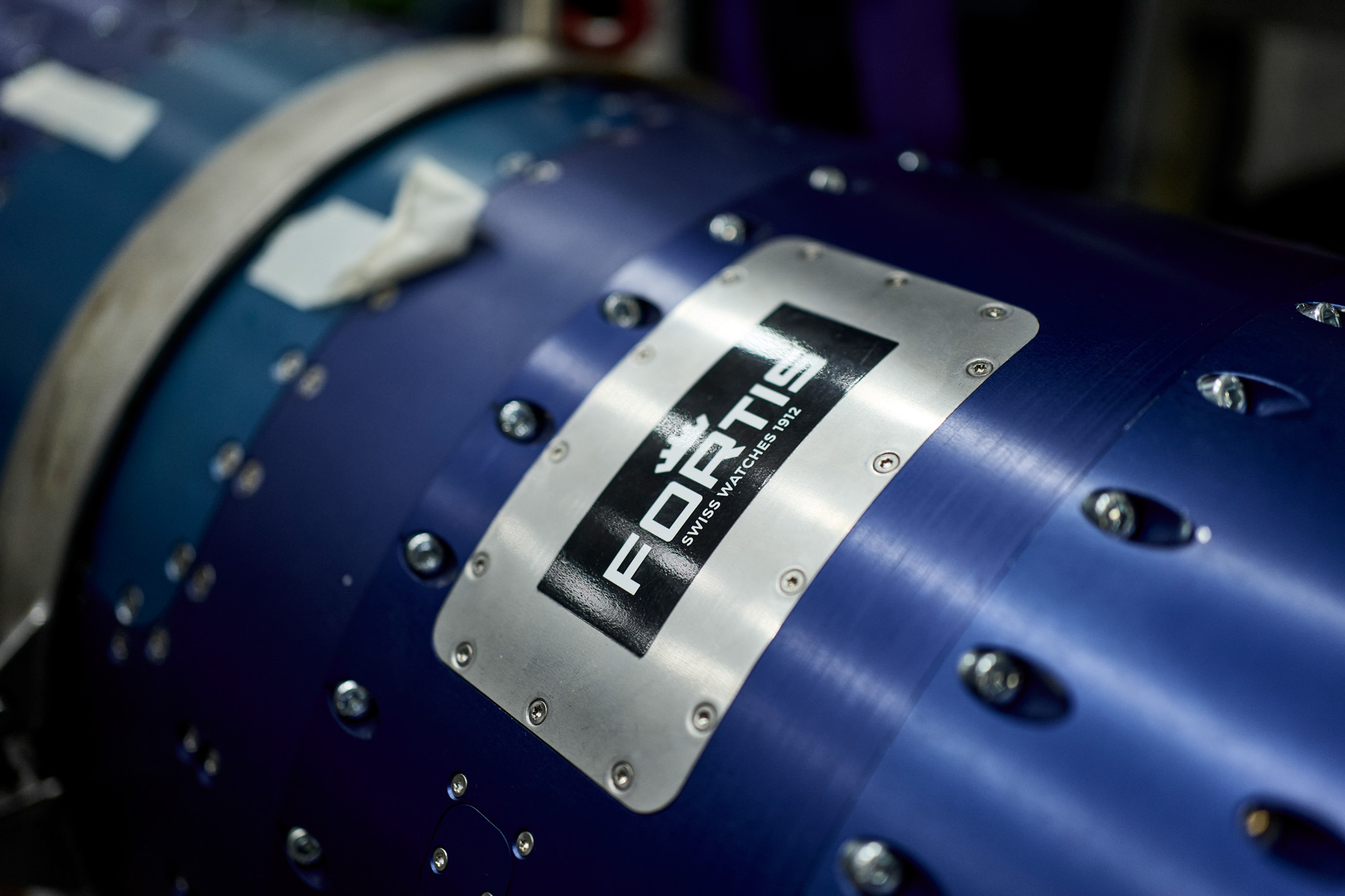
When screws are not just for design: the Fortis container, with 13 Stratoliner watches inside, sealed and installed in the S1X rocket.
Bolting 13 Watches To A Rocket & Launching Them Into Space
To call the SubOrbital Express S1X-3 M15 a “rocket” would be no overstatement. The 12.8m tall (42ft), 58cm wide (23in) rocket was built to have 42 seconds of total burn time, with a flame apparently brighter than the sun, hauling the 2,639kg (5,818lb) S1X-3 towards the sky faster than any piloted space flight will ever go — for the simple reason that humans could not take the powerful g-forces the S1X-3 generates during takeoff. The rocket goes 260km (162 miles) above sea level and exposes its payload experiments to six minutes of microgravity. The SubOrbital Express 3 is the fifteenth in a series of MASER rockets launched from Esrange since this rocket program started in 1987. MASER stands for “Materials Science Experiment Rocket,” and the European Space Agency (ESA) is the program’s largest customer, funding several of the experiments on board. Among the 12 different payloads, there are scientific experiments that will investigate everything from stem cells for diabetes research to particle research that will provide answers about the origin of planets to the durability of future space-certified wristwatches.
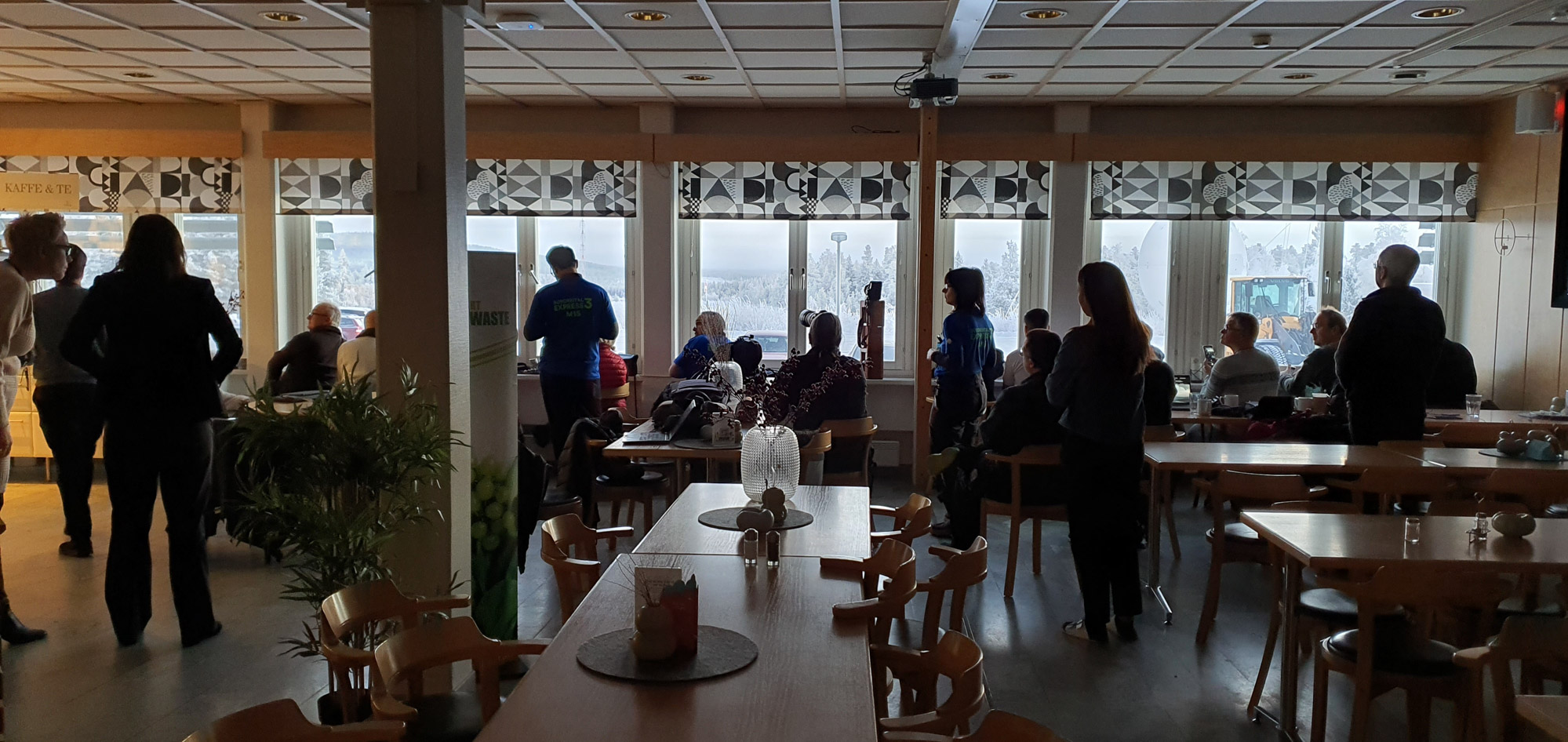
Some participating crew members settle in at the canteen, with a view of the launch, while others are in designated areas outside — for around two hours, in the freezing cold, without the option to change their minds or their location.
Members of the various teams were told they could either stay inside the canteen or take a car and go to a designated area where they’d have to stay for at least two hours, potentially more, in case there was an unexpected delay. The Esrange Space Center duly reminded everyone of that one time when just one person could not be accounted for — they did not know where they were — at the time of the launch, and, for safety reasons, the launch had to be delayed. Nobody wants to be that person who forces so many others to stay for however much longer. The weather, as well as other clearances, had to come together in just the right way to allow for the launch to happen. Even if the rocket could be launched, there still had to be enough daylight and nice enough weather for helicopters to fly — the payload would return to the vicinity of Esrange within just 10 minutes of the launch, but it was to be located and recovered by helicopters. If the weather is poor, the launch is delayed — and the Arctic Circle, with its strong winds and haze, is rarely kind to helicopters.
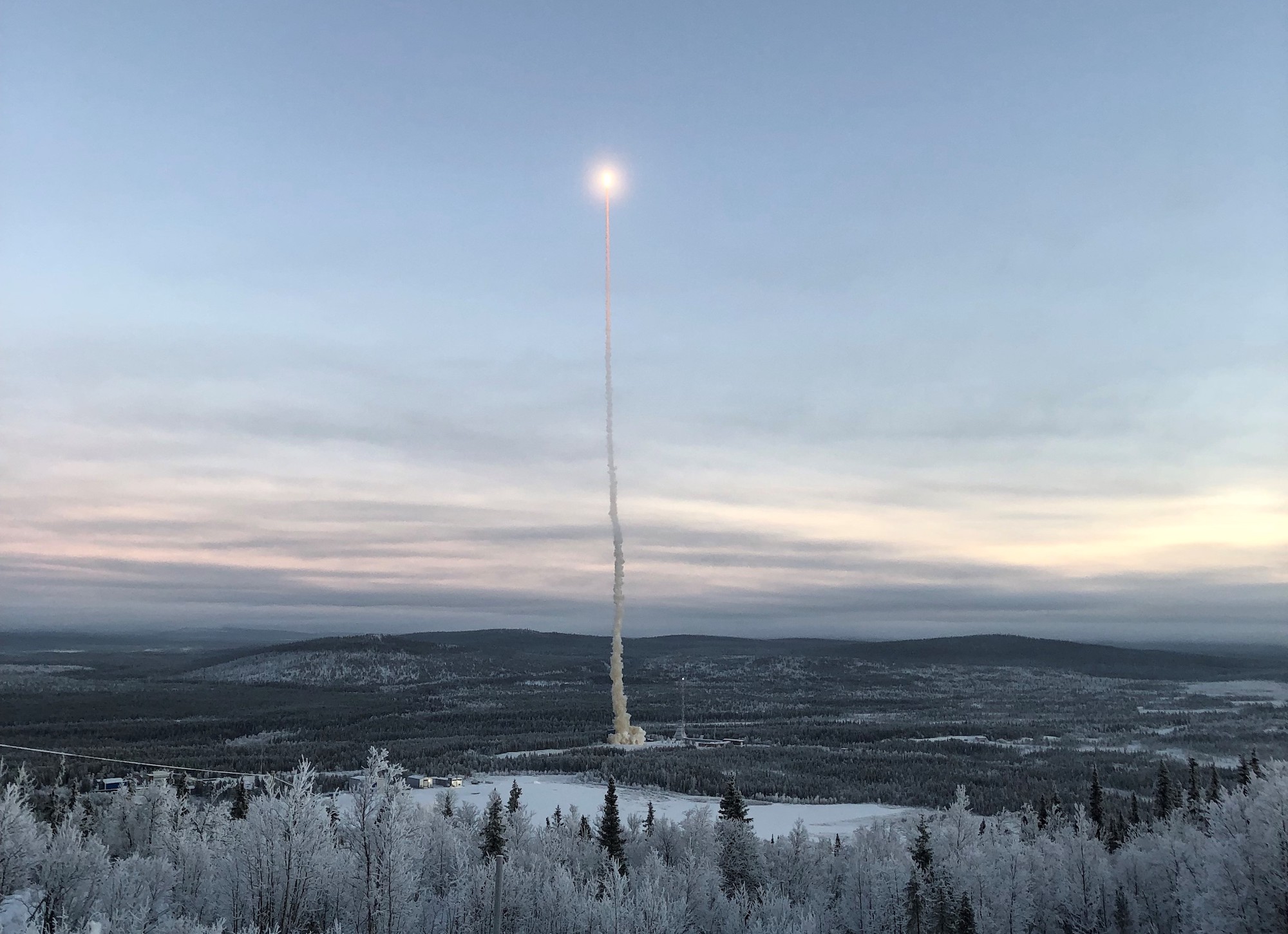
There are 13 watches bolted to that rocket, propelled by a flame that is actually brighter than the sun.
As everyone inside and out had taken their spots, an announcement on the loudspeakers informed all that “The countdown is stopped at -1 hour until further notice.” The tension, already tangible in the room, grew in Hollywood fashion — for us, with a booked flight home, waiting for another opportunity to launch rendered our journey back to more hospitable parts of the world ever more difficult to picture. Thankfully, whatever the hiccup was with what is essentially a controlled explosion, it got resolved soon enough and the countdown continued. And, just like in the movies, a voice on the loudspeakers counted down the last few minutes, and then… 40… 30… 20… 10, 9, 8… And so on, and before we knew it, the product of 2.5 years of blood, sweat, and tears took off from Earth like gravity never even existed. Burning with an incredibly white and bright flame, the rocket appeared to have set off at hundreds of miles an hour, quickly disappearing from view, leaving a thin trail of cloud behind.
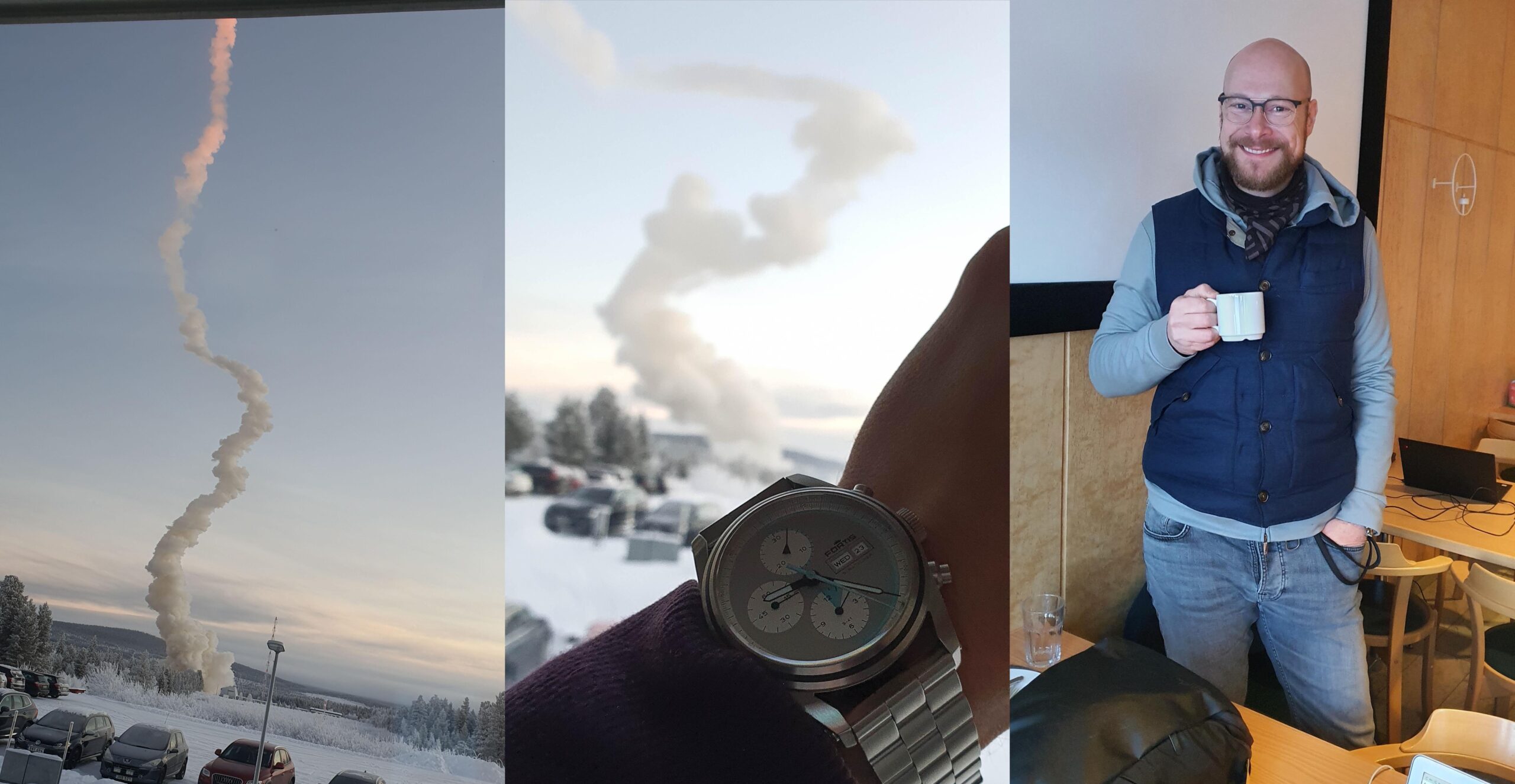
The aftermath of the launch — winds blew the trail around, but the rocket flew straight and true. A relieved Jupp (owner of Fortis) was seen right after the launch.
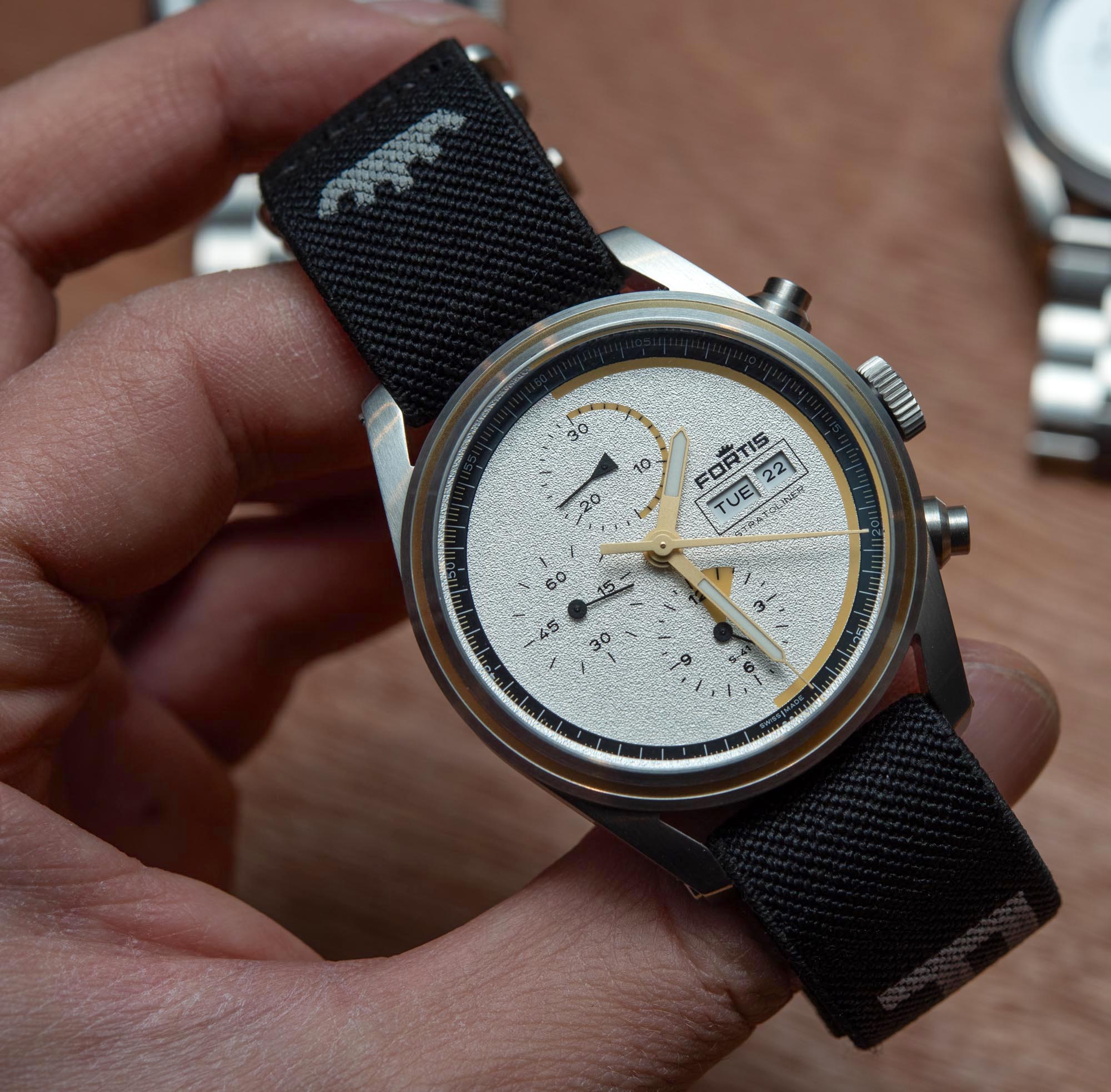
About The Fortis Stratoliner
Well, first of all, Fortis claims that, “Over the time of 14 days within the rocket, an immersive rocket launch with all the forces, and some harsh impact when it returned to earth, there were no deviations in the accuracy and all watches are still on chronometer standards.” The 13 special-edition Fortis Stratoliner watches that completed this journey inside the capsule of the S1X-3 suborbital rocket will be available for purchase, with further details pending. Differentiated from the regular Stratoliner, these watches have a solid gold piece running through the bezel, and the hands and lumed semi-circles of the dial are also golden — and, of course, these watches will be certified as space-proof, having successfully survived the crushing g-forces and immense vibrations of a rocket launch, as well as the drastic drop and rise in ambient temperature, and a microgravity environment. According to Fortis, the real test for them was the takeoff itself; Fortis wanted to certify that its Stratoliner could survive the vibrations and g-forces of the takeoff, knowing that whatever was waiting for them in space would be a walk in the park by comparison.
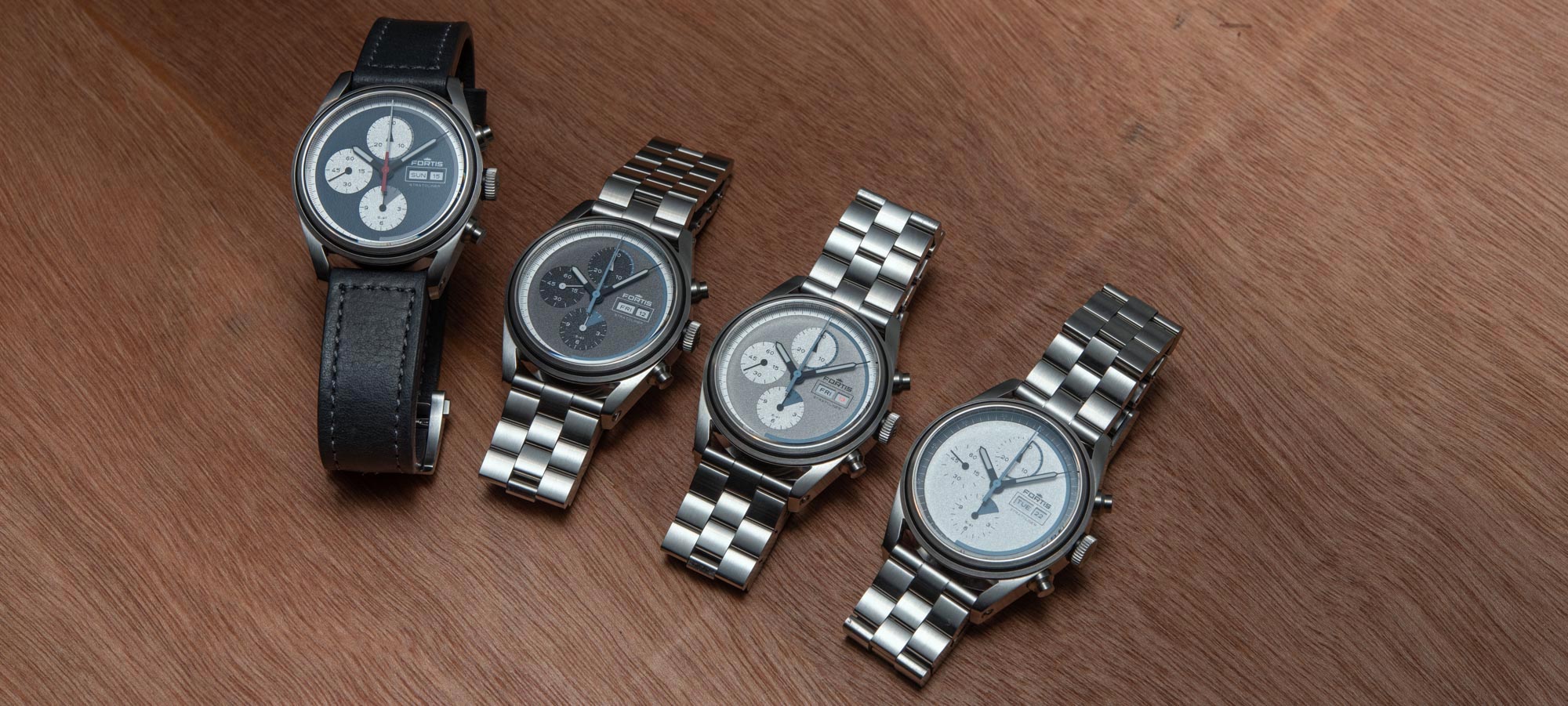
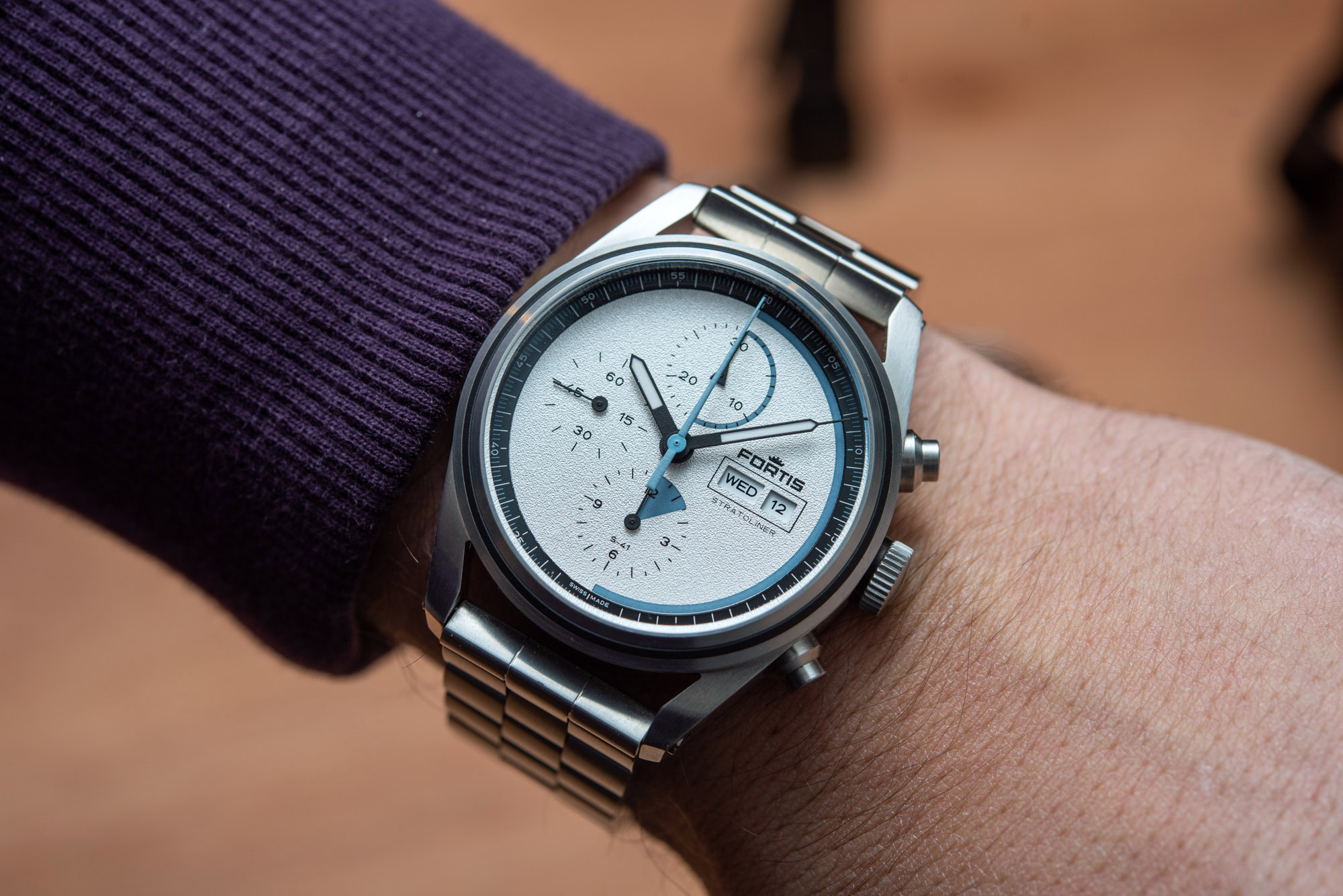
The Stratoliner is available with a variety of dial combinations, with this polar white and blue dial being perhaps the best among them as far as the ideal blend of coherence and uniqueness is concerned. Fortis is proud of how thin the dial is, and the subdials are flat, not recessed; the date and day displays both appear more legible than usual, falling closer to the crystal. The hands are large and highly legible, thanks to strong luminescence and a black outline, with the syringe-style minute hand accurately telling the minutes on an elaborate scale. Although the busy seconds scale is ideal for the accurate reading of the chronograph seconds, it complicates telling the minutes. As there are no large hour markers at every fifth position, telling the time with to-the-minute accuracy will take a bit of getting used to.
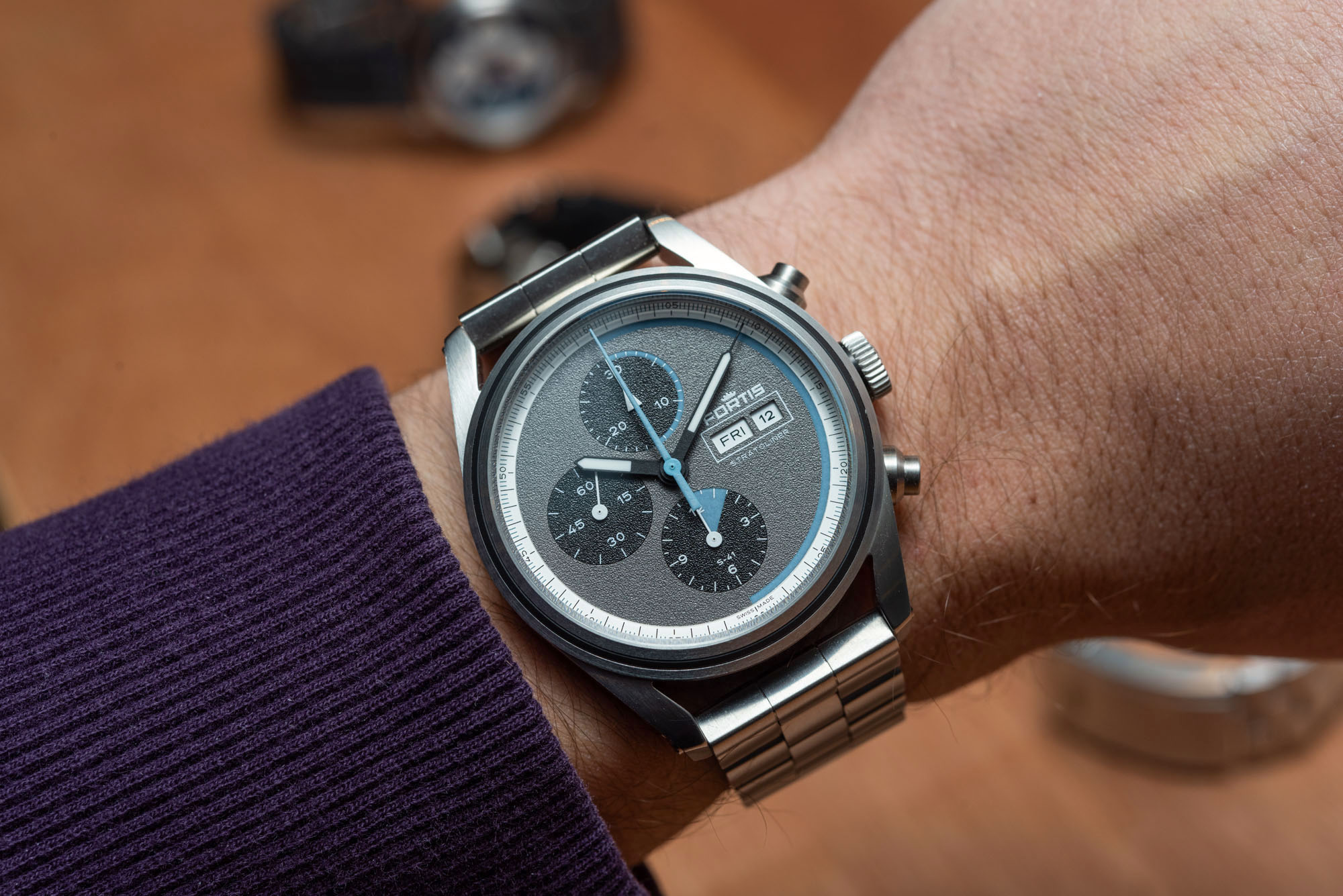
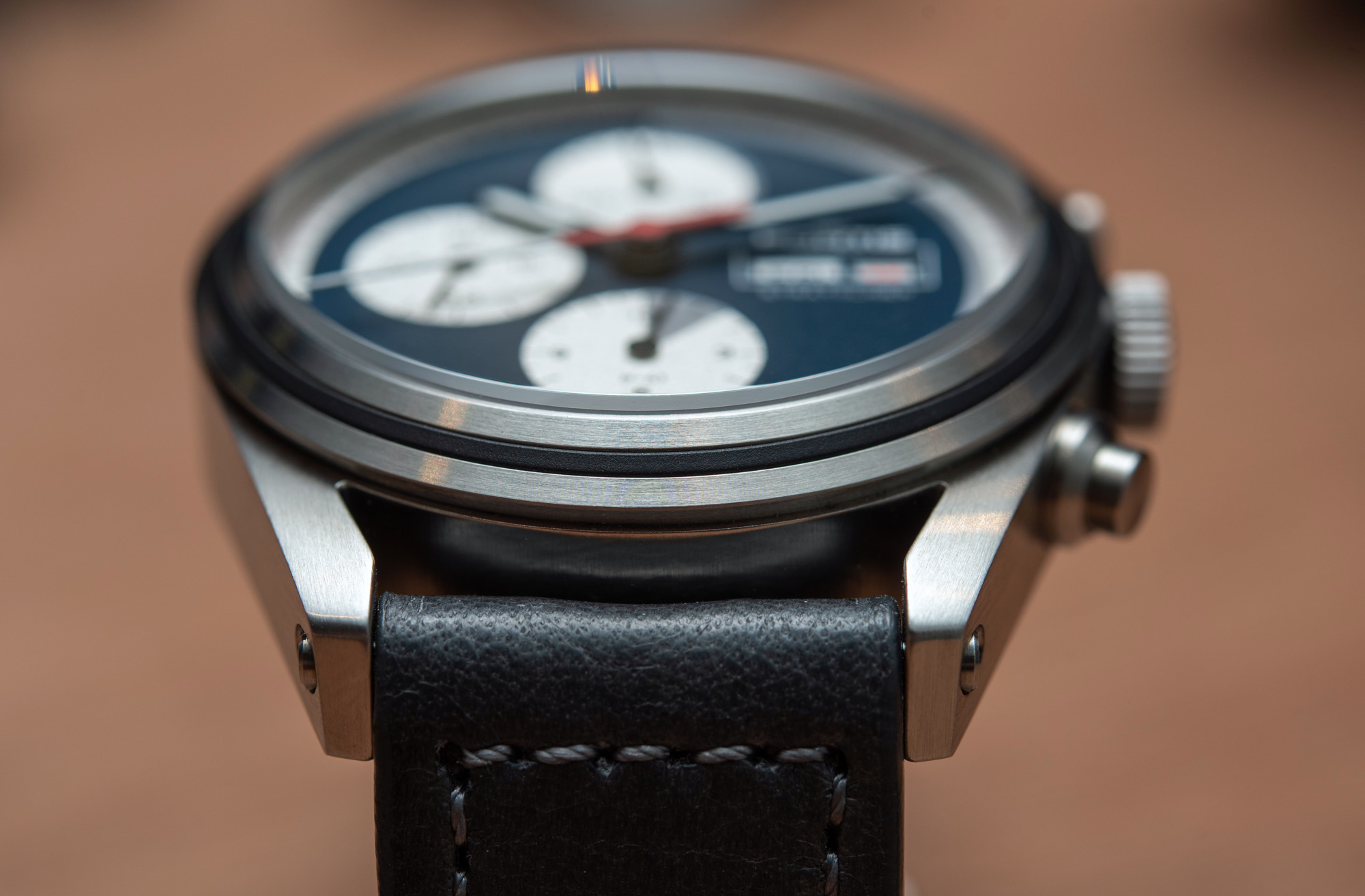
The 41mm wide case is in recycled stainless steel, with an aesthetic that is best appreciated when viewed in the metal. The blocky lugs operate with strong curves to create the Stratoliner silhouette, completed with two inverted pushers and a bezel split in half by a rubber strip. Just like the dial, the case also looks simple — arguably too simple — at first glance, but is the sort of design that will reveal new, thoughtfully adjusted details through extended wear. The case and bracelet feel like they will last a very long time — and not just because of their blocky design, but thanks to their fit and finish, too. A case in point is the screw-down crown with three gaskets, and the precise fit of the pushers guarantees 200m (660ft) of water resistance, as befits a watch made under the supervision of a true watch enthusiast.
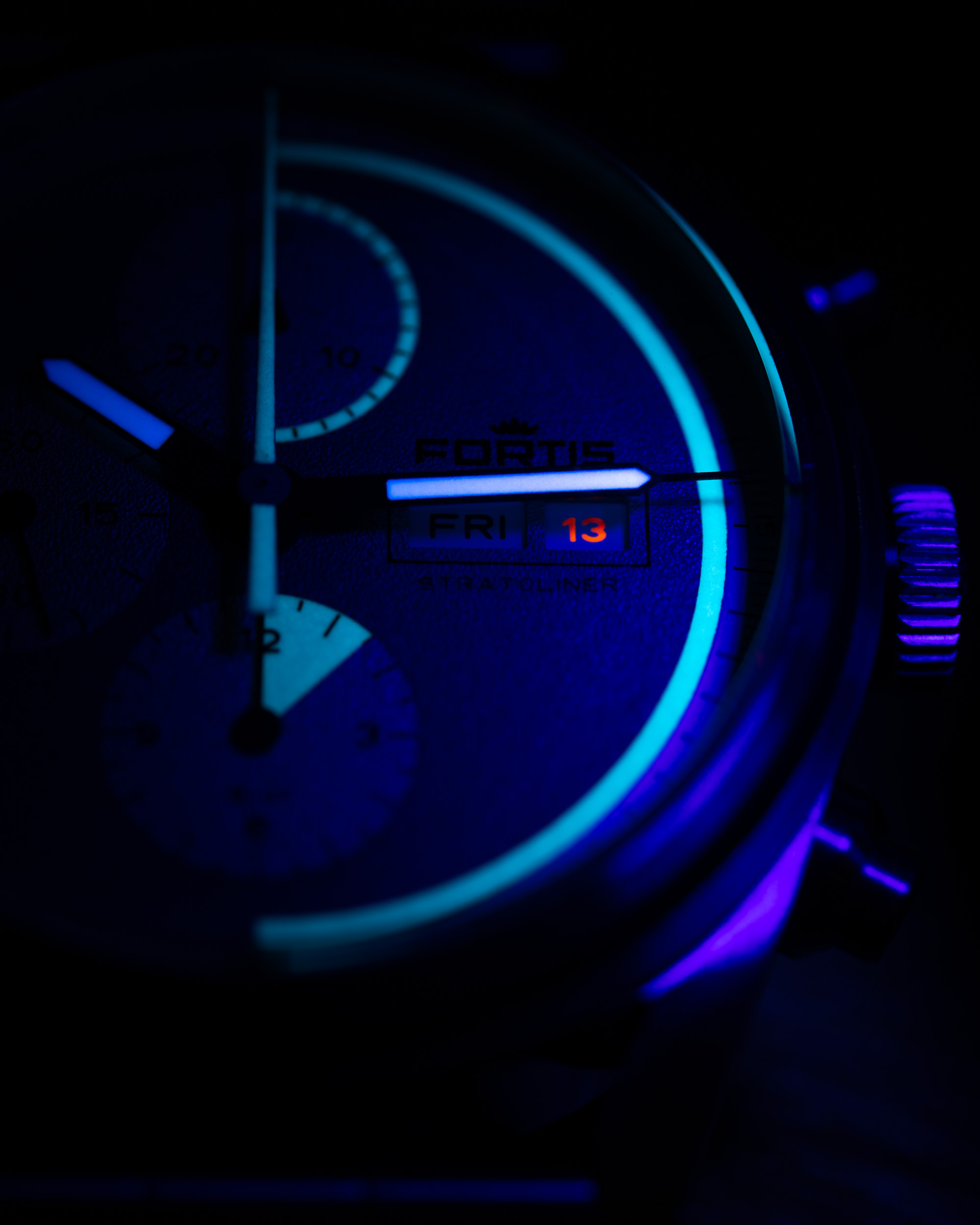
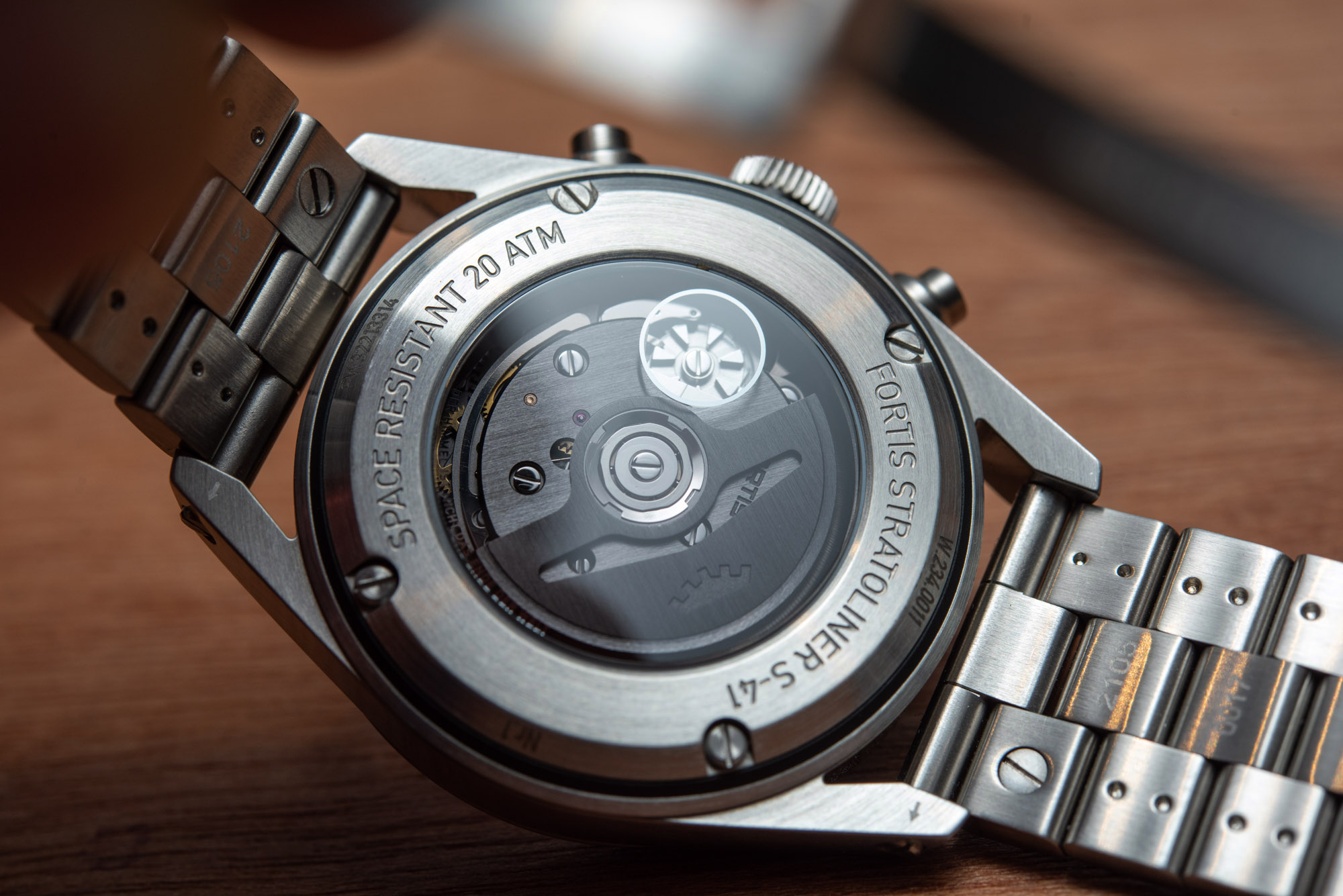
The Fortis Stratoliner is powered by the Fortis Werk 17 — note how it’s not a mouvement, in French, but werk, in German, hinting at the brand’s Grenchen base. And if you are a die-hard Fortis fan, you’ll call this a Werk siebzehn (German for 17). A “stratosphere-tested” manufacture caliber, the Werk 17 is made in collaboration with high-end movement maker La Joux-Perret, while the non-chronograph Fortis Werk 13 is made by the Rolex-Tudor-Chanel-owned Kenissi Manufacture. Werk 17 combines 60 hours of power reserve with a bearing-mounted self-winding system and a column wheel-operated chronograph.
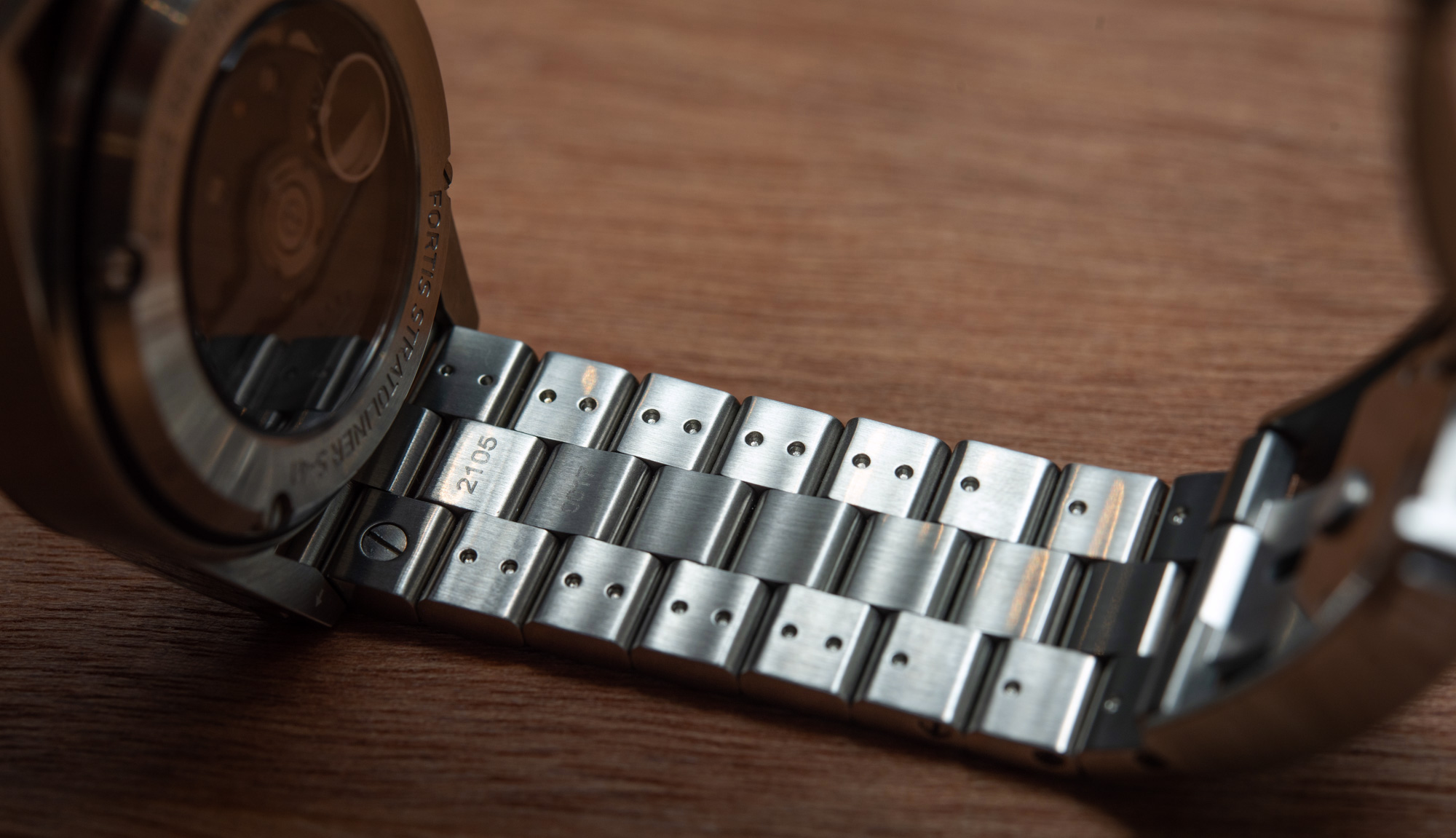
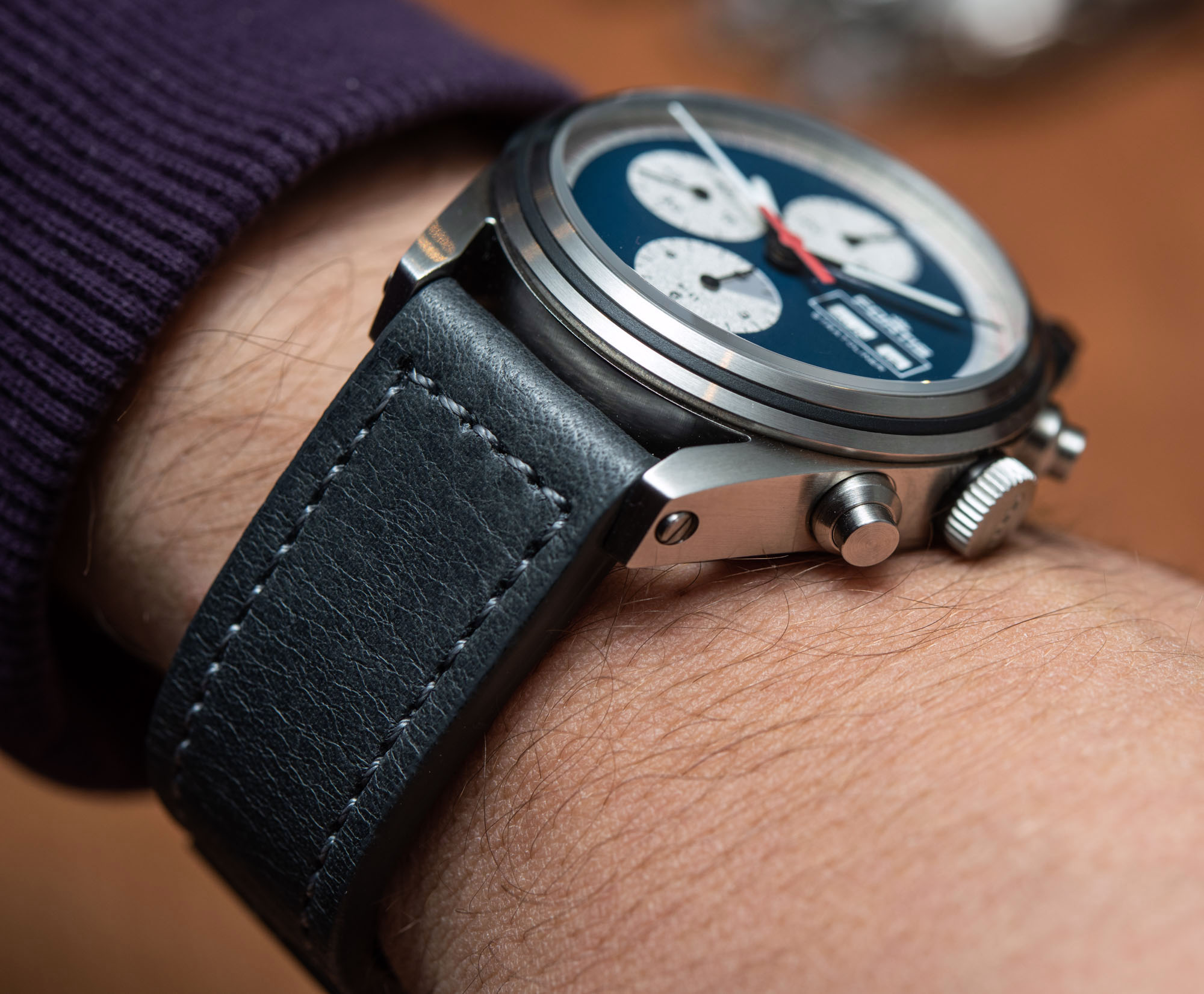
In a charmingly Germanic fashion, just about everything, down to the individual bracelet links and the double-layered straps, is chunky about the Fortis Stratoliner, and yet it isn’t cumbersome. It is no Cartier Tank on the wrist, that is for certain, but the target demographic here is apparently after a package that has design refinement shining through a thick layer of robustness and durability. And that, frankly, is a prerequisite for a watch that wants to be space-certified.
The Fortis Stratoliner is priced at 5,050 Swiss Francs, while each of the 13 the rocket-tested Fortis Stratoliner special edition pieces will be a shockingly reasonable €8,450. To learn more, visit the brand’s website.

